Forums
- Forums
- Axis And Allies Forum
- General Discussion
- Aviation News
Aviation News
Post a reply
- Go to Next topic
- Go to Welcome
- Go to Introduce Yourself
- Go to General Discussion
- Go to Screenshots, Images and Videos
- Go to Off topic
- Go to Works in Progress
- Go to Skinning Tips / Tutorials
- Go to Skin Requests
- Go to IJAAF Library
- Go to Luftwaffe Library
- Go to RAF Library
- Go to USAAF / USN Library
- Go to Misc Library
- Go to The Ops Room
- Go to Made in Germany
- Go to Campaigns and Missions
- Go to Works in Progress
- Go to Juri's Air-Raid Shelter
- Go to Campaigns and Missions
- Go to Works in Progress
- Go to Skinpacks
- Go to External Projects Discussion
- Go to Books & Resources
-
 Main AdminEAST CHINA SEA (March 16, 2017) An AV-8B Harrier, assigned to the "Tom Cats" of Marine Attack Squadron (VMA) 311, takes off from the flight deck of amphibious assault ship USS Bonhomme Richard (LHD 6) during an air assault exercise in support of amphibious integration training (AIT). AIT is designed to integrate all elements of the Bonhomme Richard Expeditionary Strike Group (BHR ESG) and 31st Marine Expeditionary Unit (MEU) to test their ability to plan for and execute mission essential tasks. Bonhomme Richard, flagship of the BHR ESG, with embarked 31st MEU, is on a routine patrol, operating in the Indo-Asia-Pacific region to enhance warfighting readiness and posture forward as a ready-response force for any type of contingency. (U.S. Navy photo by Mass Communication Specialist Seaman Apprentice Jesse Marquez Magallanes/Released)
Main AdminEAST CHINA SEA (March 16, 2017) An AV-8B Harrier, assigned to the "Tom Cats" of Marine Attack Squadron (VMA) 311, takes off from the flight deck of amphibious assault ship USS Bonhomme Richard (LHD 6) during an air assault exercise in support of amphibious integration training (AIT). AIT is designed to integrate all elements of the Bonhomme Richard Expeditionary Strike Group (BHR ESG) and 31st Marine Expeditionary Unit (MEU) to test their ability to plan for and execute mission essential tasks. Bonhomme Richard, flagship of the BHR ESG, with embarked 31st MEU, is on a routine patrol, operating in the Indo-Asia-Pacific region to enhance warfighting readiness and posture forward as a ready-response force for any type of contingency. (U.S. Navy photo by Mass Communication Specialist Seaman Apprentice Jesse Marquez Magallanes/Released)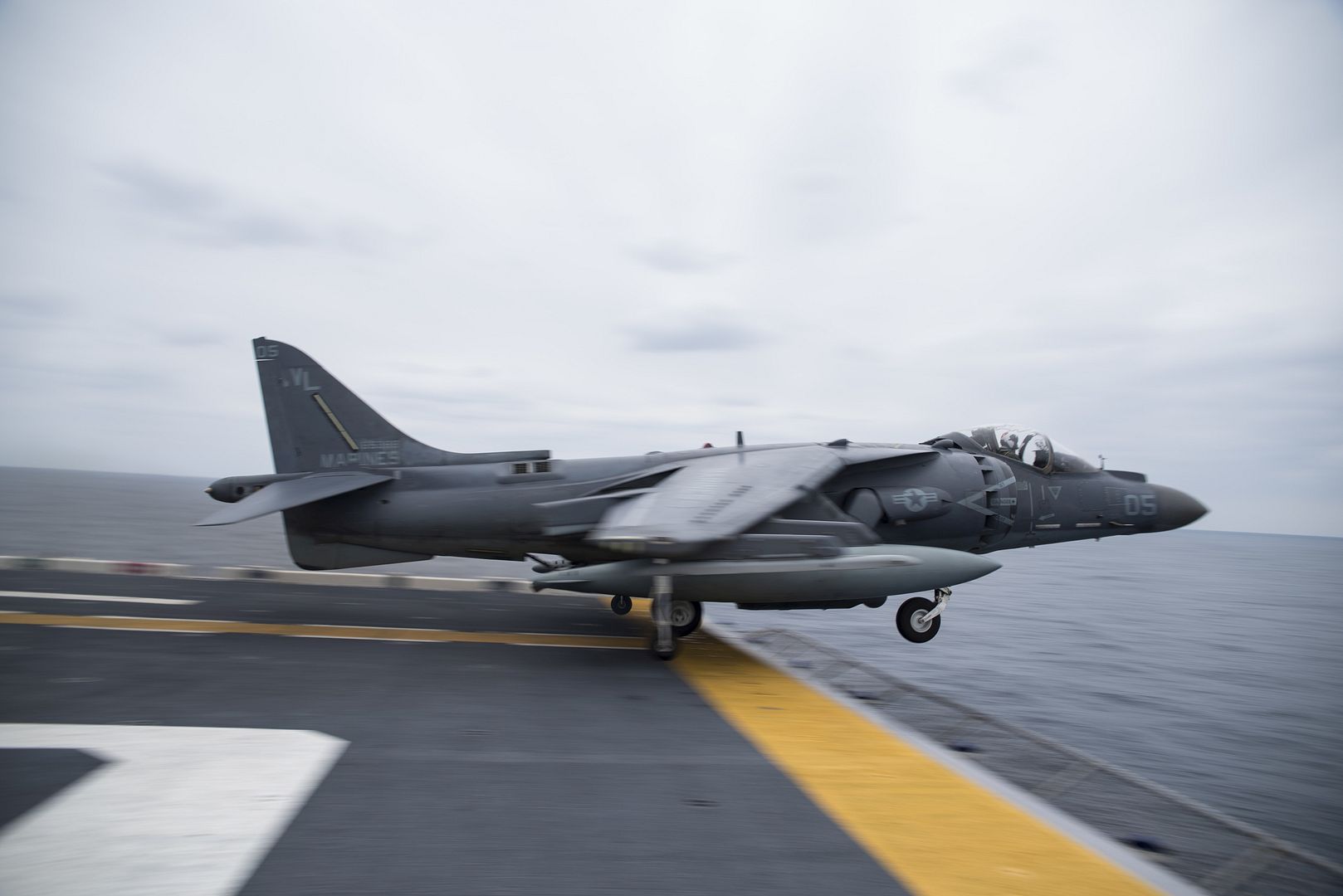
A KC-10 Extender is parked on the ramp as a C-5M Super Galaxy takes off at Travis Air Force Base, Calif., Mar. 16, 2017. (U.S. Air Force photo by Louis Briscese)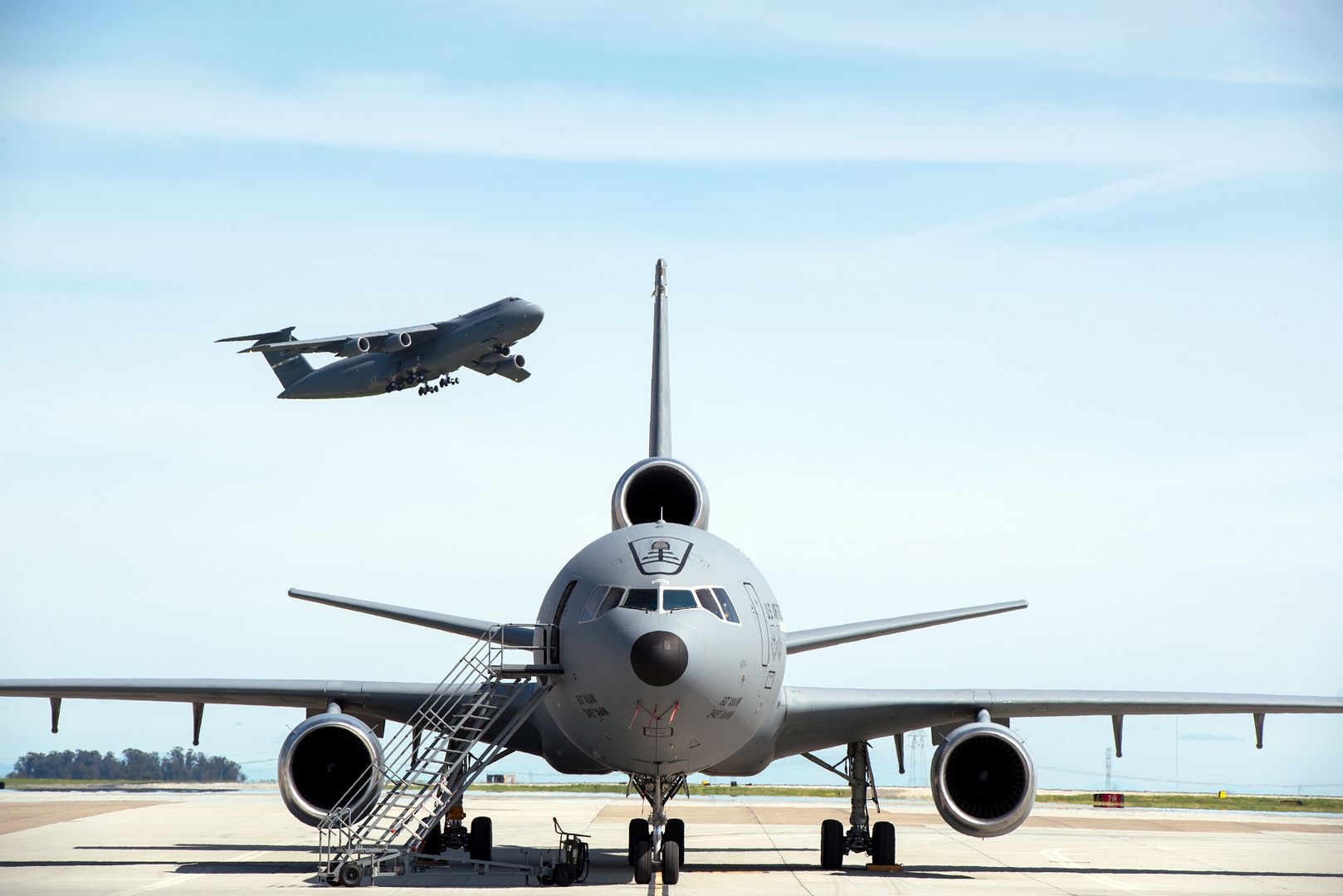
The control panel of a HH-60G Pave Hawk sits on standby before a tour March 15, 2017, at Kadena Air Base, Japan. Members of the sister service visited Kadena as part of a week-long course in professional military education. The group visited several units across the base, including the 33rd Rescue Squadron. (U.S. Air Force photo by Airman 1st Class Quay Drawdy)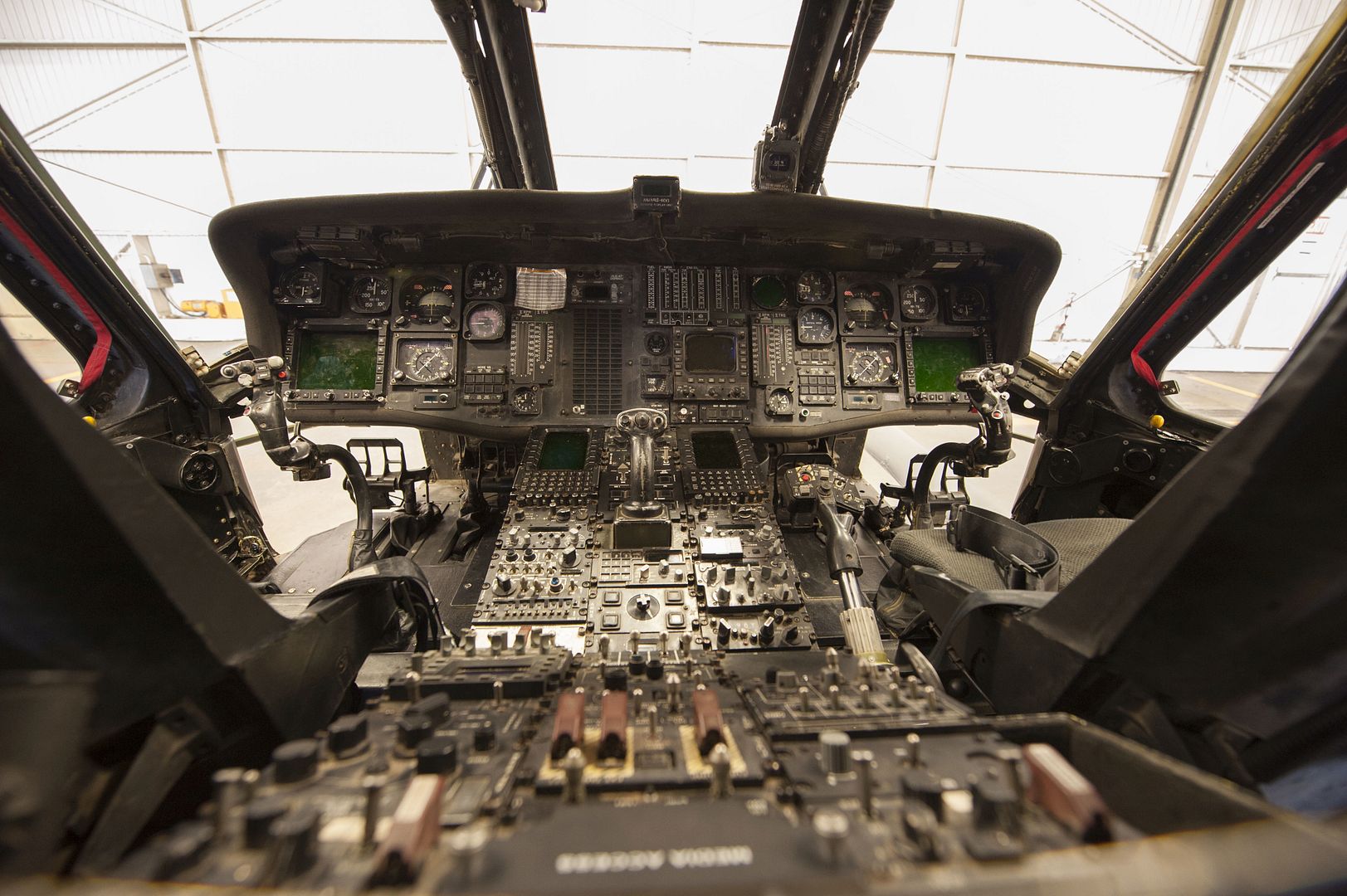
U.S. Soldiers assigned to 1st Battalion, 3rd Aviation Regiment (Attack Reconnaissance Battalion), 12th Combat Aviation Brigade, conduct routine maintenance on an AH-64 Apache attack helicopter during maneuvers training exercise at 7th Army Training Command's Grafenwoehr Training Area, Germany, March 15, 2017. (U.S. Army photo by Spc. Nathanael Mercado)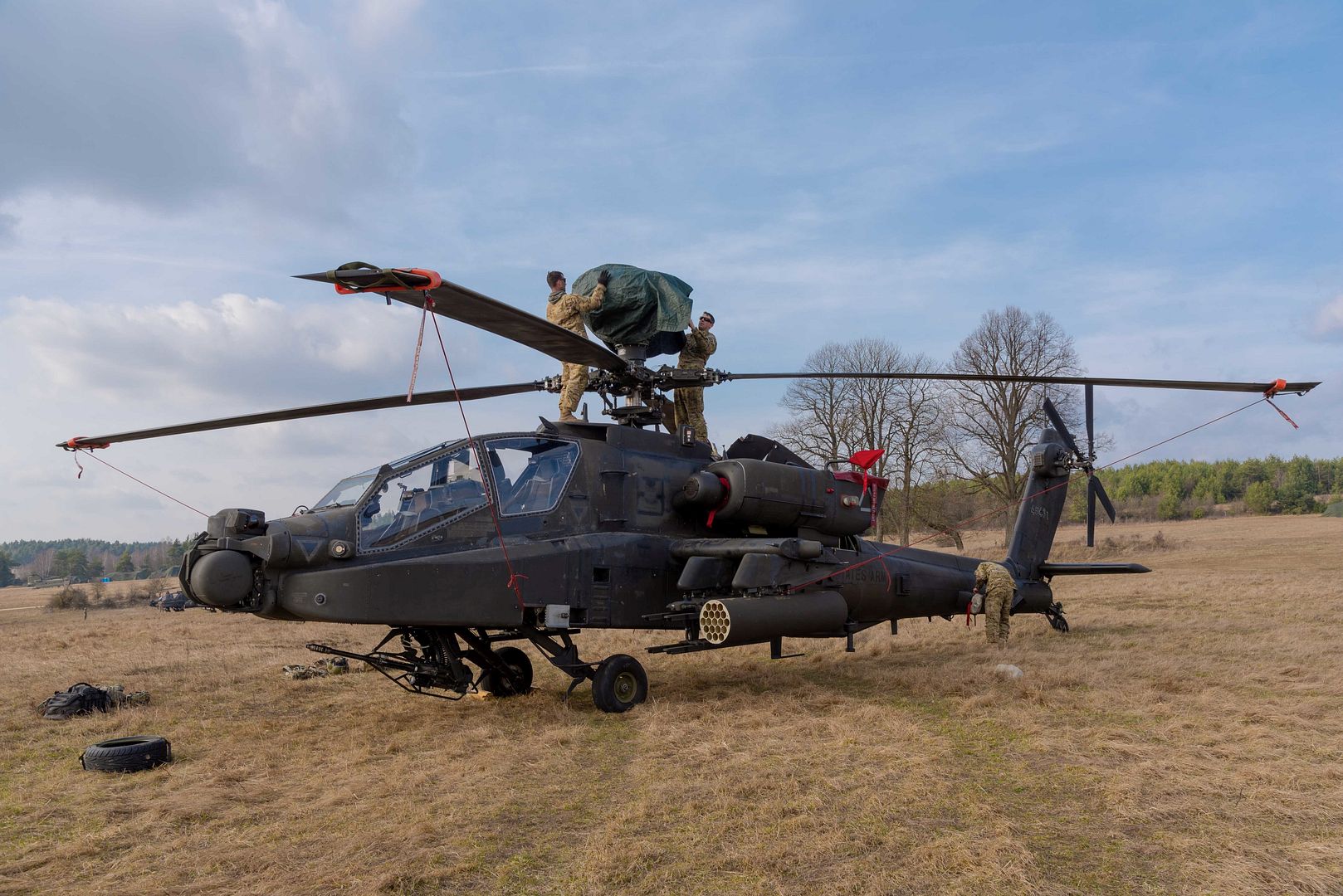
EDWARDS AIR FORCE BASE, Calif. --
The 461st Flight Test Squadron recently conducted weapon delivery accuracy tests with two United Kingdom weapons.
The weapons were released from a U.S. Marine Corps F-35B Lightning II, short takeoff/vertical landing variant, which will also be used by the U.K's Royal Air Force and Navy.
The U.K. weapons used for the test were the AIM-132 ASRAAM (advanced short range air-to-air missile) and Paveway IV precision-guided bomb.
The 461st FLTS is responsible for the execution of all mission systems developmental testing for U.K. F-35Bs.
According to the Royal Air Force, the ASRAAM is a short-range, infrared-guided missile carried by the RAF?s Eurofighter Typhoons and Panavia Tornado GR4s.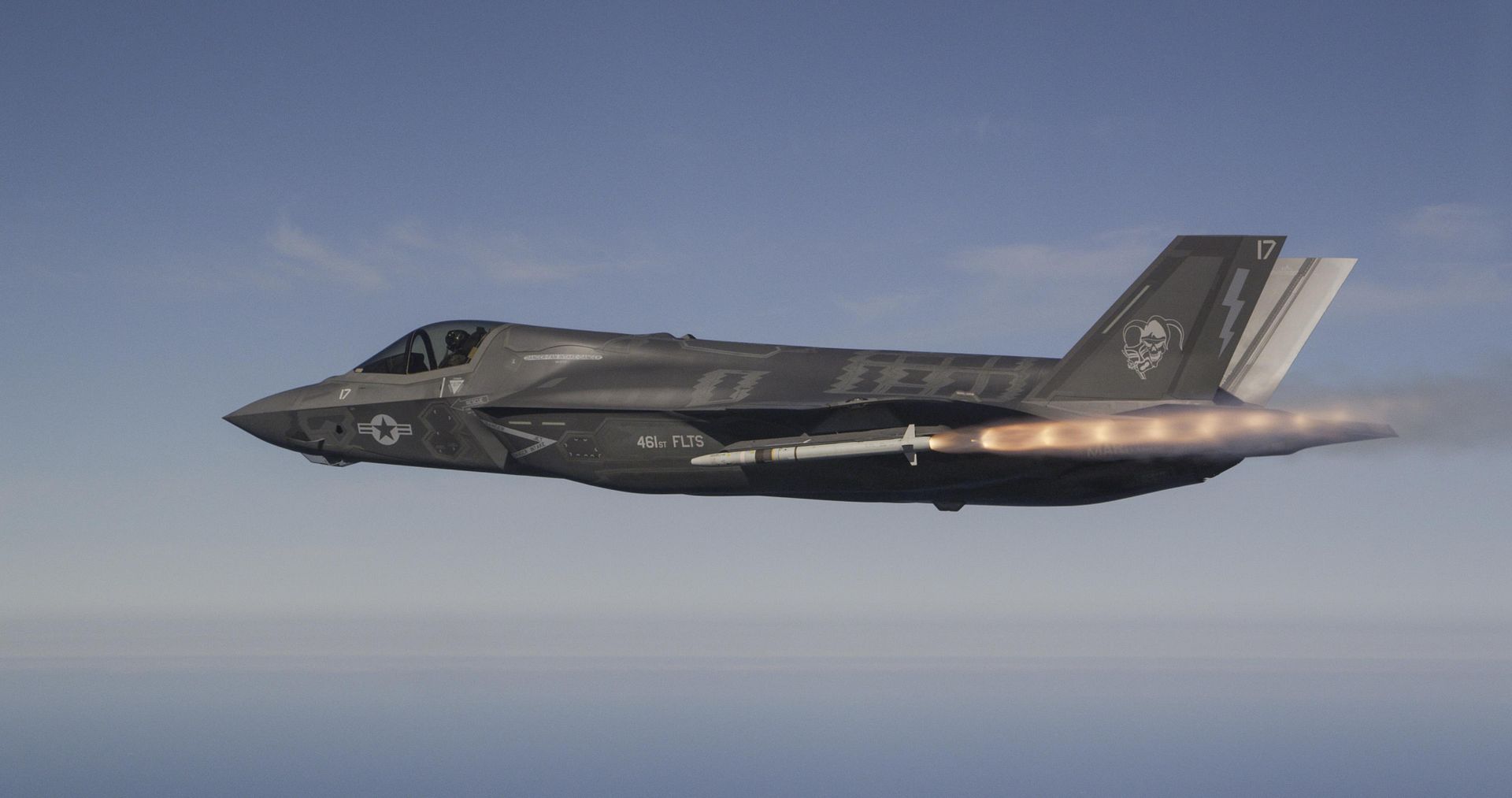
The Paveway IV is an advanced and highly accurate, state-of-the-art precision guided bomb. It?s an all-weather bomb with inertial navigation and GPS- and laser-guided bombing capabilities that is used by RAF and Royal Navy fighters.
Collin O?Fallon, F-35 weapon integration engineer, said two tests have been conducted with the Paveway IV. The first test was executed at Naval Air Weapons Station China Lake and was a laser-mode employment of the guided bomb against a tank on the ground. The second test was conducted over Edwards AFB?s Precision Impact Range Area to test the bomb?s GPS/inertial navigation employment against a tank.
?The two Paveway IV live-fires represent full end-to-end weapon-aircraft integration tests for these two significant use cases of this weapon's employment modes,? said O?Fallon.
On Feb. 24, one U.K. AIM-132 ASRAAM was fired at an unmanned drone over the Point Mugu Sea Range off of the California coast.
?The purpose of the test was to verify that the F-35 system could be used to target and engage an air target with an ASRAAM,? said Max Heald, 461st FLTS, F-35 weapon integration engineer. ?The test also verified that the F-35 properly communicated to the missile and gave it everything it needed to prosecute a target.?
Heald added the data collected in the test provided evidence to the weapon supplier they could use to certify AIM-132 ASRAAM carriage on the F-35B.
The 461st FLTS and Joint Strike Fighter Integrated Test Force conducts developmental testing and evaluation for all three variants of the F-35 Lightning II.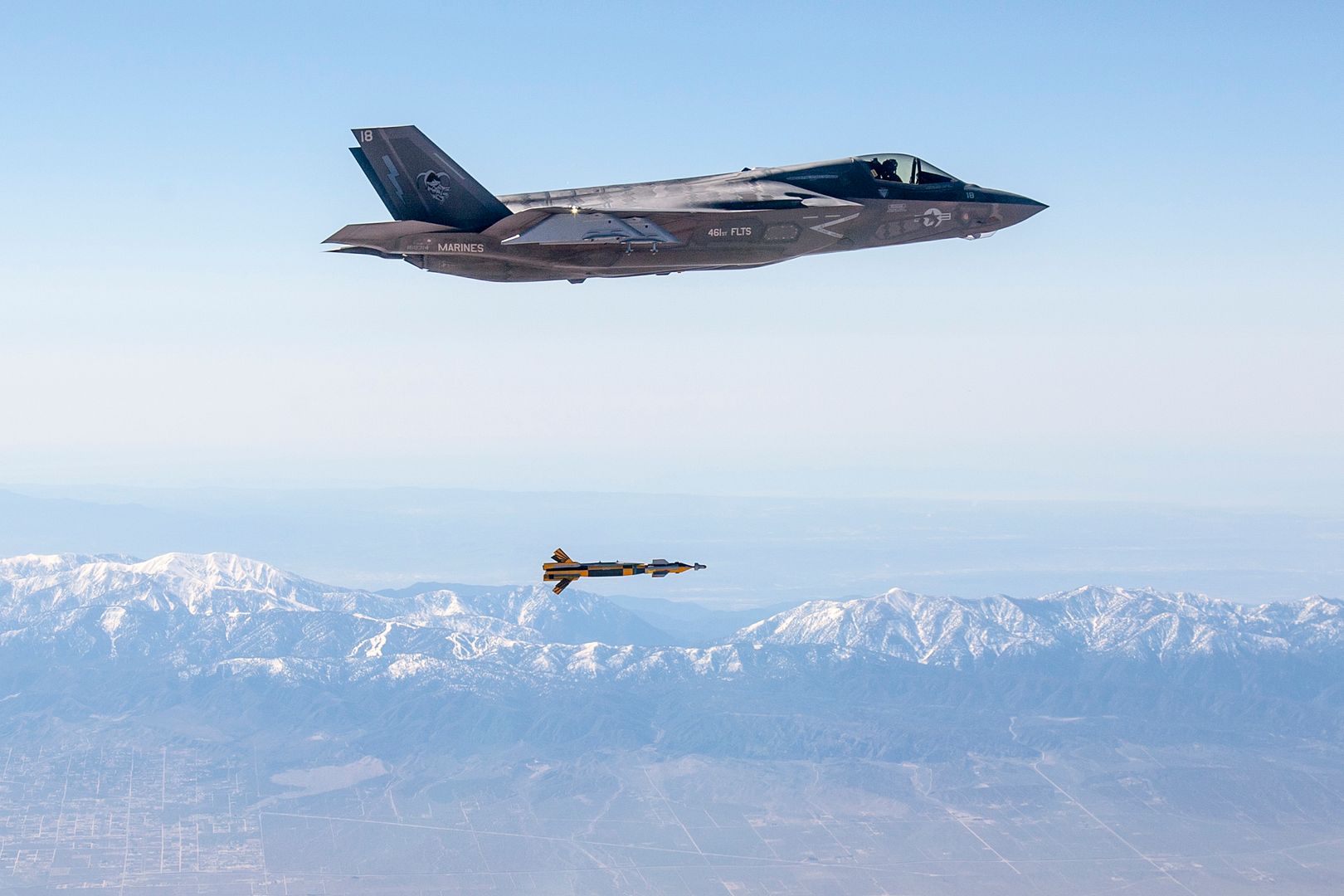
HILL AIR FORCE BASE, Utah -- The fifth of six "ferry cells" to deliver F-16 Fighting Falcon aircraft from the Ogden Air Logistics Complex to the Indonesian Air Force departed Hill AFB earlier this week.
The ferry cell comprised of four aircraft ? three C-models (single-seat) and one D-model (dual-seat) ? and departed the base March 14 on a four-day transoceanic flight and marked the completion of another major milestone for F-16 Indonesia Regeneration Program.
The program, managed by F-16 System Program Office International Branch Program Office located at Hill, is the result of a Foreign Military Sales deal to deliver 24 Block-25 variant F-16s to Indonesia by the end of this year.
The F-16 aircraft involved were originally flown by the U.S. Air Force and Air National Guard units, but were de-commissioned and stored for several years at the 309th Aerospace Maintenance and Regeneration Group open-air storage area located at Davis-Monthan AFB, Ariz.
Each jet amassed approximately 5,000 training and combat hours before being de-commissioned.
In preparation for regeneration, each aircraft was carefully dismantled, prepared, and shipped in crates 800 miles north of Davis-Monthan to Hill AFB.
The Ogden ALC?s 573rd Aircraft Maintenance Squadron is responsible for the restoration and began its work in 2013.
Ogden ALC officials said the effort has resulted in more than 17,000 direct labor hours on the production floor and in component maintenance shops, making this one of the most complex production efforts in the F-16 depot.
Each aircraft has received a myriad of new and upgraded components to include a new set of wings, horizontal stabilizers, and landing gear, along with numerous structural and avionics capability enhancements.
Each F-16 is subjected to a series of rigorous flight tests once the modifications are completed prior to delivering the jets to Indonesia.
This latest ferry cell brings the total number of F-16s delivered to Indonesia to 18.
The final six aircraft are currently in various stages of regeneration and modification, and are scheduled to be delivered to the Indonesian Air Force later this year.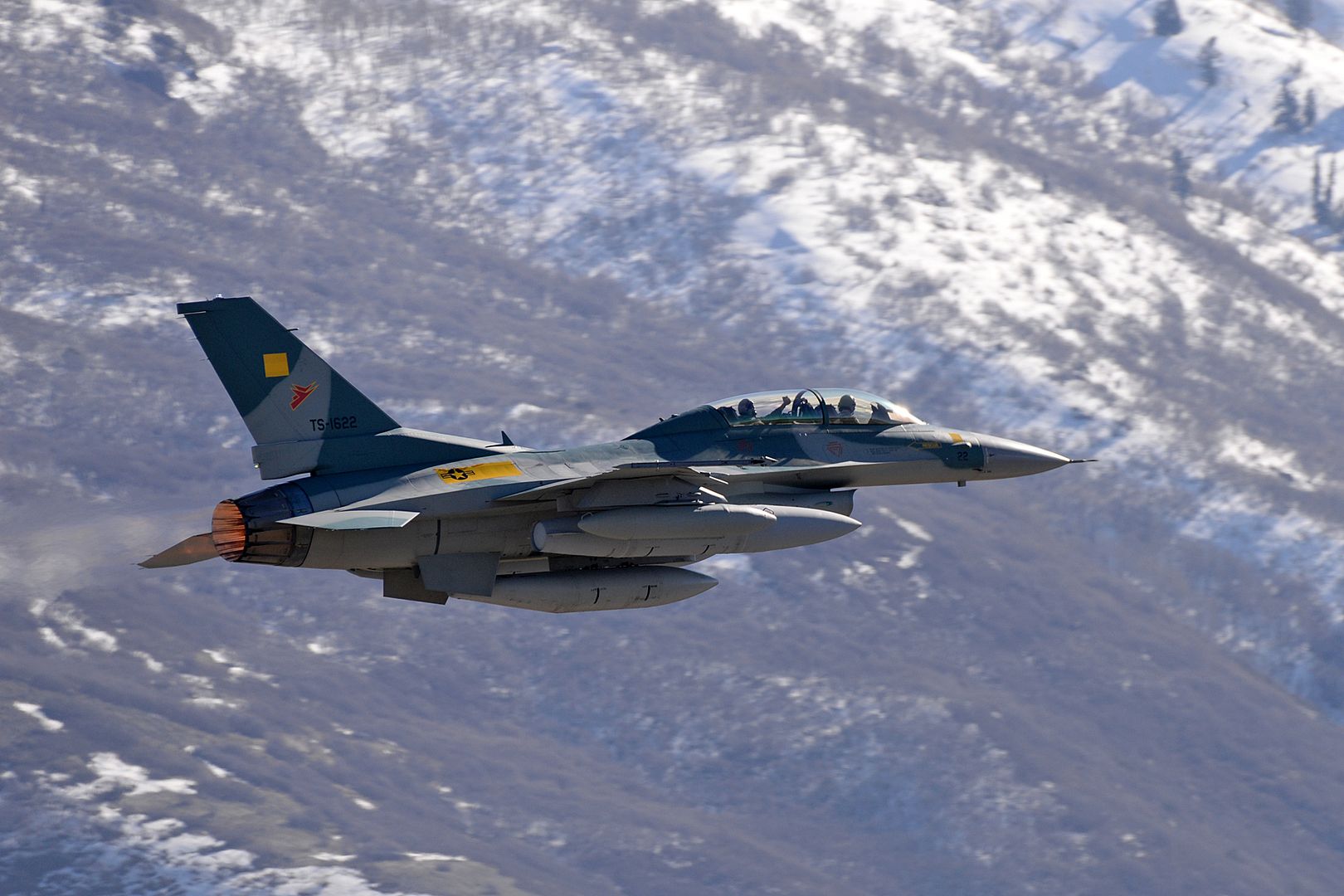
BOTHELL, Wash., March 16, 2017 /PRNewswire/ -- Lockheed Martin (NYSE: LMT) has completed the design, development and demonstration of a 60 kW-class beam combined fiber laser for the U.S. Army.
In testing earlier this month, the Lockheed Martin laser produced a single beam of 58 kW, representing a world record for a laser of this type. The Lockheed Martin team met all contractual deliverables for the laser system and is preparing to ship it to the US Army Space and Missile Defense Command/Army Forces Strategic Command in Huntsville, Ala.
"Delivery of this laser represents an important milestone along the path to fielding a practical laser weapon system," said Paula Hartley, vice president, Owego, New York general manager and Advanced Product Solutions within Lockheed Martin's Cyber, Ships & Advanced Technologies line of business. "This milestone could not have been achieved without close partnership between the U.S. Army and Lockheed Martin; we are pleased to be able to deliver this system for their further integration and evaluation."
Lockheed Martin's laser is a beam combined fiber laser, meaning it brings together individual lasers, generated through fiber optics, to generate a single, intense laser beam. This allows for a scalable laser system that can be made more powerful by adding more fiber laser subunits. The laser is based on a design developed under the Department of Defense's Robust Electric Laser Initiative Program, and further developed through investments by Lockheed Martin and the U.S. Army into a 60kW-class system.
"The inherent scalability of this beam combined laser system has allowed us to build the first 60kW-class fiber laser for the U.S. Army," said Robert Afzal, Ph.D., senior fellow for Laser and Sensor Systems. "We have shown that a powerful directed energy laser is now sufficiently light-weight, low volume and reliable enough to be deployed on tactical vehicles for defensive applications on land, at sea and in the air."
According to Afzal, the Lockheed Martin team created a laser beam that was near "diffraction-limited," meaning it was close to the physical limits for focusing energy toward a single, small spot. The laser system also proved to be highly efficient in testing, capable of translating more than 43 percent of the electricity that powered it directly into the actual laser beam it emitted.
Laser weapons provide a complement to traditional kinetic weapons in the battlefield. In the future, they will offer reliable protection against threats such as swarms of drones or large numbers of rockets and mortars. In 2015, the company used a 30kW fiber laser weapon, known as ATHENA, to disable a truck from a mile away.
Lockheed Martin has pioneered laser weapon systems for more than 40 years, making advances in precision pointing and control, line-of-sight stabilization and adaptive optics ? essential functions in harnessing and directing the power of a laser beam ? and in fiber laser devices using spectral beam combining. Lockheed Martin intends to develop a family of laser weapon systems capable of various power levels tailored to address missions across sea, air and ground platforms.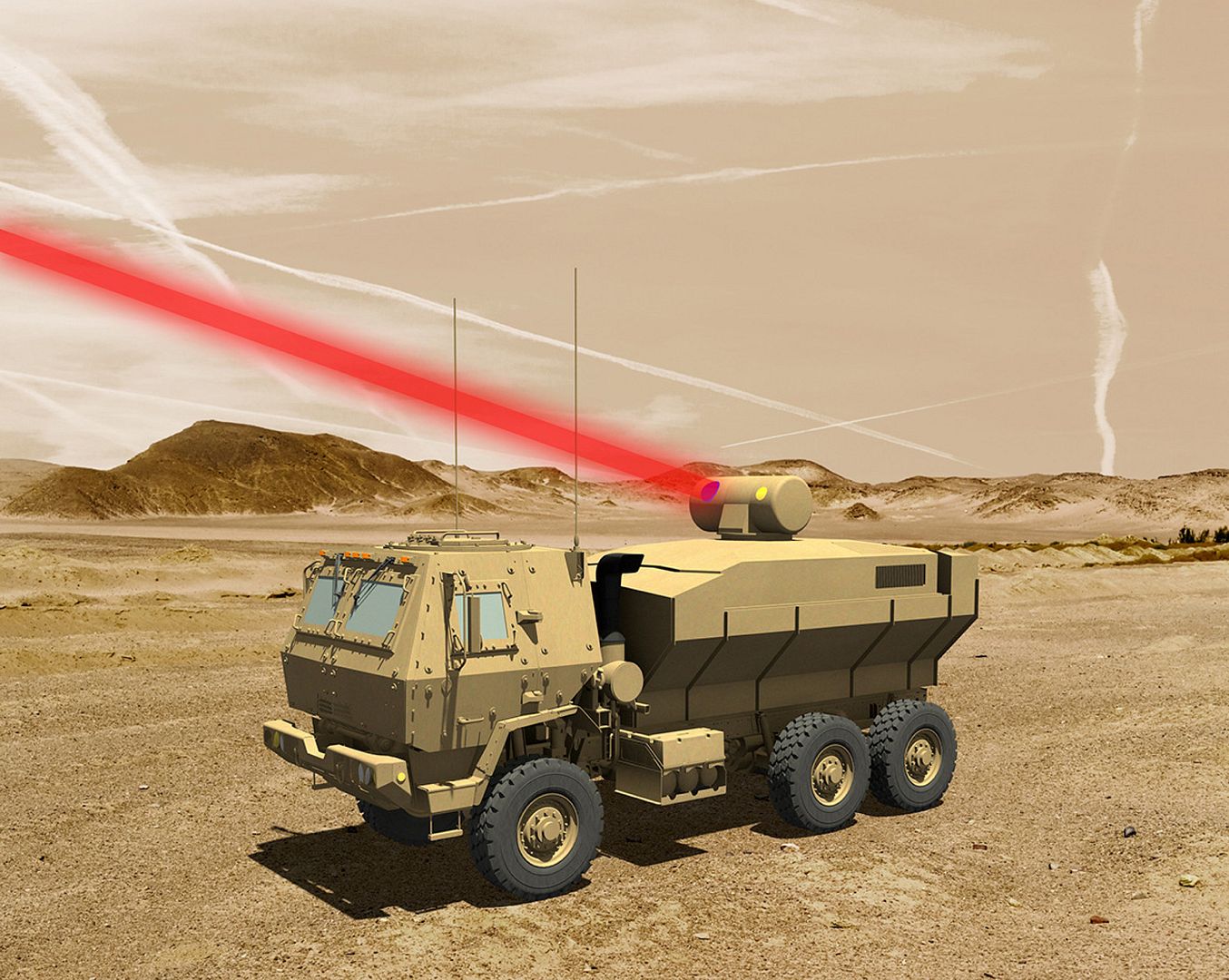
MESA, Ariz., March 16, 2017 ? Boeing [NYSE: BA] and the U.S. government recently signed a five-year, $3.4 billion contract through which the Army, and a customer outside the U.S., will acquire the latest Apache attack helicopter at a significant savings to taxpayers.
This is the first multi-year agreement for the Apache ?E? variant. The Army will receive 244 remanufactured Apaches while 24 new ones will go to the international customer.
"This agreement is great news for our Army, our soldiers, the American taxpayers, our industry partners and numerous international partners,? said U.S. Army Col. Joseph Hoecherl, the Apache project manager. ?It is a direct result of the professional dedication and diligent efforts by government and industry teammates to provide the much needed capabilities of the world's best attack helicopter - the AH-64E Apache - at a fair and affordable price that results in year over year savings to the taxpayer. In the hands of our trained U.S. soldiers, the Apache's technologies and resulting capabilities are essential to Army operations around the globe."
Boeing builds the Apache in Mesa, Ariz. Deliveries of the ?E? model began in October 2011. Seven customers outside the U.S. have ordered this variant. Including this latest version, the U.S. and 15 other countries have relied on the Apache during the past three decades.
?The Apache has made a tremendous impact in the defense of the nations that have flown it for the last 37 years,? said Kim Smith, Boeing Attack Helicopters vice president and program manager. ?Our team understands the responsibility we have to deliver the best aircraft on time at an affordable price every day, and we are committed to maintaining that well established tradition of excellence.?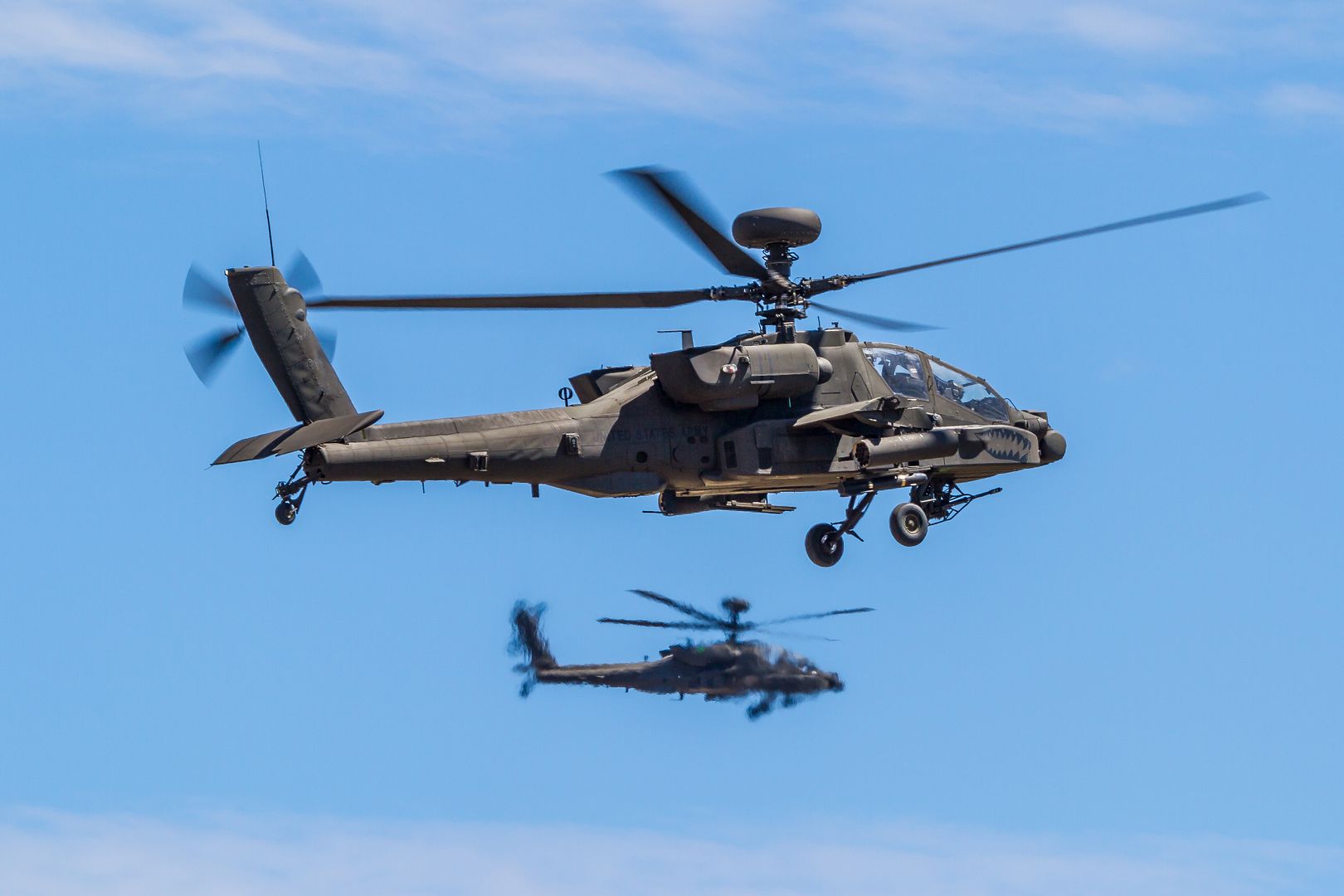
Melbourne, Florida, March 16, 2017 ? Embraer?s Legacy 450 mid-light business jet set speed records on its recent flights between California and Hawaii, according to the National Aeronautic Association (NAA). The Hawaii trip was a first for both the aircraft and the passengers from Calgary-based AirSprint, which operates Canada?s largest fractional aircraft fleet and was the Canadian launch customer for the Legacy 450. The customer demonstration trip with Embraer crew departed from Oakland to Maui with two pilots, four passengers and 300 lb (136 kg) of baggage, and returned to San Francisco.
?We are elated to have flown aboard the Legacy 450 on this record-breaking flight to Hawaii.? said James Elian, President and COO of AirSprint. ?AirSprint is proud to play a role in the personal and professional lives of successful Canadians. Our Fractional Owners trust us daily to take them, their colleagues, and their loved ones to places of work and leisure. With the Legacy 450 in our fleet, we are able to enhance their experience by providing faster, non-stop access to further away destinations like Hawaii, all with a level of comfort and luxury not previously available. We are thrilled to offer this incredible aircraft to our Owners?
The first flight departed from Oakland International Airport (KOAK) on December 5, at 11:53am (PST), with fuel reserves in excess of those required for NBAA IFR as well as for critical operations. The flight lasted 5 hours and 14 minutes, covering a distance of 2,428 miles (3,907 km), recording its longest flight to date. Only 25 minutes into the flight, the aircraft had already reached its planned cruising altitude of 43,000 ft.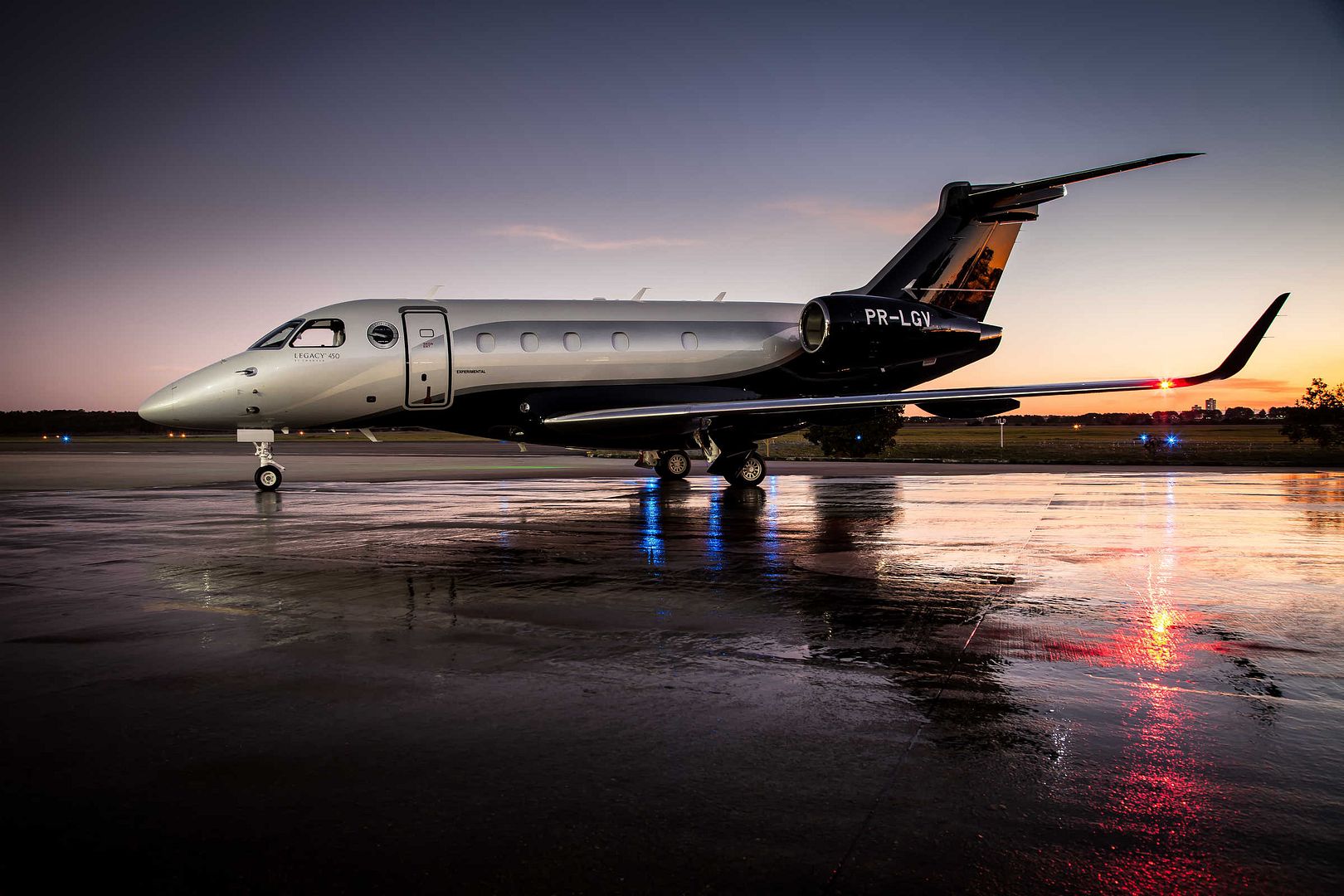
The aircraft landed at Maui?s Kahului Airport (PHOG) at 3:04pm (HST) with ample fuel reserves of 2,500 lb (1,134 kg), having consumed only 8,700 lb (3,946 kg) at approximately 243 gallons per hour of flight. The highest speed achieved during this flight was 450 knots or 518 mph (834 km/h), sustaining average headwinds of 58 knots. According to the NAA, the aircraft achieved an average speed of 449.91 mph, establishing the speed record for this course.
The return flight from Hawaii began on December 6, at 8:05am (HST), with only three passengers and the same amount of baggage. The flight lasted 4 hours and 27 minutes, covering a distance of 2,379 miles (3,829 km). The aircraft landed at San Francisco International Airport (KSFO) at 2:54pm (PST) with excess fuel reserves of 3,300 lb (1,497 kg). The highest speed achieved during this flight was 533 knots or 613 mph (987 km/h), with average tailwinds of 24 knots. The NAA has confirmed that the average speed of 525.89 mph attained by the aircraft is a record for this course.
The Legacy 450 has a full range capability of 2,900 nm (5,371 km) with four passengers and NBAA IFR Reserves, and it can operate at up to Mach 83 with an altitude ceiling of 45,000 ft.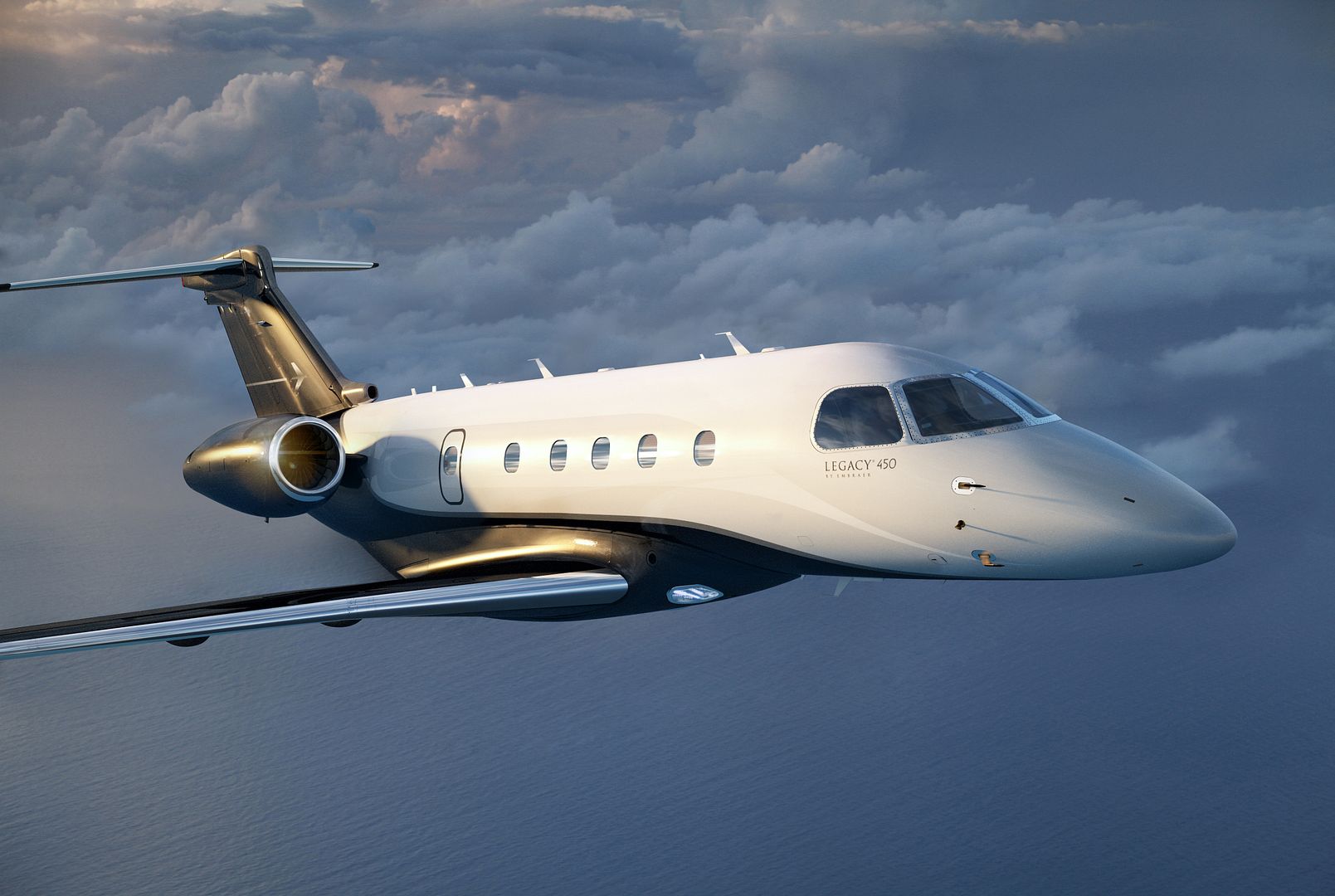
-
 Main AdminA U.S. Navy F/A-18E Super Hornet with Strike Fighter Squadron 122 (VFA-122) performs a tactical demonstration, showcasing the aircraft's high speed manuverability and low speed handling characteristics, as part of the 2017 Yuma Airshow at Marine Corps Air Station Yuma, Ariz., Saturday, March 18, 2017. (U.S. Marine Corps photo taken by Sgt. Travis Gershaneck)
Main AdminA U.S. Navy F/A-18E Super Hornet with Strike Fighter Squadron 122 (VFA-122) performs a tactical demonstration, showcasing the aircraft's high speed manuverability and low speed handling characteristics, as part of the 2017 Yuma Airshow at Marine Corps Air Station Yuma, Ariz., Saturday, March 18, 2017. (U.S. Marine Corps photo taken by Sgt. Travis Gershaneck)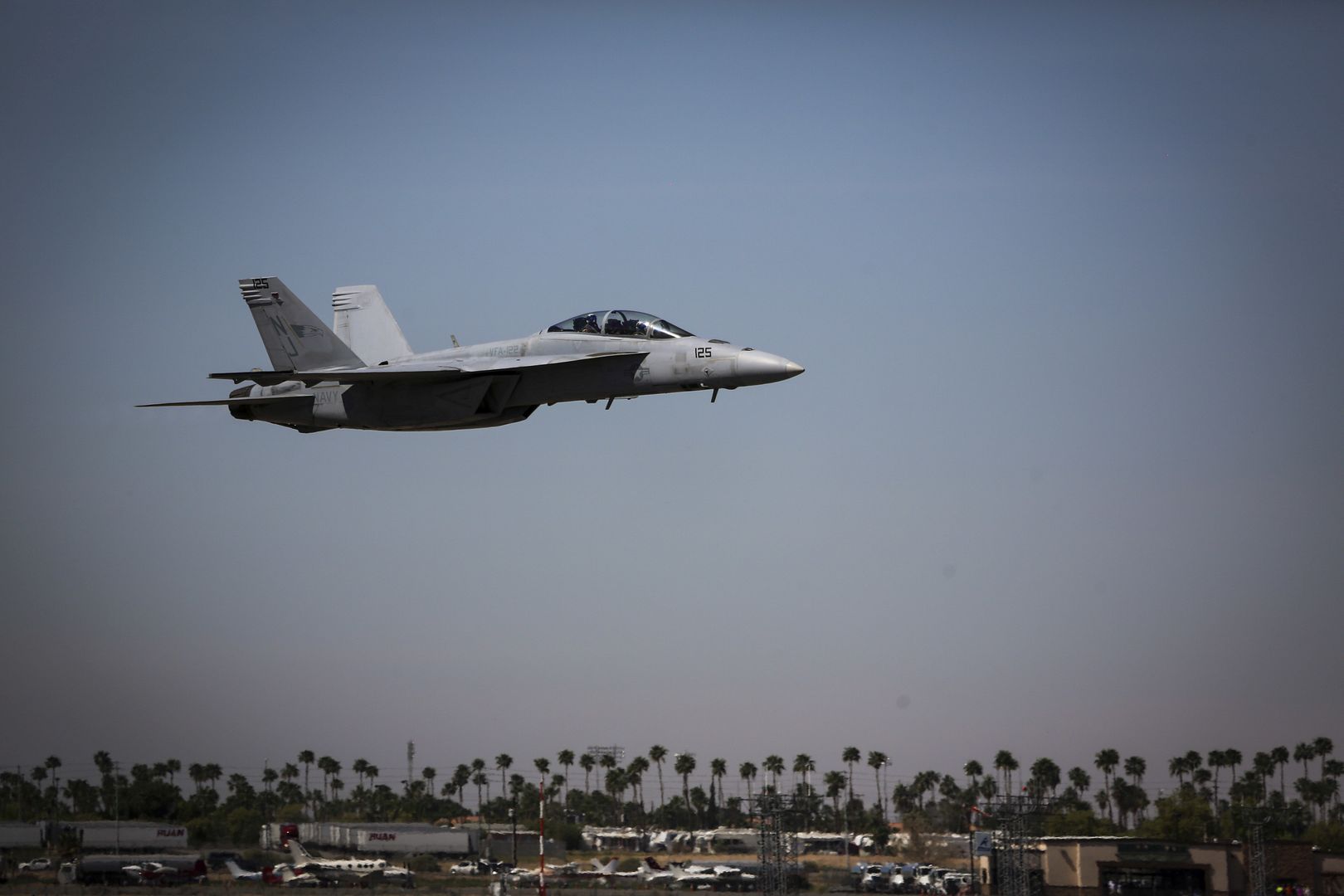
An F-35B Lightning II with Marine Fighter Attack Squadron 211 (VMFA-211) demonstrates its capabilities during the 2017 Yuma Airshow at Marine Corps Air Station Yuma, Ariz., Saturday, March 18, 2017. (U.S. Marine Corps photo taken by Sgt. Travis Gershaneck)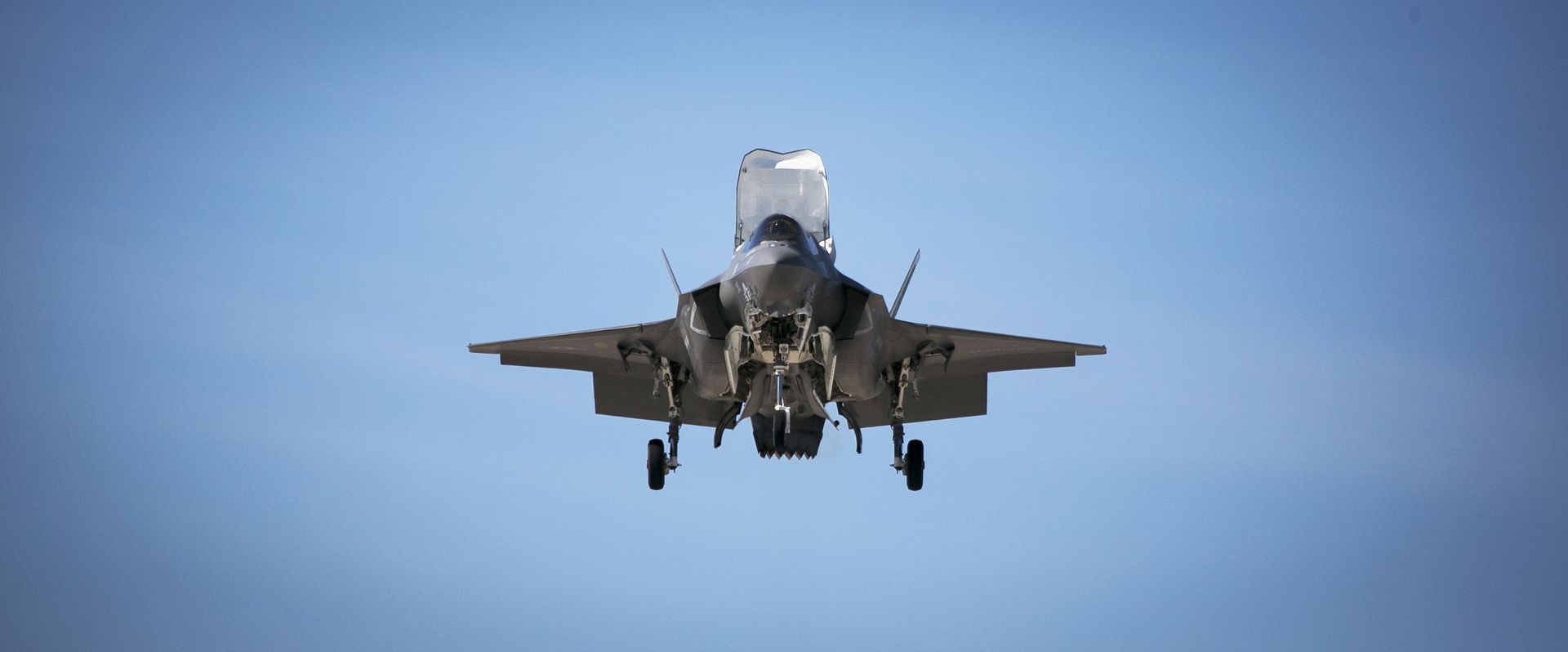
The Patriot Jet Team breaks out of formation over a "Wall Of Fire" as part of the closing act of the 2017 Yuma Airshow at Marine Corps Air Station Yuma, Ariz., Saturday, March 18, 2017. (U.S. Marine Corps photo taken by Sgt. Travis Gershaneck)
LUKE AIR FORCE BASE, Ariz. -- Student and instructor pilots working under the Foreign Military Sales program reached a historic milestone today when they flew their 100th sortie here at Luke Air Force Base.
The milestone is significant for the team making the mission happen on a daily basis.
?It was truly a reflection of the teamwork between operations and maintainers, and also the collaboration between the 944th Operations Group Detachment 2, Japan Air Self-Defense Force, and Lockheed Martin,? said Maj. Michael Hobson, 944th OG Det. 2 assistant director of operations, who flew the history-making sortie with one of four Japanese F-35A jets.
Luke acquired the Japanese jets for the FMS program, thus enabling JASDF pilots to train here. The first of three classes started in December and is already on the fast track to reaching all training goals ahead of schedule and graduating its first two students in May. The students include a JASDF commander and director of operations.
?They?ve got thousands of flying hours and they?re extremely experienced pilots with the F-2 and F-4, so they have flown 4th generation fighters before,? said Lt. Col. Eric Puels, 944th OG Det. 2 director of operations. ?So this is really a transition course which is similar to what we do on the U.S. side but tailored to their needs and what they do in their country as far as training and execution.?
The course is a mix of classroom academics, simulators and flights. Upon completion of the course, the students will have the tools they need to create their own F-35 training program back home.
?(Our students) are going through the transition program now, teaching them how to fly the aircraft and execute operationally as wingmen, then they?ll undergo instructor pilot upgrade added on to what they know so they can go home and instruct their teammates and build their own program from scratch,? said Puels.
The 100th sortie is just one of many successes under the team?s belt. Puels credits the success to the synergy and efficiency of the team.
?This is probably just one of a dozen firsts we?ve experienced in the past two months alone,? said Puels. ?Operationally, it means a great deal to be able to reach this milestone as quickly as we have. It shows that the innovative scheduling process and relationship that we have with our maintenance folks and with the operations folks is working and we?re excited about that. We?ve taken innovative steps to do things outside of the box.?
The pride in reaching this historic sortie is also shared by Team Luke?s partners from JASDF.
?We have accomplished our 100th sortie with only three months of flight operations here at Luke AFB and I would like to celebrate this milestone with each and everyone here,? said JASDF Maj. Toru Tsuchiya, Japanese F-35A foreign liaison officer. ?I?m honored to work with the elite U.S. Air Force pilots and Lockheed Martin employees. I appreciate the outstanding support they have given us during this endeavor.?
-
 Main AdminKABUL, Afghanistan (AFNS) -- Four A-29 Super Tucano light-attack aircraft arrived for duty at Kabul Air Wing, Kabul, Afghanistan, March 20, 2017, where they will be used by the Afghan Air Force for close-air attack, air interdiction, escort and armed reconnaissance.
Main AdminKABUL, Afghanistan (AFNS) -- Four A-29 Super Tucano light-attack aircraft arrived for duty at Kabul Air Wing, Kabul, Afghanistan, March 20, 2017, where they will be used by the Afghan Air Force for close-air attack, air interdiction, escort and armed reconnaissance.
The latest arrivals, which traveled from Moody Air Force Base, Georgia, bring the AAF A-29 inventory from eight to 12 aircraft in country.
There are still seven A-29s assigned to Moody AFB, where they are used for training pilots.
?The four additional aircraft will allow us to increase the number of missions we are able to support nationwide,? said an AAF A-29 pilot who can?t be identified for security reasons. ?More targets can be attacked?more ground troops can be supported.?
The AAF A-29 pilot said sometimes a nation needs their military to pressure the enemy in order to develop peace and stability.
?The AAF plays a major role in this,? he said. ?We are helping the peace process. When an A-29 is overhead, it gives motivation to the ground troops, and the enemy realizes they can be struck anywhere and will feel the pressure to come to the peace table. This is how we will bring peace and stability to Afghanistan.?
Brig. Gen. David Hicks, Train, Advise, Assist Command-Air and 438th Air Expeditionary Wing commander, said the A-29s were a ?game changer? in the 2016 fighting season, and he has high expectations for the aircraft and crews in 2017.
?The AAF pilots are continually gaining proficiency in the A-29,? Hicks said. ?They are capable of providing air attack anywhere in the country. In the past, the Afghan National Army relied on the coalition for air support. Now, it?s their own countrymen overhead flying the missions.?
Hicks said the additional A-29s give the AAF more options to forward deploy airpower throughout the country.
Lt. Col. Johnnie Green, the 438th Air Expeditionary Advisory Squadron commander, said the AAF and U.S. A-29 pilots have a unique bond.
?We have developed a close relationship with the Afghan A-29 pilots over several years now, not just in training, but also in the development of their own fighter squadron and advising them while they conduct operations,? Green said. ?Training in the United States allows us the freedom and flexibility to control the environment and instruct to specific objectives, and the standard we hold them to directly translates to what they do in combat.?
Green said the AAF A-29 pilots are performing remarkably well, and the pilots have demonstrated excellent decision making.
?The experience they have gained in one year since beginning combat operations is phenomenal, and they are communicating these experiences with each other,? Green said. ?That is so important as the new A-29 pilots return from training and begin flying combat operations themselves.?
The newest A-29s will undergo a brief reconfiguration after which they will be ready for combat operations in the 2017 fighting season.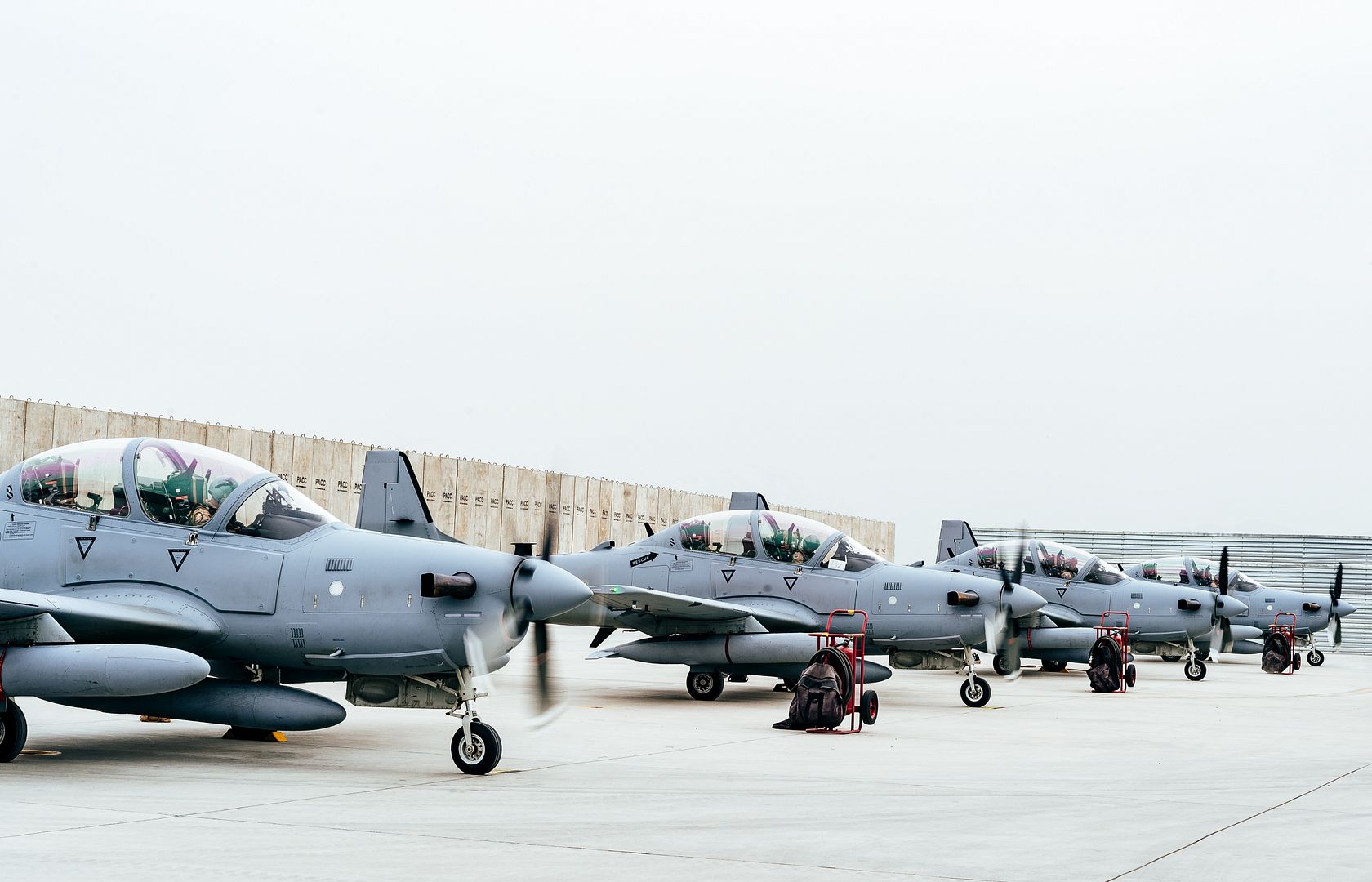
An Air Force C-17 Globemaster taxis on the runway at Lakehurst Maxfield Field, N.J., Mar 19, 2017, during Warrior Exercise 78-17-01. WAREX 78-17-01 is an important step in building the most capable, combat-ready and lethal force in history. (U.S. Army Reserve photo by Staff Sgt. George F. Gutierrez, 201st Press Camp Headquarters/ Released)
The U.S. Air Force 354th Operations Group F-16 Fighting Falcon flagship sits on the tarmac at Royal Australian Air Force Base Williamtown, in New South Wales, Australia, March 19, 2017. Exercise Diamond Shield 2017, the second of four Diamond Series exercises conducted by the RAAF Air Warfare Centre, is an Australian Defence Force training activity where high-readiness forces deploy quickly to remote locations in Australia in response to a simulated security threat. The exercise will see members of the ADF Navy, Army and Air Force rapidly deploy to counter a fictitious force posing a threat to Australia's national security in the Kimberley region in North Western Australia. (U.S. Air Force photo's by Tech. Sgt. Steven R. Doty)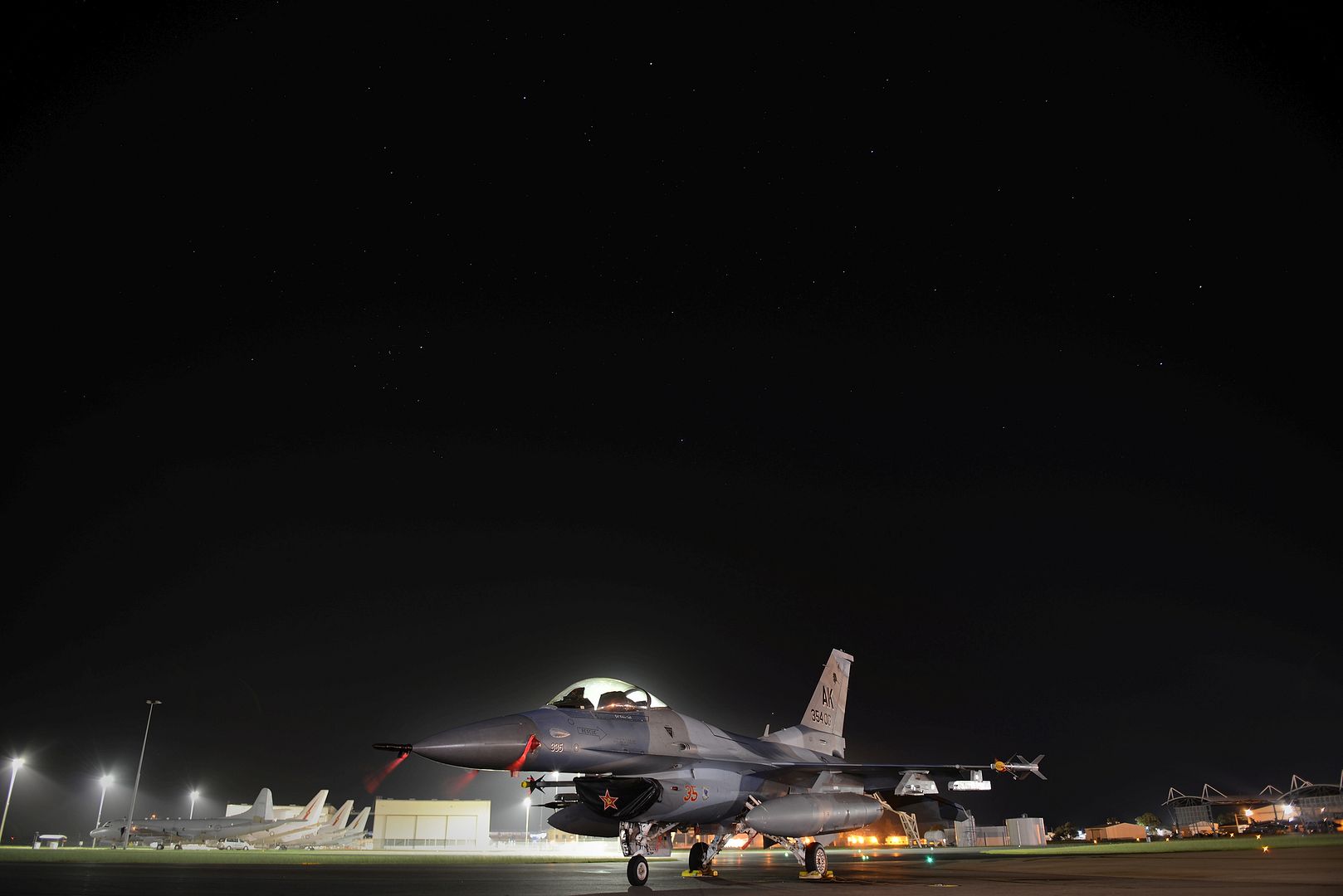
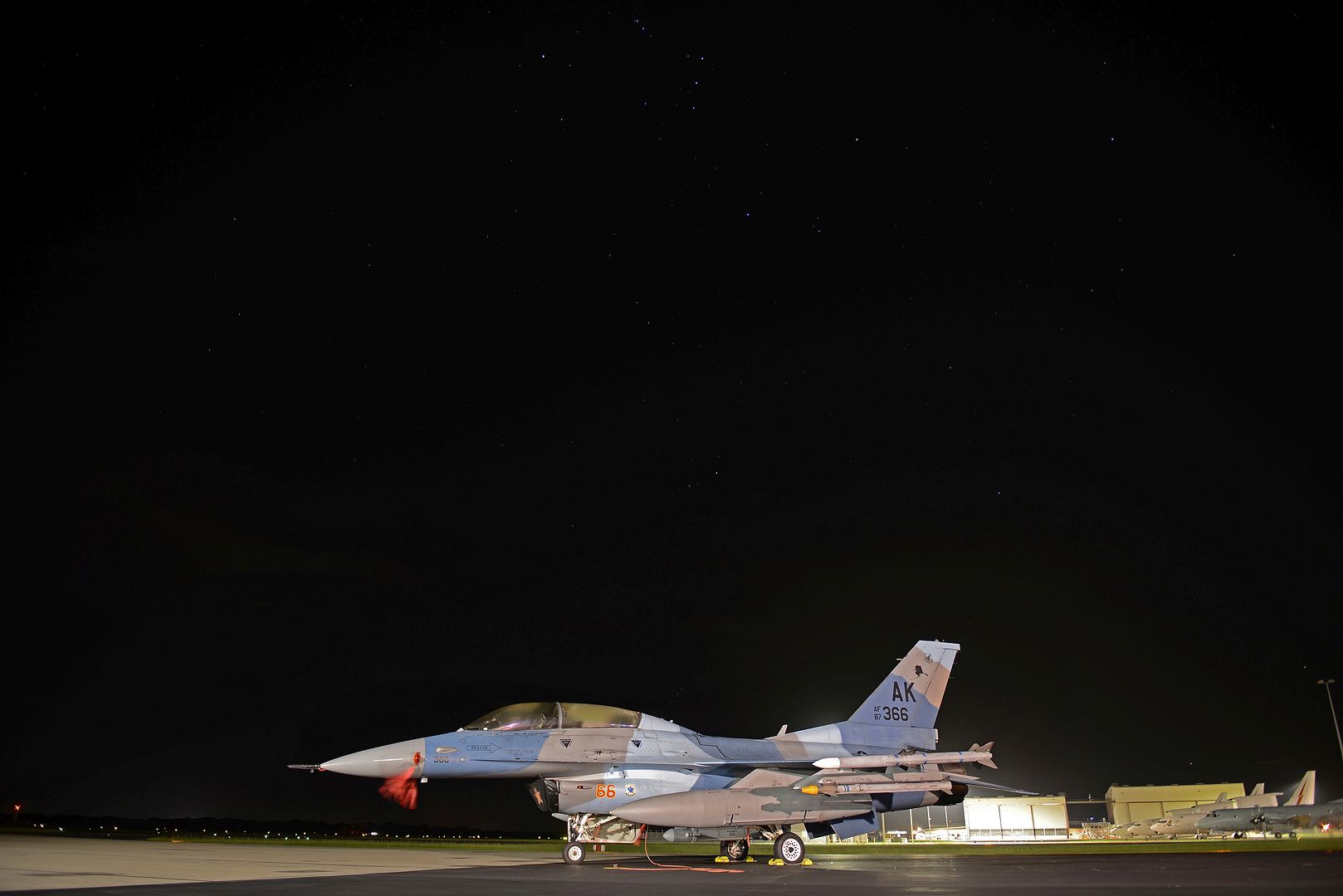

LUKE AIR FORCE BASE, Ariz. -- The 63rd Fighter Squadron received its first F-35 Lightning II aircraft March 20, 2017, at Luke Air Force Base, Ariz.
Lt. Col. Matt Vedder, 63rd FS commander and F-35 pilot, taxied in the new aircraft from the Lockheed Martin plant in Fort Worth, Texas, to Luke AFB where it will serve as the flagship jet for the 63rd FS.
?It?s a monumental day and a huge milestone for the base,? Vedder said. ?As the commander of the 63rd FS, receiving our squadron?s first F-35 provides a huge sense of responsibility and it?s something I do not take lightly.?
That responsibility is building the future of airpower.
Since the first arrival of the F-35 in 2014, the program at Luke has rapidly matured and is approaching its halfway point with the 63rd FS?s first jet.
The 63rd FS was originally activated in January of 1941, then known as the 63rd Pursuit Squadron. The squadron has over 174 aerial victories and several aces.
?We always feel a sense of responsibility in representing the squadron in which we fly,? Vedder said. ?That sense is really heightened when you?re flying in the flagship. For me, it?s leading out in front and representing the men and women who make this organization happen. There are so many people that make this jet fly every day, and I?m fortunate to be able to represent them.
(U.S. Air Force photo by Airman 1st Class Alexander Cook)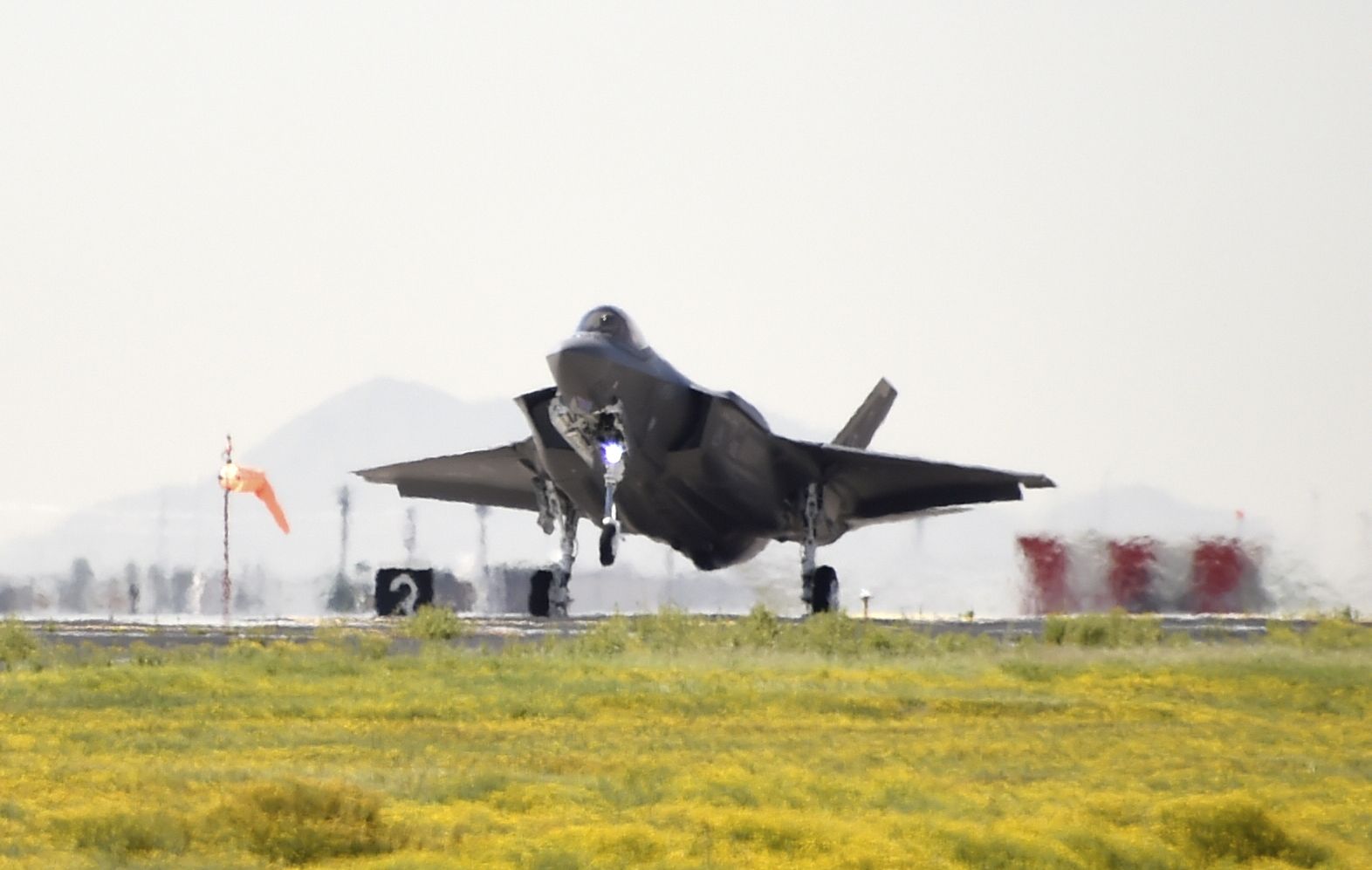
S?o Jos? dos Campos, Brazil, March 20, 2017 ? Embraer performed last Friday afternoon, at the S?o Jos? dos Campos facility, the maiden flight of the E190-E2 fourth prototype, which was completed in two hours. This aircraft will be used for specific interior tests such as cabin evacuation, environmental comfort and internal noise.
The aircraft, serial number 20.004, will join the flight-test fleet, comprised of the first three E190-E2 prototypes, which combined, have accumulated more than 650 flight hours to date. The first E190-E2 jet is on schedule to be delivered in the first half of 2018 and the launch operator will be Wider?e, the largest Norwegian regional airline.
?In terms of the certification campaign, Embraer has already frozen the aerodynamic configuration and concluded many tests such as flying qualities assessment, short field takeoff and landing, climb performance, in-flight thrust determination, landing gear stability and other systems tests. Shortly we will do high speed flying qualities, flutter, natural ice and cold soak tests,? explains Lu?s Carlos Affonso, COO, Embraer Commercial Aviation.
In addition to the flight test campaign, Embraer is performing more than 30,000 hours of ground tests as well as integration analysis. With the goal of delivering a more mature airplane upon entry into service, the Company uses an Iron Bird, where all aircraft systems are available in full scale, including the cockpit. This tool enables Embraer to simulate flights of each E2 model and to optimize systems performance and refine flight qualities.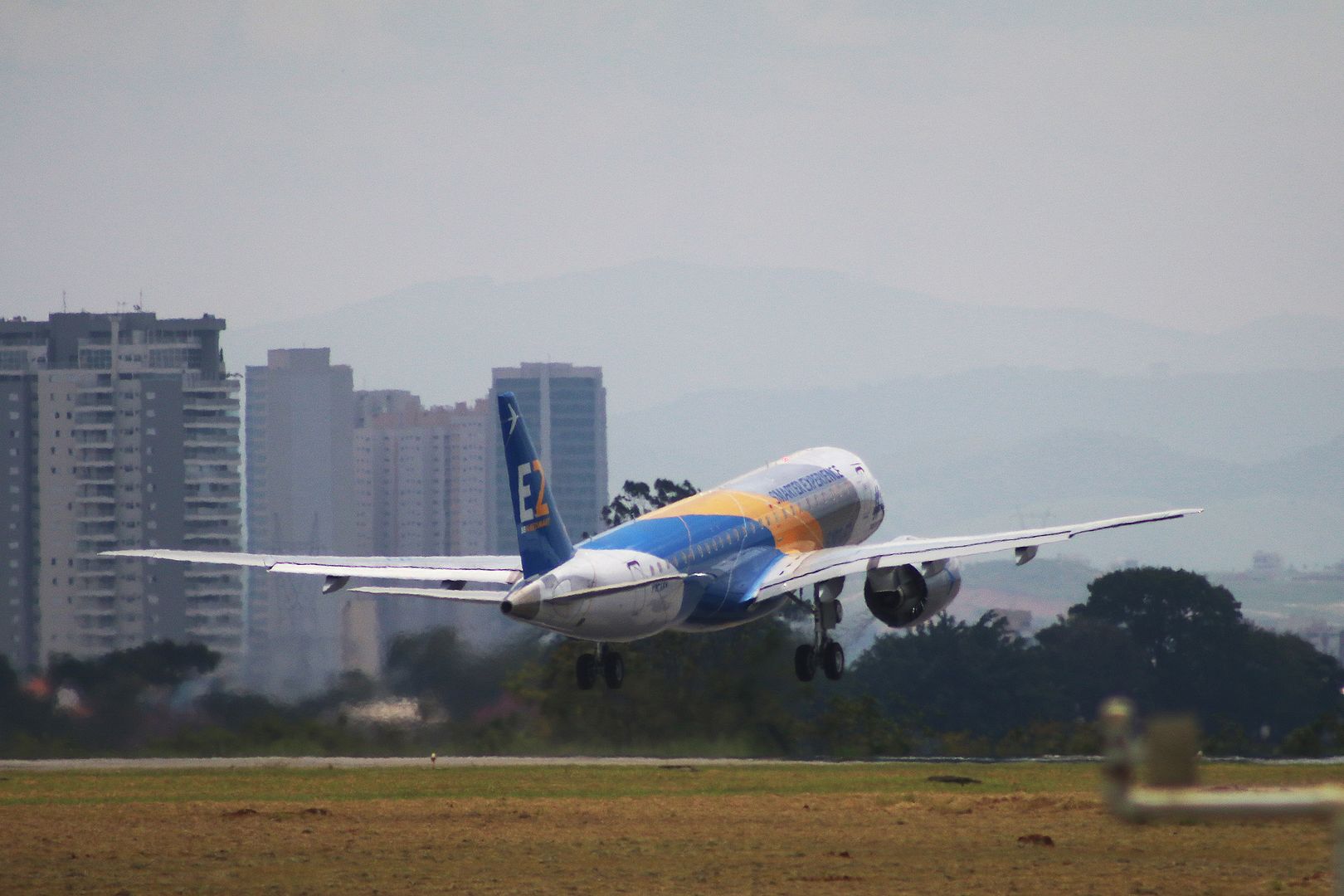
The Italian Air Force?s state-of-the-art patrol aircraft lands in Malaysia on its first mission abroad
The ATR 72MP, designated P-72A by the Italian Air Force, is at the forefront of maritime patrol capability, enabling defence, homeland security and environmental protection missions
The aircraft is fitted with Leonardo?s ATOS surveillance mission system and Seaspray AESA radar?
For the first time since its introduction into service in December 2016, the Italian Air Force?s ATR 72MP has flown overseas to attend the Langkawi International Maritime And Aerospace Exhibition in Malaysia, from March 21 to 25. During the show, the aircraft and its crew will be available to delegations and guests for hosted visits and briefings. Leonardo envisions significant export opportunities for the aircraft in the region due the aircraft's low cost of operation, ease of maintenance and exceptional versatility in a number of maritime roles.
The ATR 72MP, which was developed by Leonardo using the ATR 72-600 turboprop as a base, can perform roles including maritime patrol, search and identification of surface vessels, Command, Control and Communication, ISR, Intelligence, Surveillance and Reconnaissance, SAR (Search and Rescue) missions, the prevention of narcotics trafficking, piracy, smuggling, territorial water security and monitoring and intervention in the event of environmental catastrophes.
The ATR 72MP is equipped with Leonardo's ATOS mission system, which uses advanced data fusion techniques to present a single tactical picture to the operator that integrates information from all of the aircraft's on-board sensors. One key sensor on the ATR 72MP is Leonardo's Seaspray AESA (Active Electronically Scanned Array) surveillance radar. Seaspray provides a powerful surveillance capability with a range of modes, all in a highly reliable package. The aircraft also uses the latest communication systems, able to transmit or receive information in real time to/from command and control centres either on the ground, in the air or at-sea, to ensure coordinated and effective operations. The aircraft is also equipped with a self-protection system, fully integrated with the ATR 72MP?s mission system and avionics.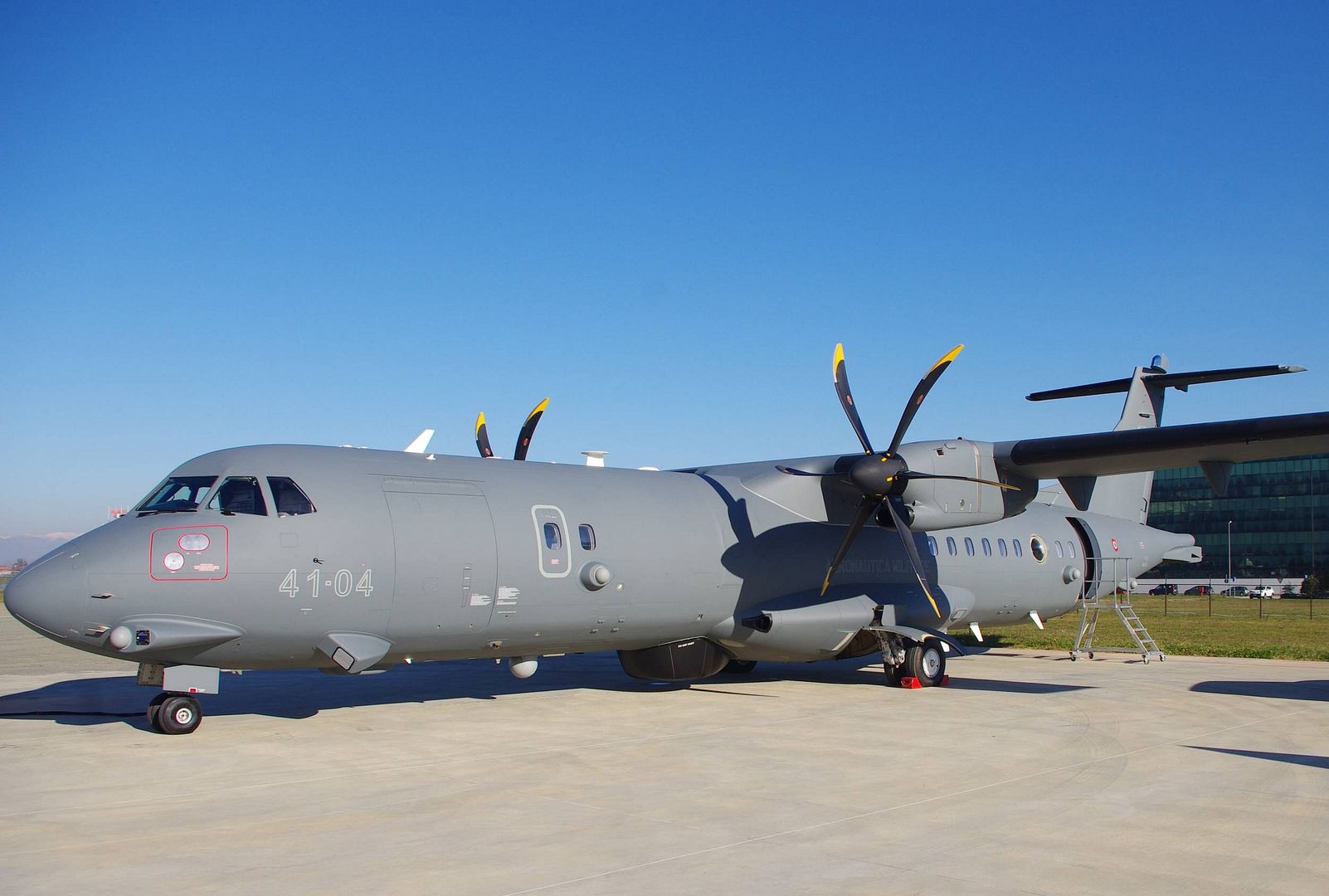
-
7 years ago
 Level 1
Level 1 -
 Main AdminSeveral A-10 Thunderbolt II aircraft wait for a sunset take off during the periodic night training at Gowen Field, Boise, Idaho on March 20, 2017. (U.S. Air National Guard photo's by Master Sgt. Becky Vanshur/released)
Main AdminSeveral A-10 Thunderbolt II aircraft wait for a sunset take off during the periodic night training at Gowen Field, Boise, Idaho on March 20, 2017. (U.S. Air National Guard photo's by Master Sgt. Becky Vanshur/released)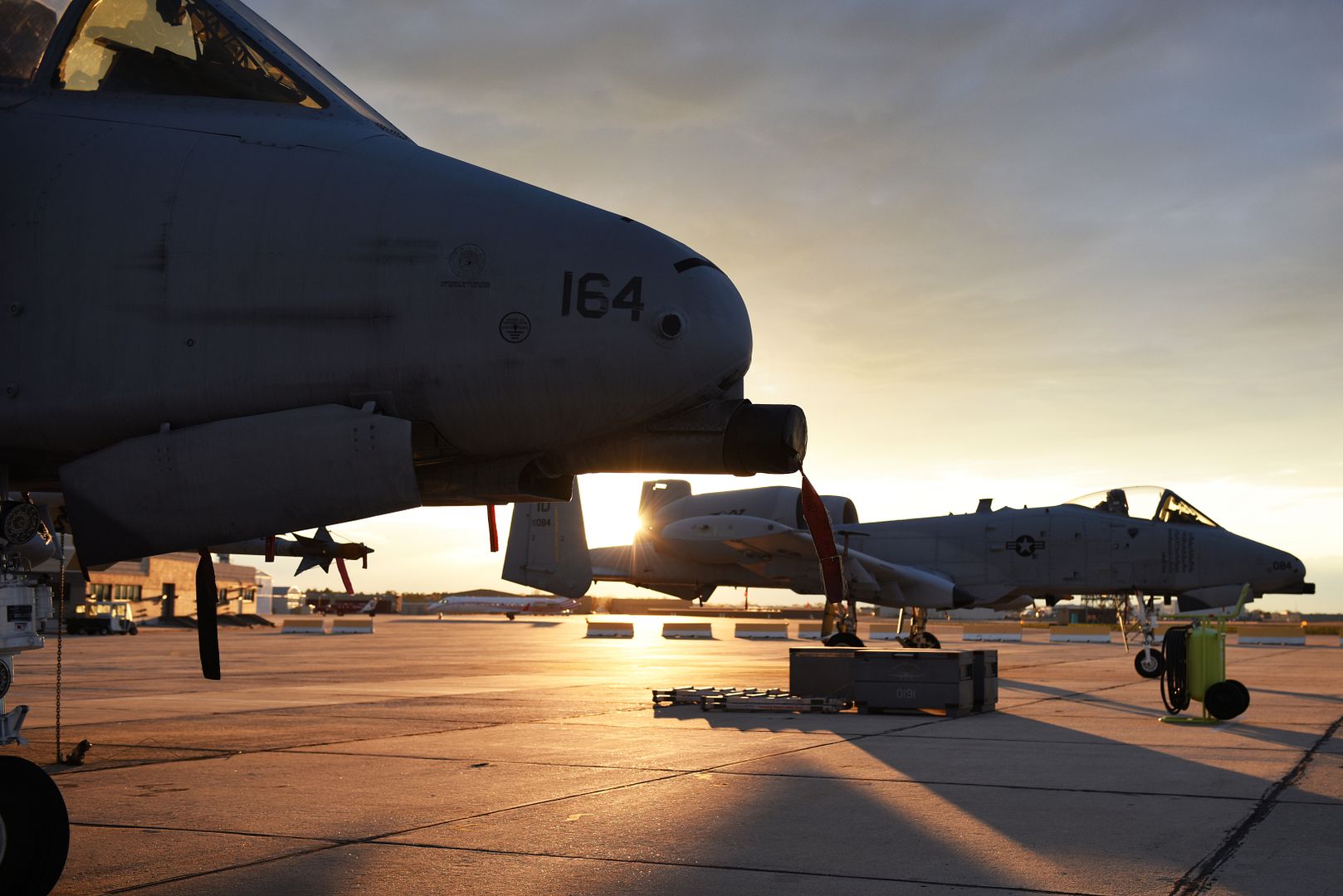


An A-10 Thunderbolt II pilot prepares for flight March 21, 2017 at the 124th Fighter Wing, Boise, Idaho. The A-10 Thunderbolt II is designed for close air support of ground forces.
Photo by Airman 1st Class Skyla Child.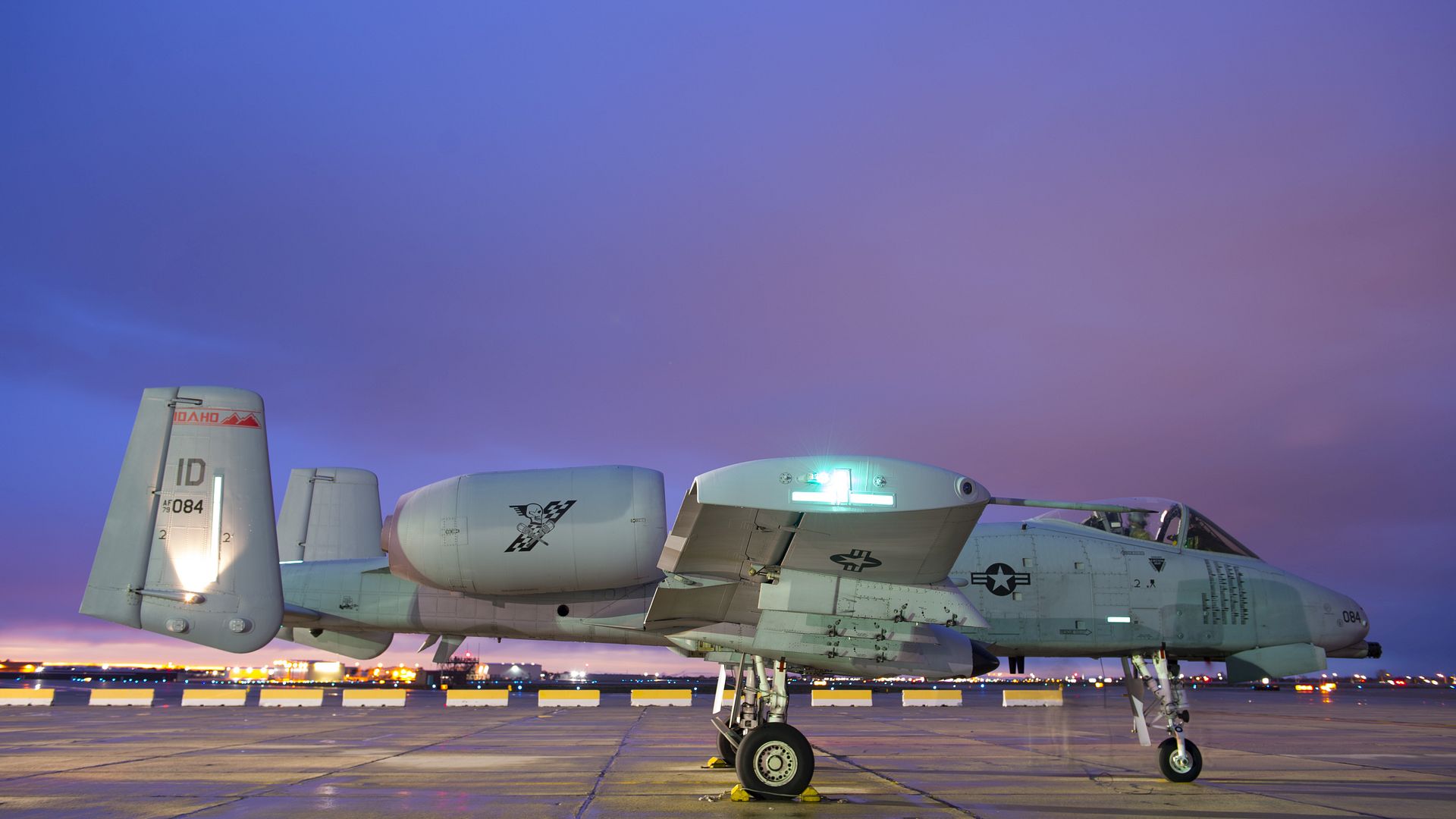
A U.S. Air Force F-16 Fighting Falcon takes off from Royal Australian Air Force Base Williamtown, during Exercise Diamond Shield 2017 in New South Wales, Australia, March 21, 2017. (U.S. Air Force photo by Tech. Sgt. Steven R. Doty)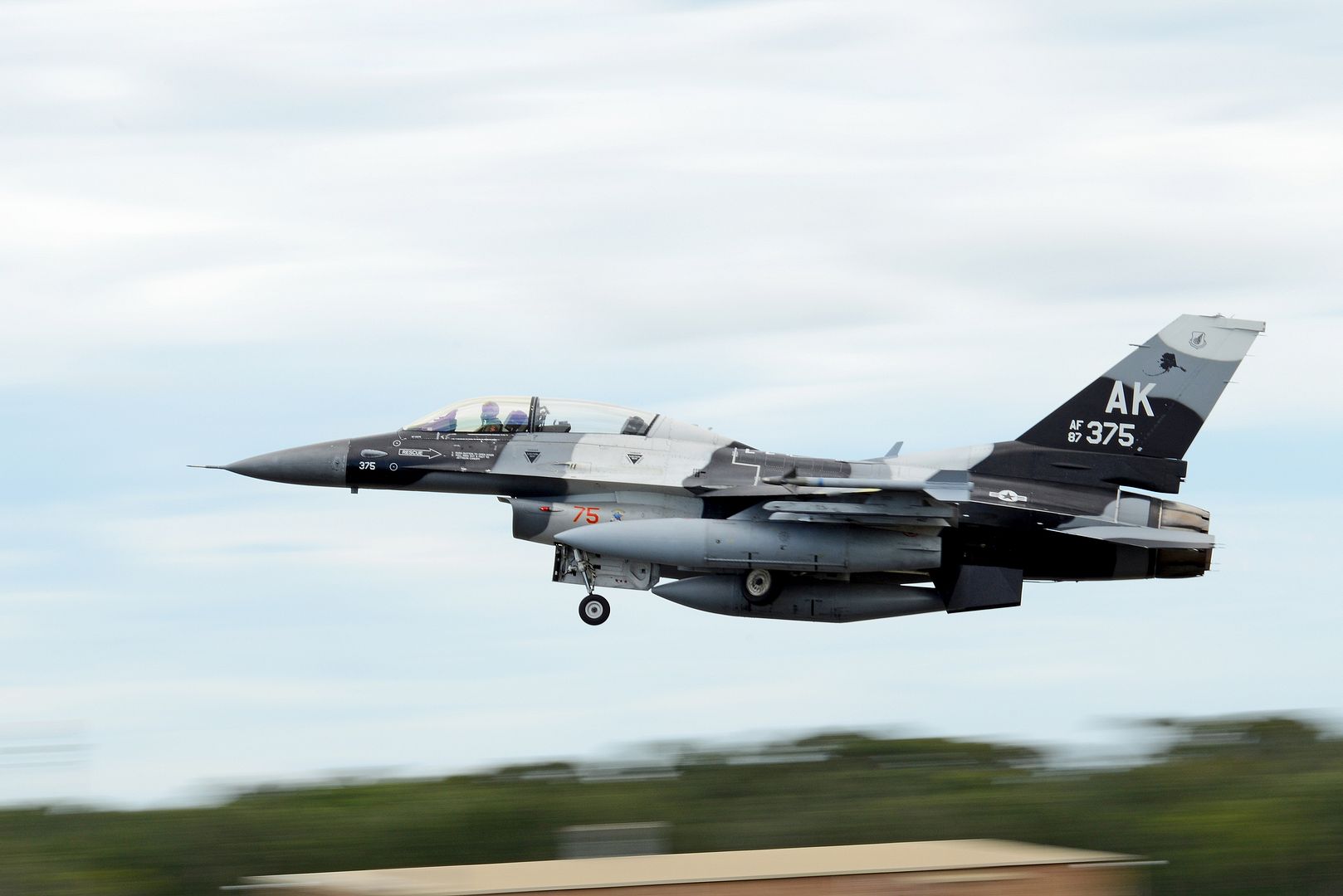
A Royal Australian Air Force BAE Hawk trainer taxis at RAAF Williamtown, during Exercise Diamond Shield 2017 in New South Wales, Australia, March 21, 2017. (U.S. Air Force photo by Tech. Sgt. Steven R. Doty)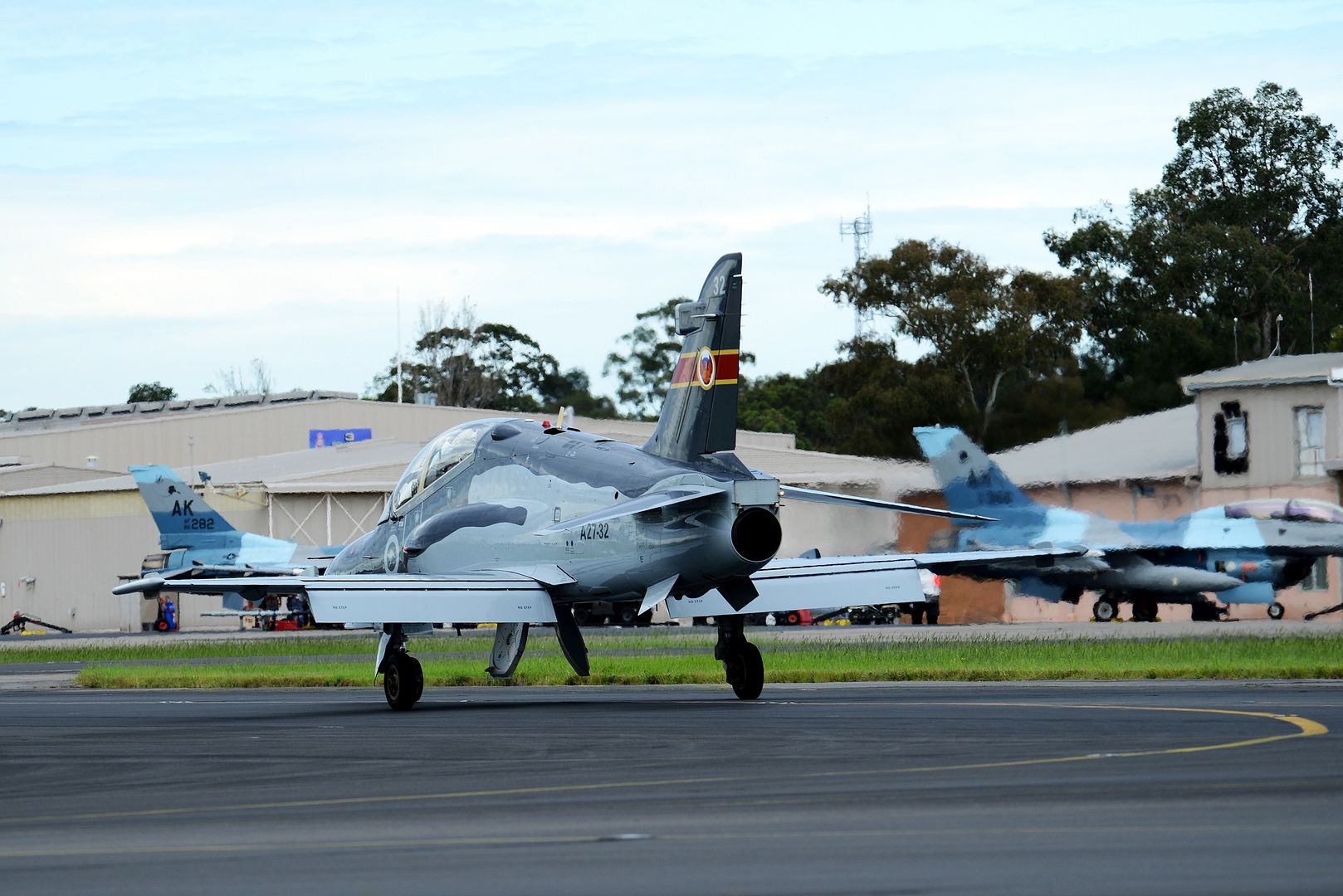
A Royal Australian Air Force F-18 Hornet takes off from RAAF Williamtown, during Exercise Diamond Shield 2017 in New South Wales, Australia, March 21, 2017. (U.S. Air Force photo by Tech. Sgt. Steven R. Doty)
ATLANTIC OCEAN (March 20, 2017) A T-45C Goshawk assigned to Carrier Training Wing (CTW) 1 performs a touch-and-go on the flight deck of the aircraft carrier USS Dwight D. Eisenhower (CVN 69) (Ike). Ike is currently conducting aircraft carrier qualifications during the sustainment phase of the Optimized Fleet Response Plan (OFRP). (U.S. Navy photo by Mass Communication Specialist 3rd Class Nathan T. Beard)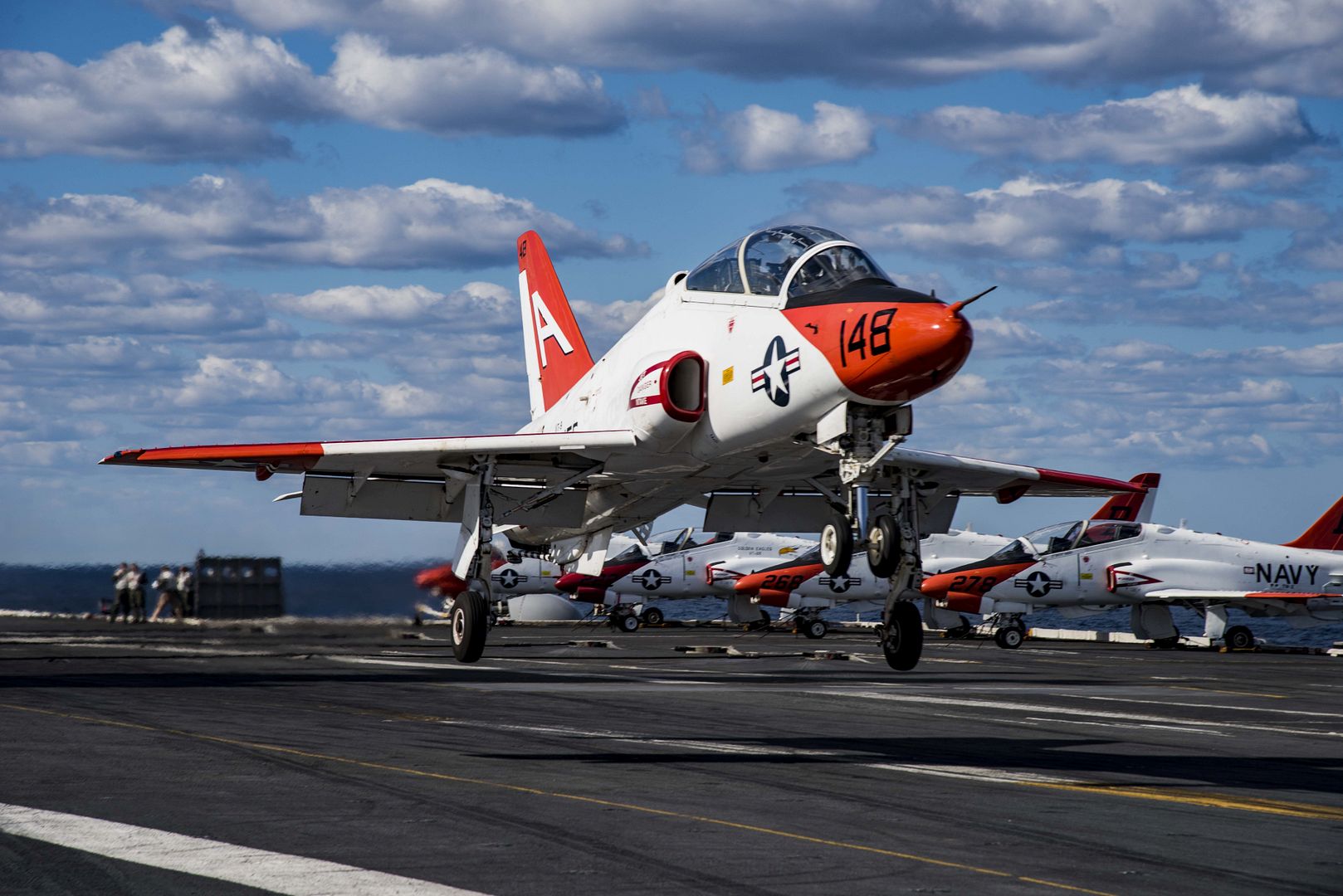
ATLANTIC OCEAN (March 20, 2017) A T-45C Goshawk assigned to Carrier Training Wing (CTW) 1 approaches the flight deck of the aircraft carrier USS Dwight D. Eisenhower (CVN 69) (Ike). Ike is currently conducting aircraft carrier qualifications during the sustainment phase of the Optimized Fleet Response Plan (OFRP). (U.S. Navy photo by Mass Communication Specialist 3rd Class Nathan T. Beard)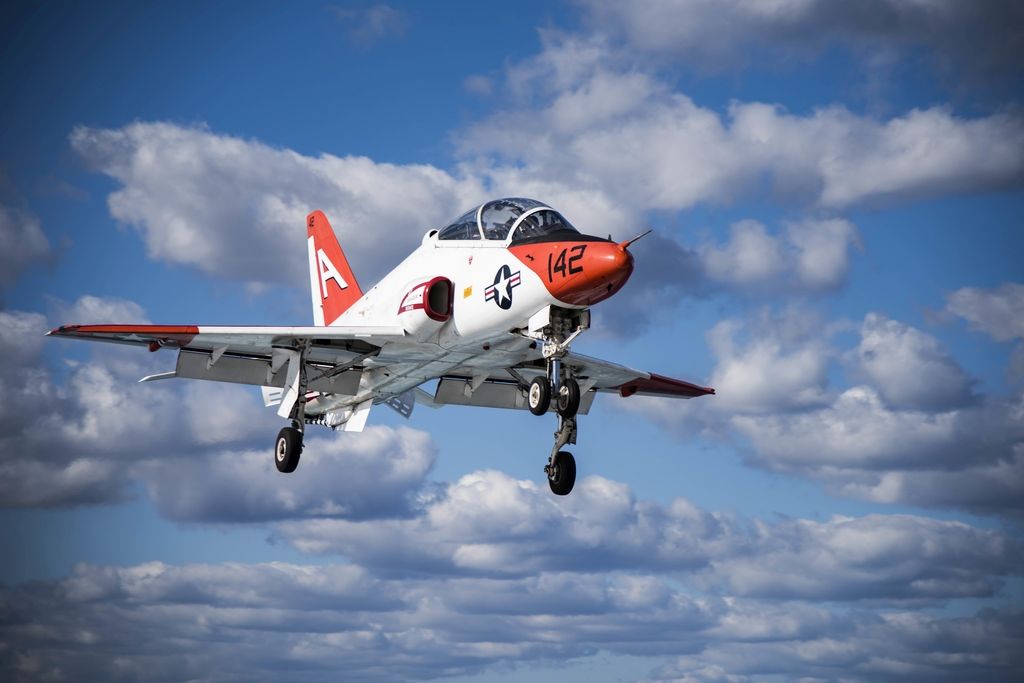
A local school child from Grigore Moisil School takes a picture of Romanian Warrant Officer Adrian Ursachi and his Mikoyan-Gurevich MiG 21 fighter jet during the Kids Day event at Mihail Kogalniceanu International Airport on March 21, 2017. The event was an opportunity for Romanian and U..S forces to work together in the public eye in support of Operation Atlantic Resolve, a NATO mission that promotes peace and strengthens the bonds between the U.S. and its NATO Allies and partners.(U.S. Army photo by Pvt. Nick Vidro, 7th Mobile Public Affairs Detachment)
DUBLIN, March 21, 2017 /PRNewswire/ -- Boeing (NYSE: BA) and Ryanair celebrated the delivery today of the airline's 450th Next-Generation 737-800. This significant milestone has been reached in less than two decades, with the Irish low-cost carrier taking an average delivery of 25 737-800s per year since 1999.
"Ryanair is proud to partner with Boeing and has operated an all-Boeing fleet since 1994," said Ryanair's Chief Operations Officer, Mick Hickey. "Our current order of 737-800s and the 737-MAX 200 'Gamechanger' will allow us to grow our fleet to 585 aircraft and our passenger numbers to 200 million per annum by 2024, maintaining our position as Europe's largest, and greenest and cleanest airline."
With more than 80 unfilled orders for Next-Generation 737-800s, Ryanair is also the launch customer for the 737 MAX 200, with 100 unfilled orders. The 737 MAX 200 can accommodate up to 200 seats, increasing revenue potential and providing airlines with up to 20 percent better fuel efficiency per seat than today's most efficient single-aisle airplanes.
"Ryanair has consistently demonstrated the outstanding economic, reliability and safety capabilities of the Next-Generation 737-800, using this airplane as the foundation to become one of the biggest airlines in the world," said Monty Oliver, vice president, European Sales, Boeing Commercial Airplanes. "To deliver the 450th 737-800 is truly a significant milestone in both companies shared history and we look forward to supporting Ryanair on the next phase of its incredible journey with the introduction of the 737 MAX 200."
Ryanair carried 119 million passengers last year with 1,800 daily flights to more than 200 destinations. The Dublin based carrier is the largest 737-800 customer in the world and the largest Boeing operator in Europe.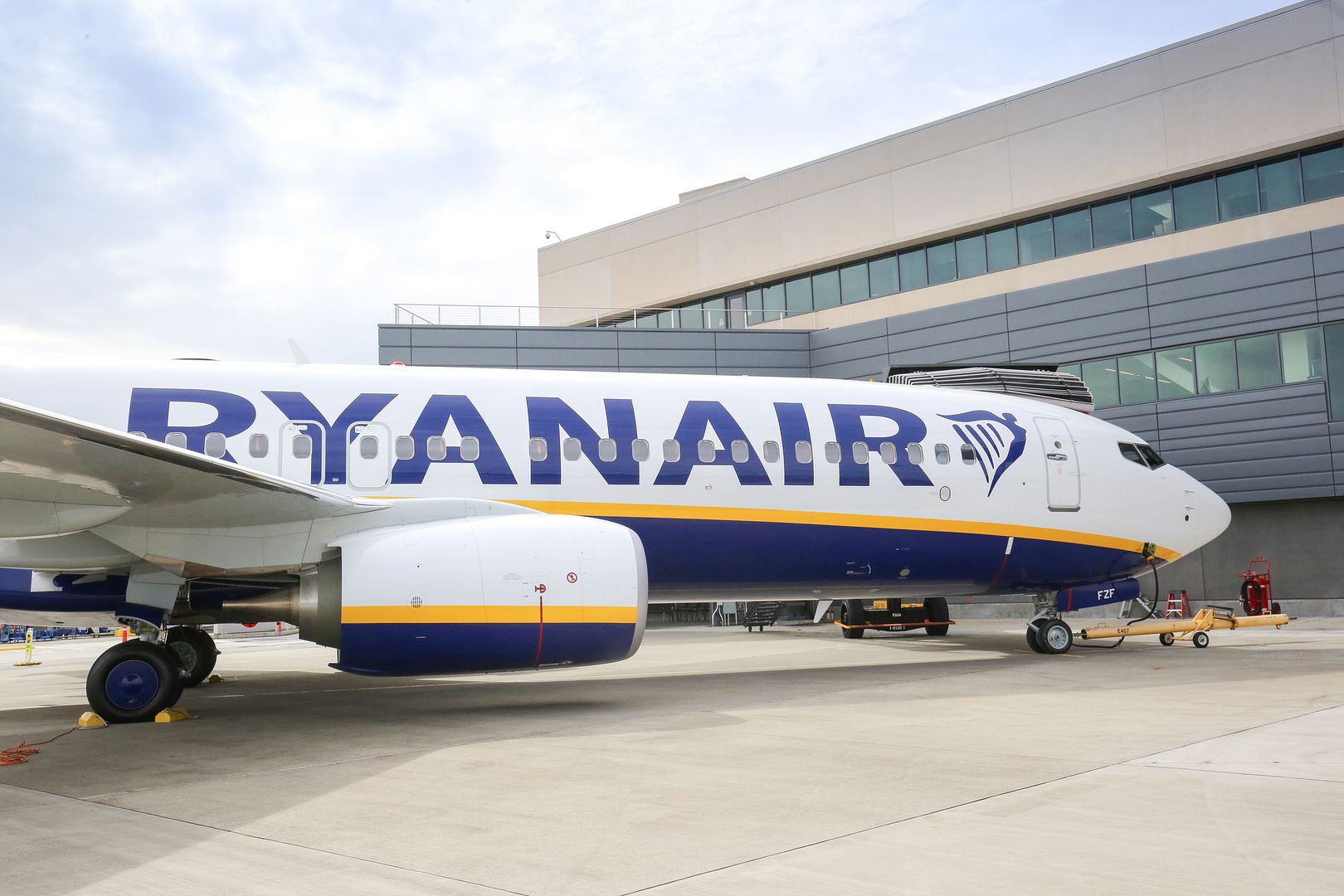
-
 Main AdminYokota Air Base, Japan --
Main AdminYokota Air Base, Japan --
The C-130J Super Hercules completed its first training sortie at Yokota Air Base, Japan, March 20, 2017. The aircraft soared over the skies of Japan, stopped at Misawa AB to for the aircrew to become proficient within the Super Hercules before returning to Yokota.
This flight allowed the crew to familiarize themselves with the newest C-130 model. The pilots completed approach, landing and en route procedures training; while also familiarizing themselves with the airspace. The loadmasters received hands-on training inside of the cockpit and became proficient with their new responsibilities of working as a three man crew on the J-model.
?Being in the Super Hercules has helped us get back into the mindset of flying our new aircraft to help us continue our mission here at Yokota and throughout the Pacific Region,? said Staff Sgt. Benjamin Baughman, 36th Airlift Squadron loadmaster instructor. ?The new aircraft model is great because it?s bigger and faster than the H-model. Because of this we are able to carry more cargo in less time to locations throughout Japan and other countries in the region.?
The C-130J incorporates state-of-the-art technology to reduce manpower requirements, lower operation and support costs, thus providing life-cycle cost savings over earlier C-130 models.
Yokota?s C-130s will also be 15 feet longer, increasing usable space and providing the ability to rapidly transport critical supplies, personnel and equipment around the Indo-Asia-Pacific region.
The Super Hercules will continue to arrive at Yokota until the base has received all 14 aircraft to replace the H-models.
?This flight was the start to an important week because all of the J crew are able to get out and fly the aircraft,? said Capt. Chase Hessman, 36 AS pilot. ?We are progressing from somewhat of a crawl, walk, run phase where we begin with proficiency training to performing tactical sorties and formation flights. Once we are successfully converted to the J-model?s, the flow of missions will become more regular and we will perform missions throughout the pacific on a more consistent basis.?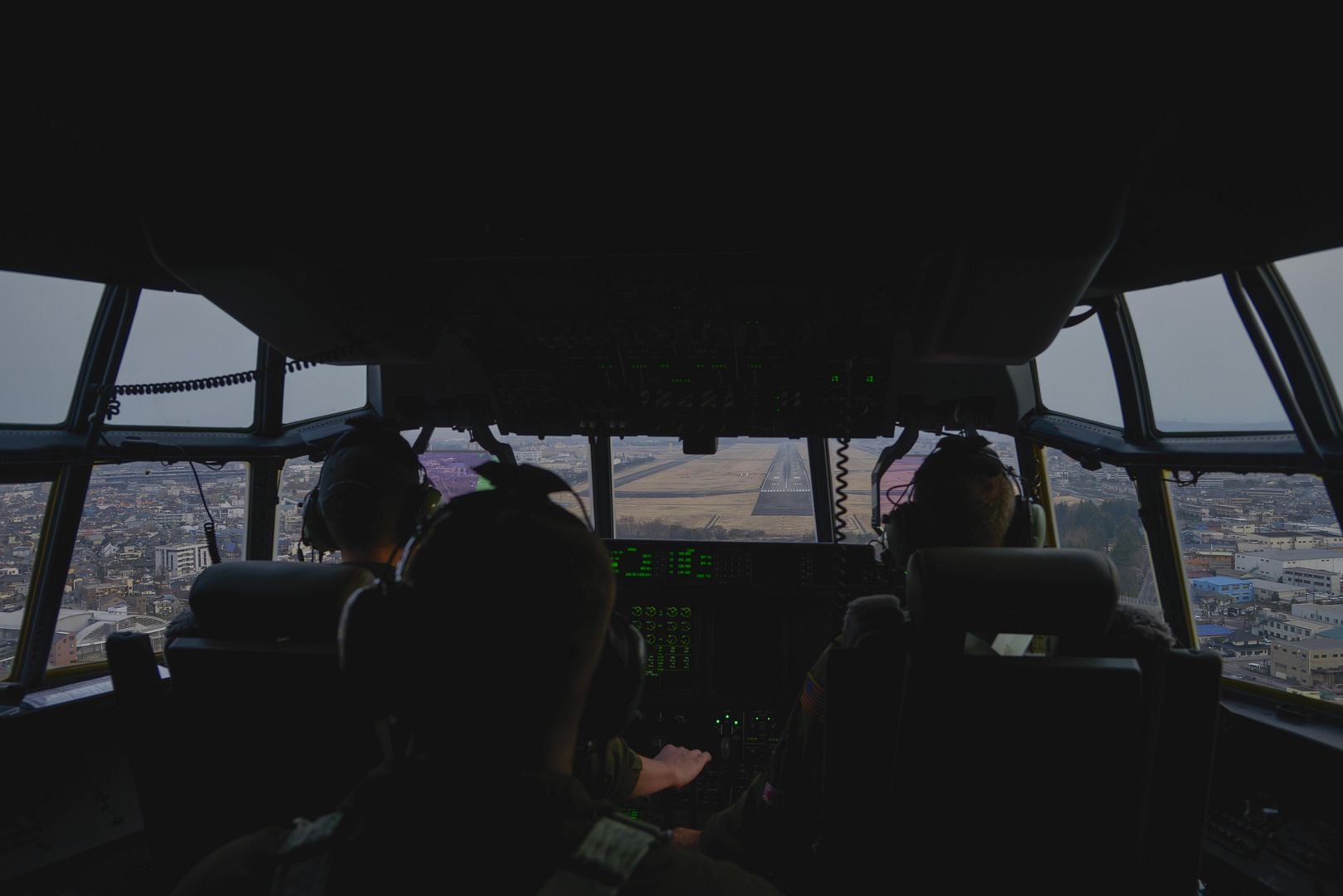
Dutch air policing mission in Lithuania. This photo was taken recently from a C27 Spartan transport aircraft of the Lithuanian Air Force and shows a Dutch F-16 during a training mission in the airspace of Lithuania.
(photographer defense sergeant Hille Hill Inga.)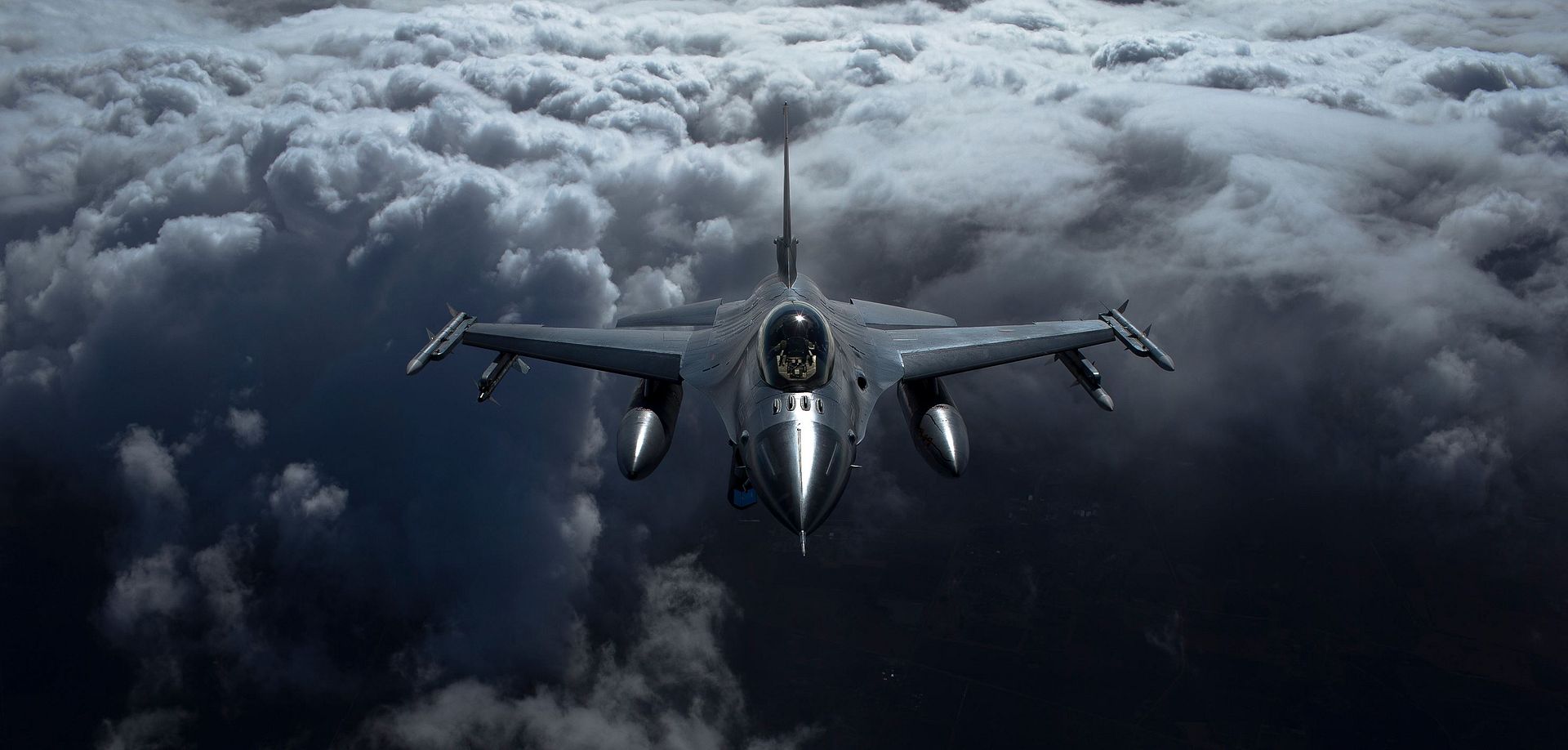
-
 Main AdminAn F/A-18C Hornet aircraft takes off during a field carrier landing practice aboard Marine Corps Air Station Beaufort, March 22. Marine Fighter Attack Squadron 312 conducts the training before embarkation aboard carriers. This FCLP was conducted in preparation for an upcoming exercise aboard the USS Theodore Roosevelt, a naval aircraft carrier, scheduled for April. The pilot and the aircraft are with VMFA-312, Marine Aircraft Group 31.
Main AdminAn F/A-18C Hornet aircraft takes off during a field carrier landing practice aboard Marine Corps Air Station Beaufort, March 22. Marine Fighter Attack Squadron 312 conducts the training before embarkation aboard carriers. This FCLP was conducted in preparation for an upcoming exercise aboard the USS Theodore Roosevelt, a naval aircraft carrier, scheduled for April. The pilot and the aircraft are with VMFA-312, Marine Aircraft Group 31.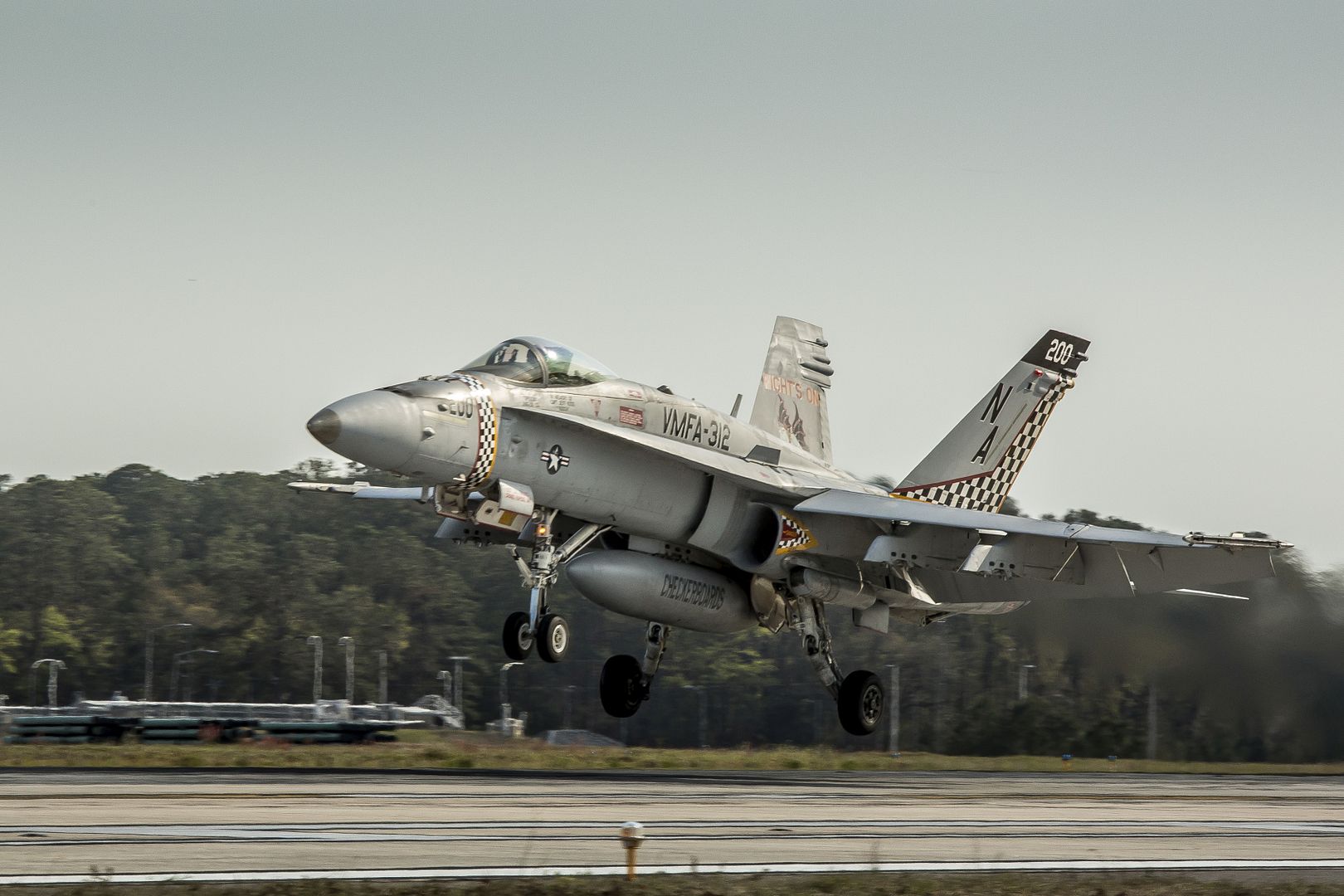
An F/A-18C Hornet aircraft conducts a simulated aircraft carrier landing aboard Marine Corps Air Station Beaufort, March 22. The runway is equipped with a painted outline simulating the carrier for the pilots. The Marine and aircraft are with Marine Fighter Attack Squadron 312, Marine Aircraft Group 31.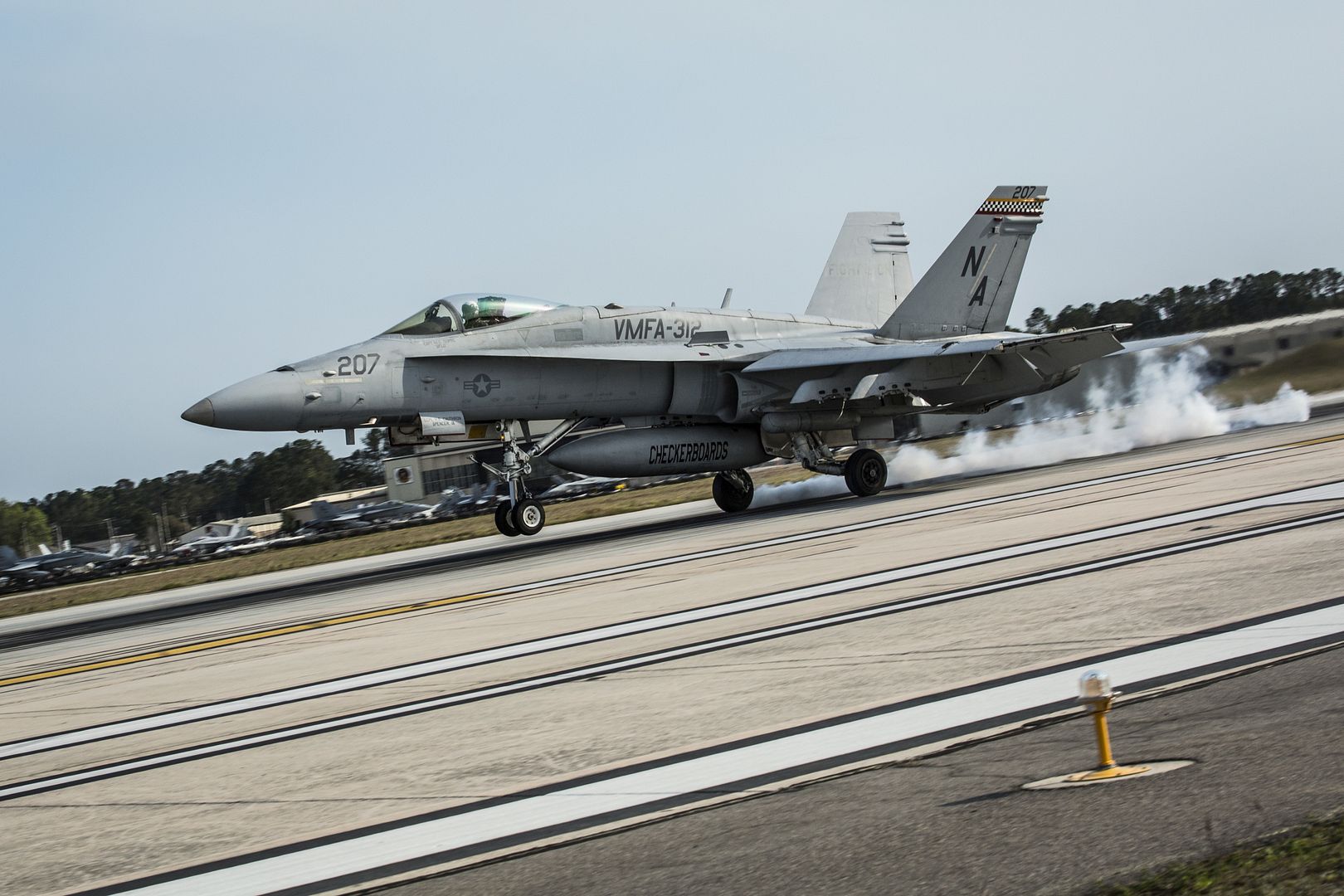
An F/A-18C Hornet aircraft takes off during a field carrier landing practice aboard Marine Corps Air Station Beaufort, March 22. This FCLP was conducted in preparation for an upcoming exercise aboard the USS Theodore Roosevelt, a naval aircraft carrier, scheduled for April. The pilot and the aircraft are with VMFA-312, Marine Aircraft Group 31.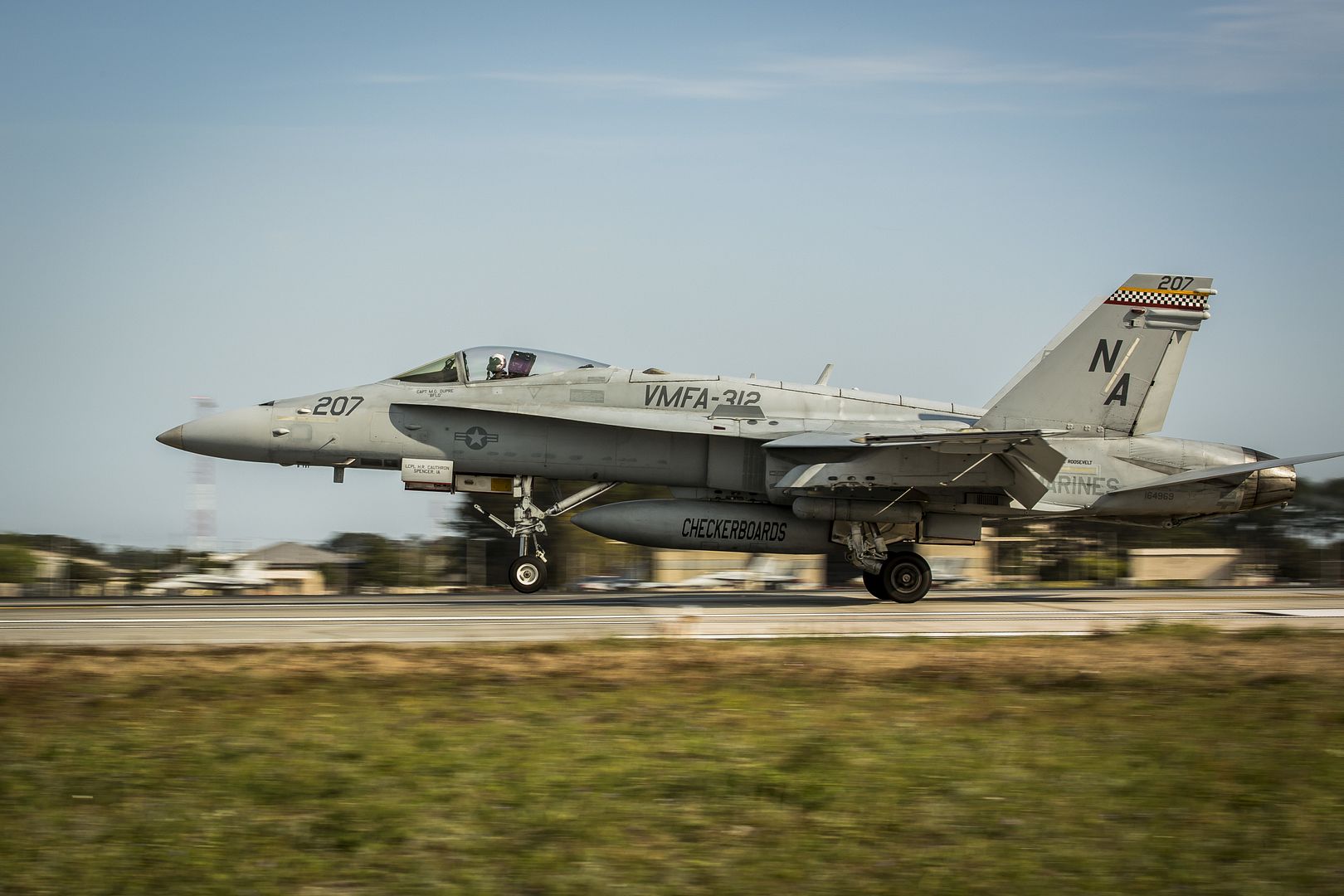
MEDITERRANEAN SEA (March 22, 2017) Cmdr. Andria Slough, commanding officer of the guided-missile destroyer USS Porter (DDG 78), prepares to board a Westland WG-13 Lynx helicopter, assigned to the French Navy frigate FS Montcalm (D 642), during exercise Dynamic Manta 2017, March 22. Dynamic Manta is an annual multilateral Allied Maritime Command (MARCOM) exercise meant to develop interoperability and proficiency in anti-submarine and anti-surface warfare.
Porter, forward-deployed to Rota, Spain, is conducting naval operations in the U.S. 6th Fleet area of operations in support of U.S. national security interests in Europe. (U.S. Navy photo by Mass Communication Specialist 3rd Class Ford Williams/Released)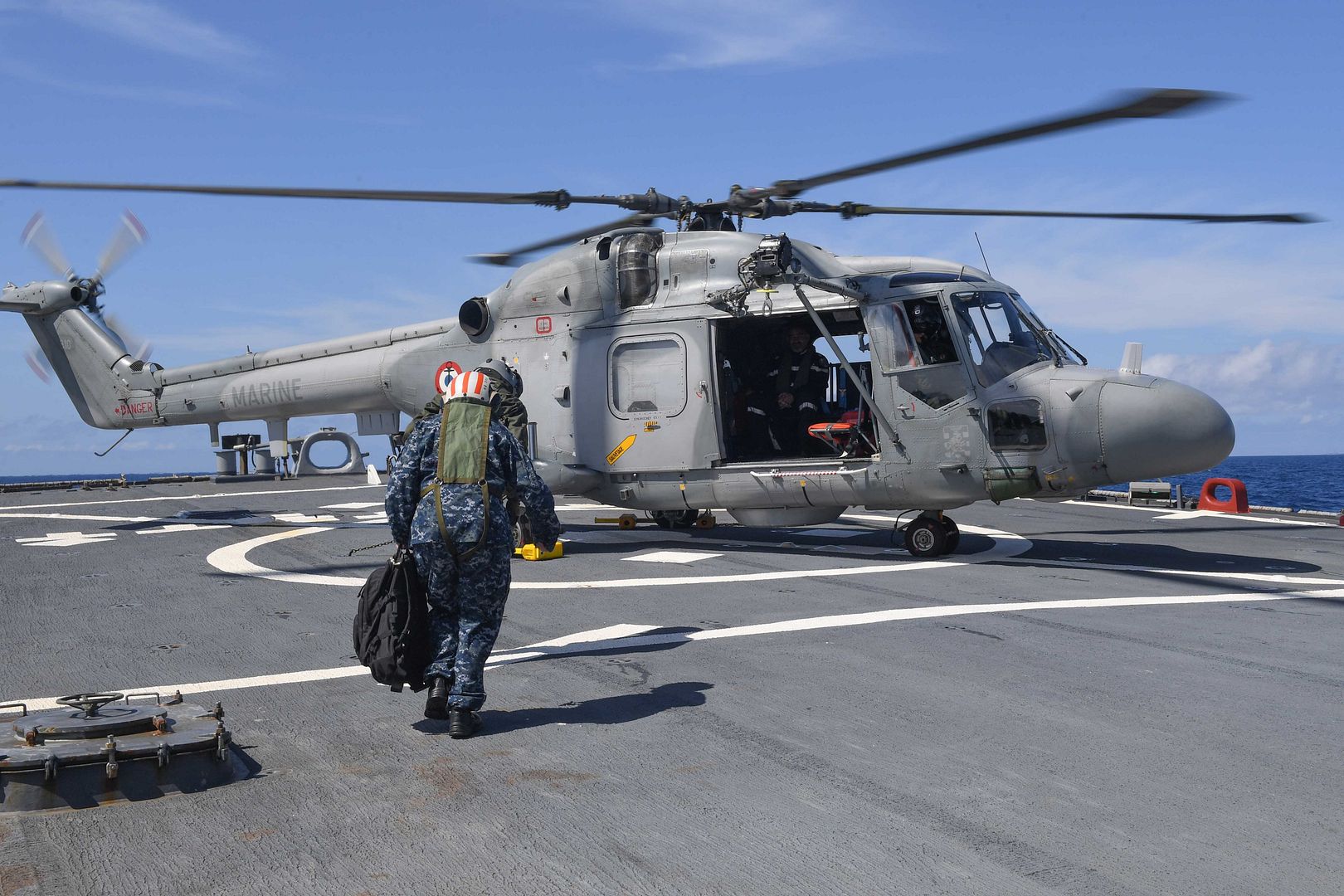
An F/A-18 Hornet with Marine Fighter Attack Squadron (VMFA) 314 takes off en route to a simulated dog fight against the Air Force?s F-16 Falcons with the 310th Fighter Squadron at Marine Corps Air Station Miramar, Calif., March 16. The two squadrons are training their pilots in basic fighting maneuvers from March 16 to March 24 at MCAS Miramar.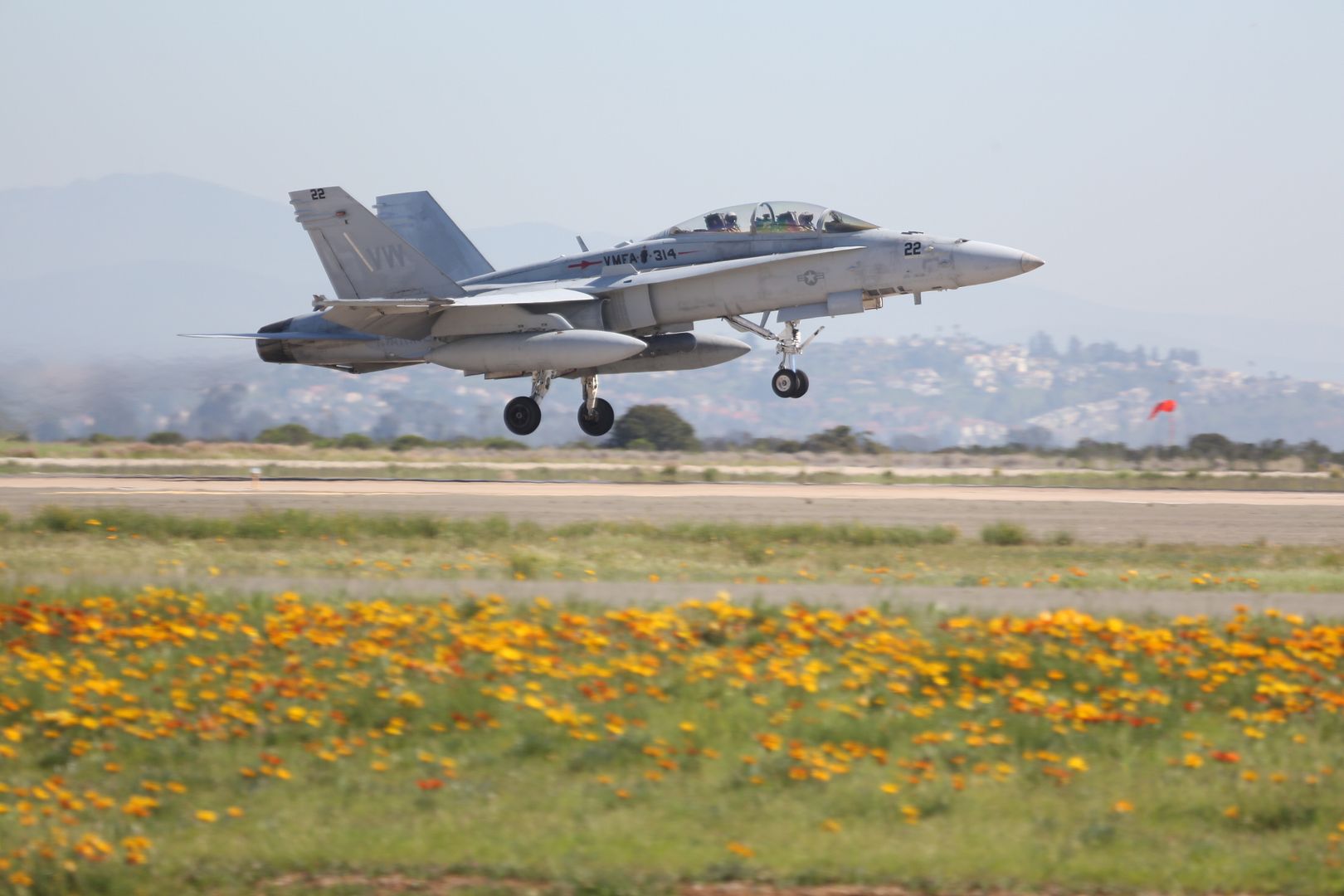
F-5N Tiger II fighter jets with Marine Fighter Training Squadron (VMFT) 401 trained at MCAS Miramar with Marine Fighter Attack Squadron (VMFA) 314 and the 310th Fighter Squadron March 16. This training allowed both services to experience different flight tactics and train with different aircraft.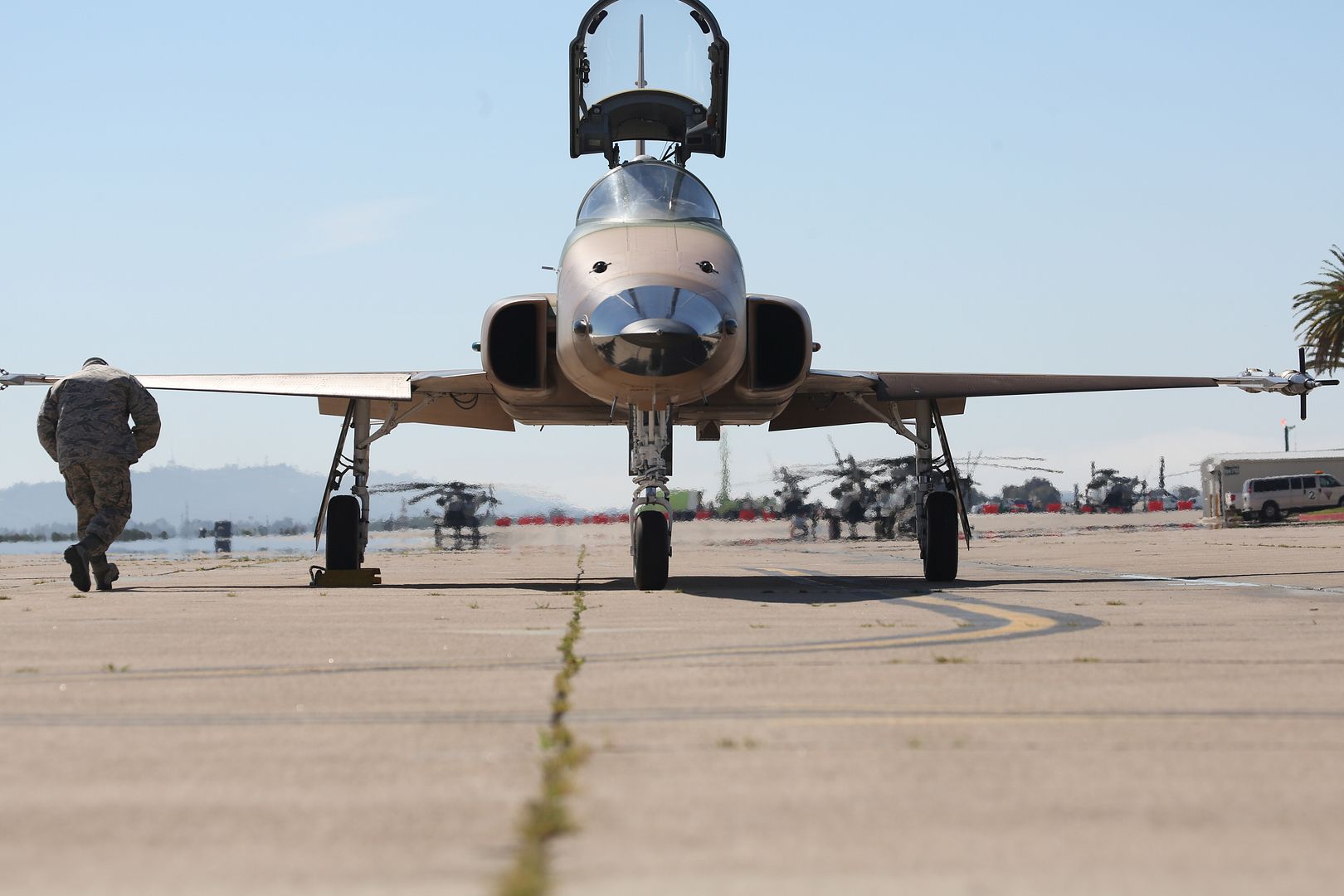
An F-16 Falcon with the Air Forces 310th Fighter Squadron takes off en route to a simulated dog fight against F/A-18 Hornets with Marine Fighter Attack Squadron (VMFA) 314 at Marine Corps Air Station Miramar, Calif., March 16. The two squadrons are training their pilots in basic fighting maneuvers from March 16 to March 24 at MCAS Miramar.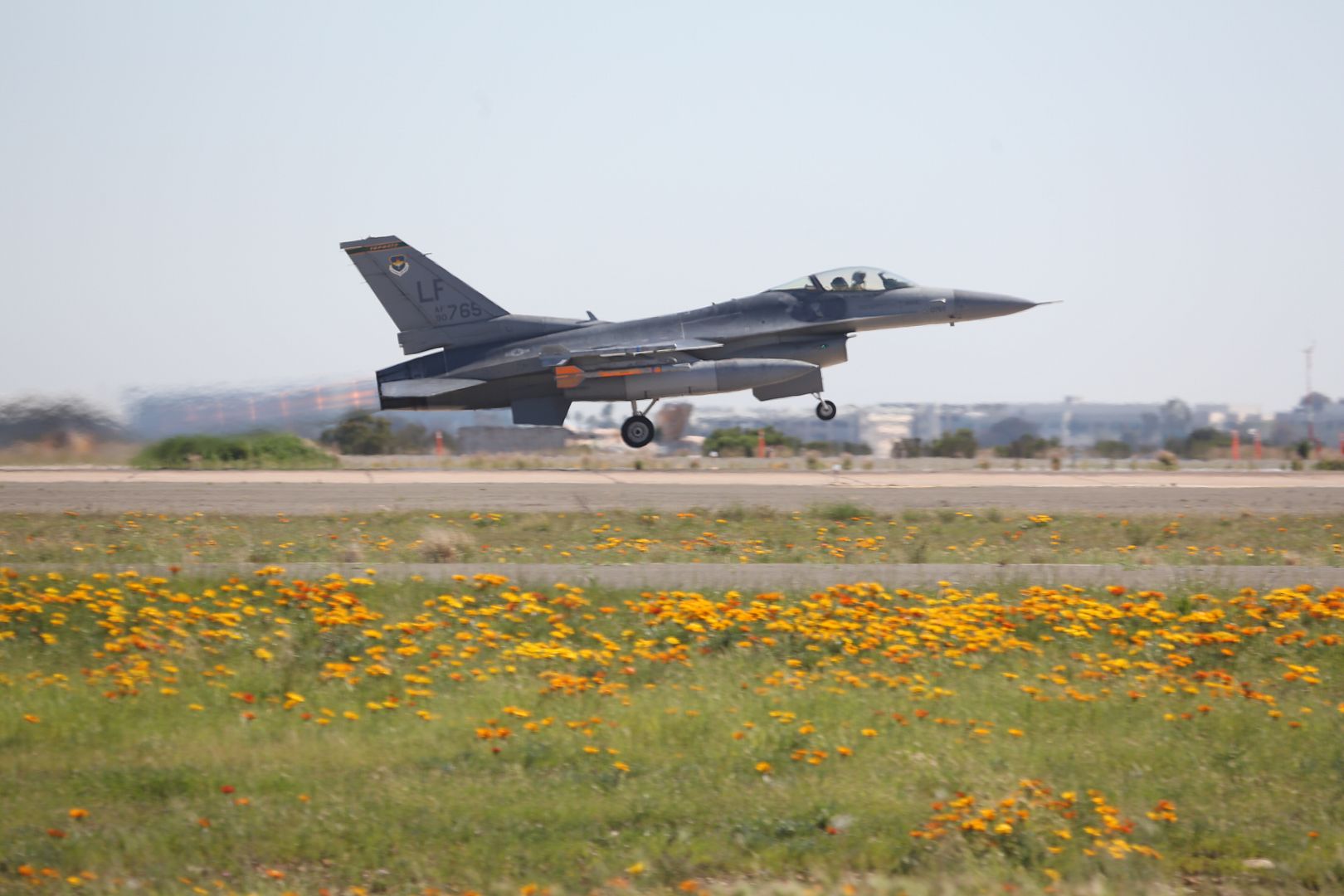
A Royal Australian Air Force F/A-18A Hornet receives fuel from a U.S. Air Force KC-10 Extender while flying a mission in support of Operation Okra over Iraq, March 22, 2017. The RAAF is supporting Combined Joint Task Force-Operation Inherent Resolve through Operation Okra. Since operations commenced in 2014, the F/A-18A Hornets and F/A-18F Super Hornets have flown more than 12,000 hours during more than 2,000 sorties and delivered more than 1,600 munitions. (U.S. Air Force photo/Senior Airman Tyler Woodward)
An E-3 Sentry moves into position to receive fuel from a KC-10 Extender during a sortie in support of Combined Joint Task Force-Operation Inherent Resolve over Iraq, March 22, 2017. During CJTF-OIR, the E-3 Sentry has provided a real-time picture of the battle space for multi-national Coalition aircraft working to weaken and destroy Islamic State in Iraq and the Levant operations in the Middle East region and around the world. (U.S. Air Force photo/Senior Airman Tyler Woodward)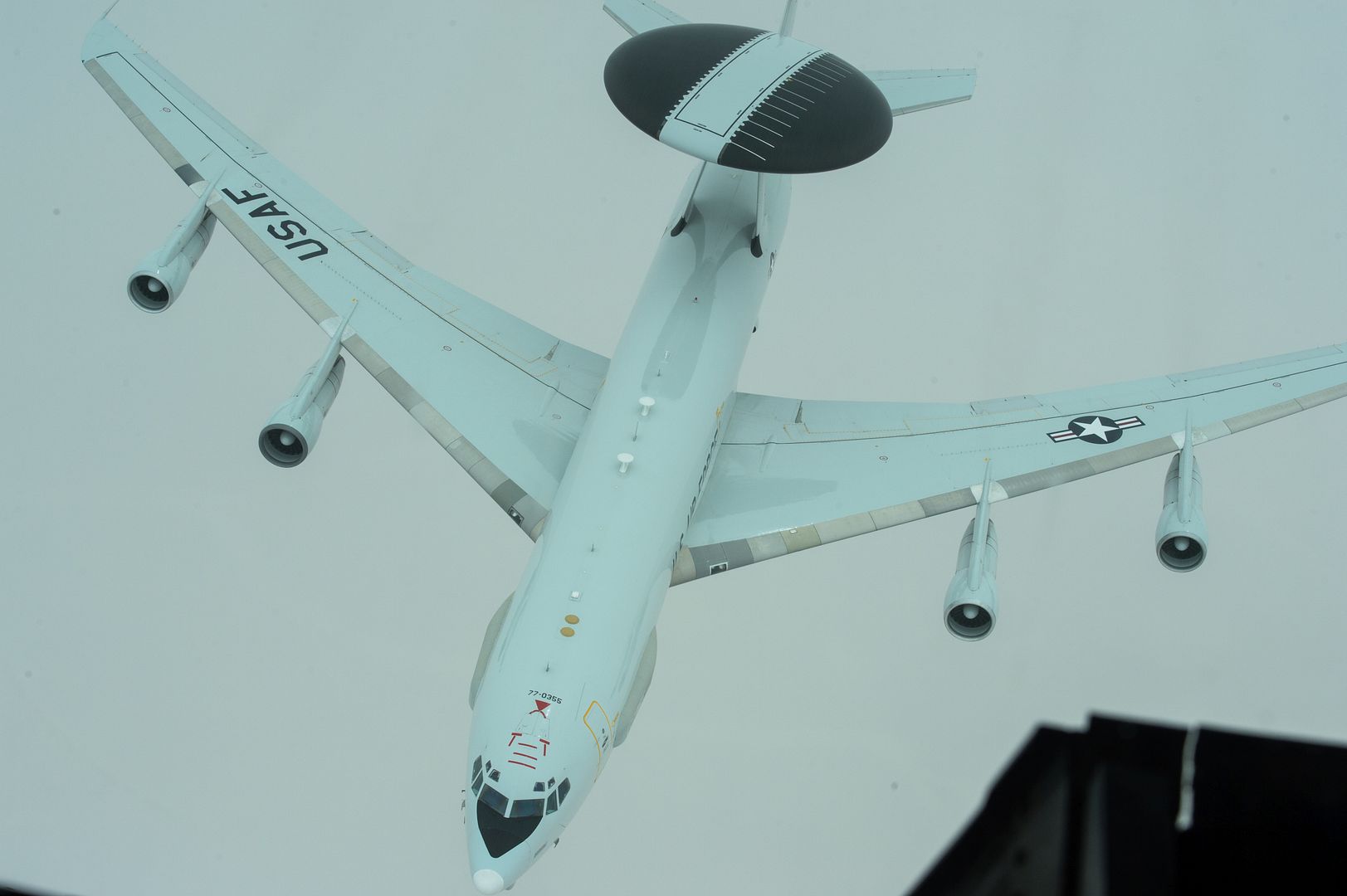
A Royal Air Force Typhoon receives fuel from a U.S. Air Force KC-10 Extender during a sortie in support of Combined Joint Task Force-Operation Inherent Resolve over Iraq, March 22, 2017. Extenders have provided fuel to multi-national Coalition aircraft in an effort to weaken and destroy Islamic State in Iraq and the Levant operations in the Middle East region and around the world. (U.S. Air Force photo/Senior Tyler Woodward)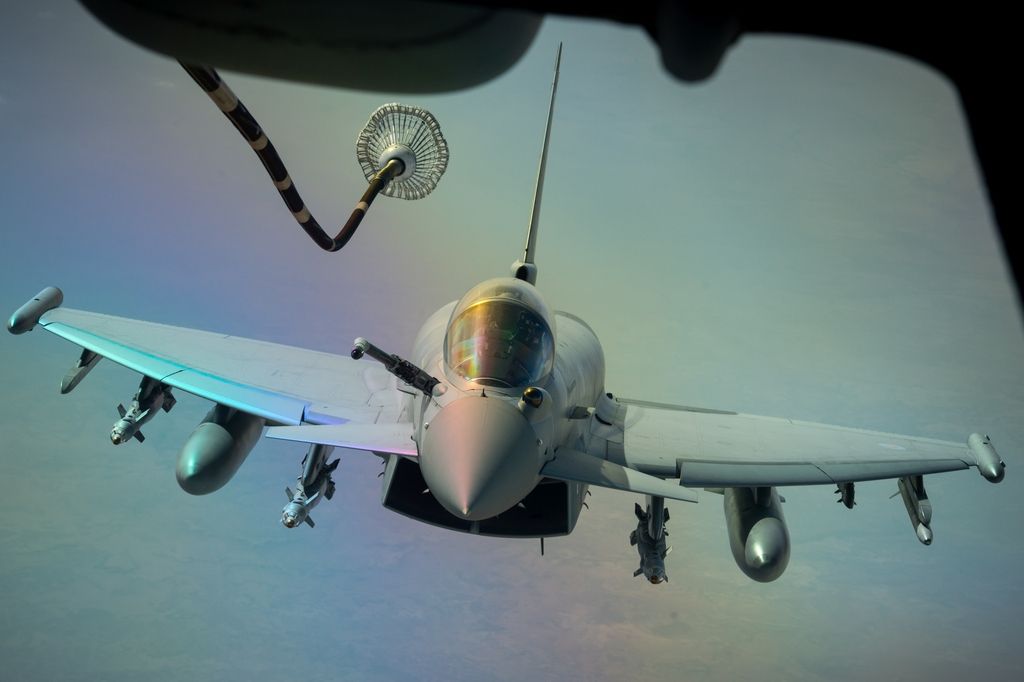
U.S. Air Force Maj. Shawn McGoffin, 354 Fighter Wing deputy inspector general and F-16 pilot, and U.S. Air Force Tech. Sgt. Wesley Walker, 354th Maintenance Squadron aircraft armament systems technician, taxi in an F-16 Fighting Falcon at Royal Australian Air Force Base Williamtown, in New South Wales, Australia, March 24, 2017. Prior to the 18th Aggressor Squadron completing their final sortie in Exercise Diamond Shield, Walker was offered an opportunity to observe the mission of training and preparing Royal Australian Air Force fighter combat instructors, airspace battle managers, fighter intelligence instructors and fighter combat controllers of the RAAF Air Warfare Centre Instructors Course from a perspective he?s never seen before; from 30,000 feet in the air. (U.S. Air Force photo by Tech. Sgt. Steven R. Doty)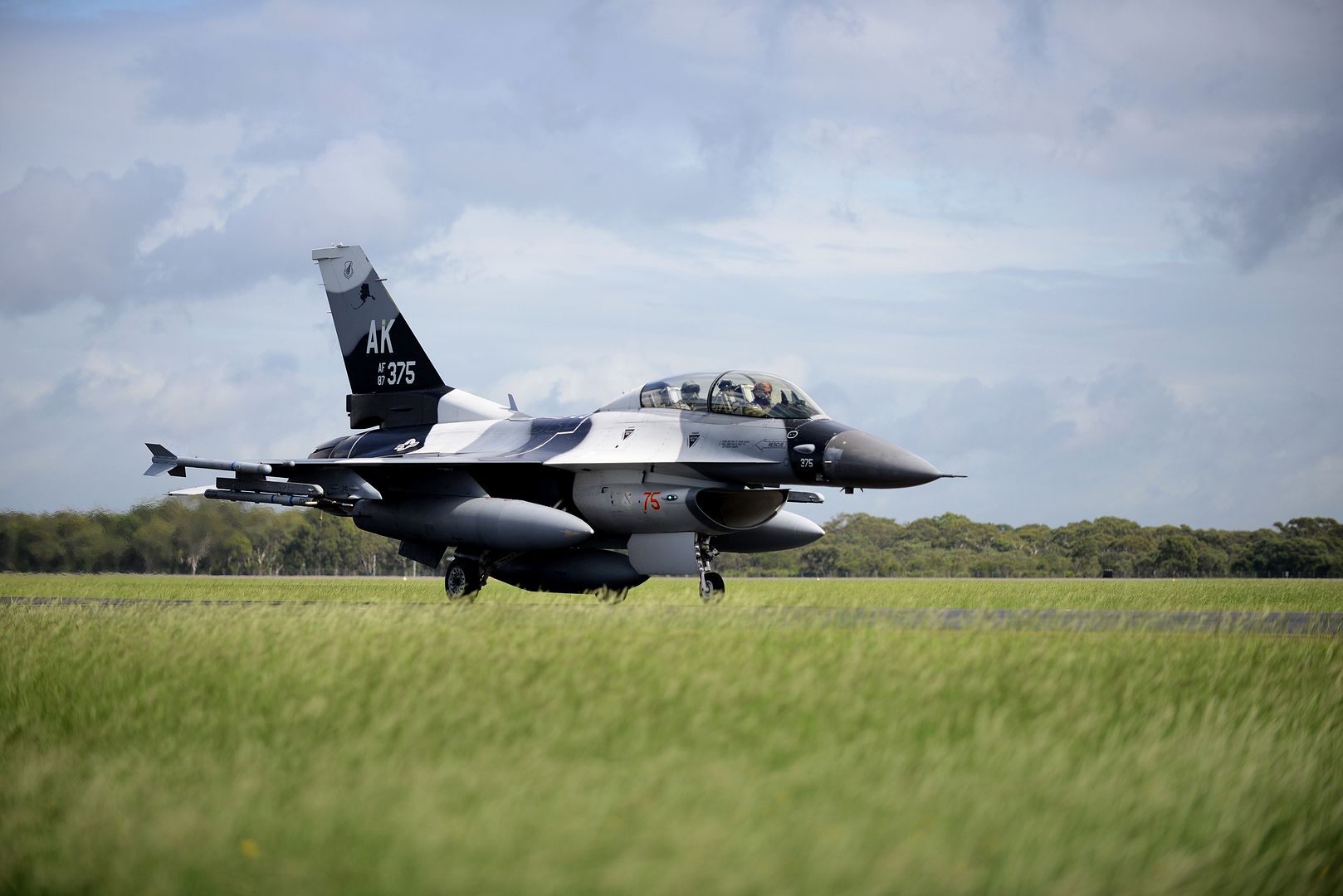
EDWARDS AIR FORCE BASE, Calif. --
The 416th Flight Test Squadron continually conducts developmental testing to enhance the warfighting capabilities of the F-16 Fighting Falcon. One focus of the F-16 testers here is the integration and testing of a new radar as part of the F-16 Radar Modernization Program.
According to its manufacturer, Northrop Grumman, the APG-83 Scalable Agile Beam Radar is a fifth-generation radar that is an Active Electronically Scanned Array fire control radar. It is intended to replace currently used APG-66 and APG-68 radars and provide the F-16 with advanced capabilities similar to fifth-generation fighters like the F-22 Raptor and F-35 Lightning II. It also has the ability to operate in dense electronic environments, simultaneous multi-mode operations and enhanced system availability through increased reliability, maintainability and supportability.
The APG-83 is designed to be installed without making any major modifications to the jet.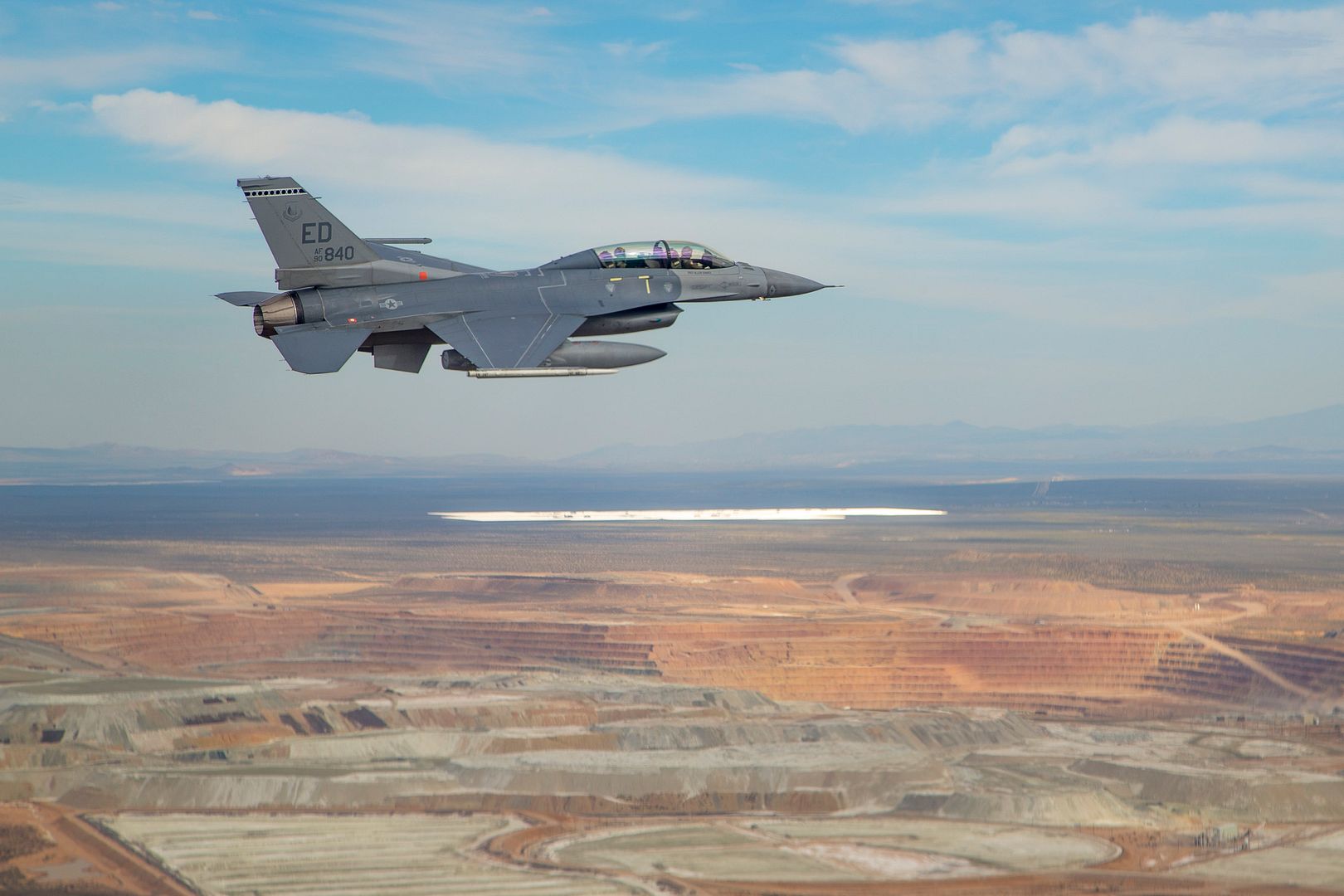
?The APG-83 will be a form, fit and function modification that will operate within existing space, power and cooling capabilities of the platform,? said Lt. Col. Chris Keithley, 416th FLTS commander.
The APG-83 could satisfy a need for F-16 users to counter increasingly sophisticated and technological threats with increased bandwidth that would allow the F-16 to detect, track and identify greater numbers of targets faster, and at greater distances.
?With the modernization comes increased capabilities,? said Michael Powell, 416 FLTS, project lead. ?It is a more modern and stable radar.?
Powell added the F-16 RMP at the 416th FLTS is ongoing with several ground and flight tests performed with the APG-83 in the past two years. Data collected will be used by the Air Force to determine if the radar can be implemented operationally in the future.
The F-16A first flew in December 1976 with the first operational F-16A delivered to the Air Force in January 1979. Since then, improvements have led to the F-16C and F-16D, which are the current single- and two-seat versions. All active U.S. Air Force units and Air National Guard and Air Force Reserve units have converted to the F-16C/D, according to the Air Force.
Since 9/11, the F-16 has been a major component of the combat forces committed to the War on Terrorism flying thousands of sorties.
The F-16 is also flown by several partner nations around the world.
-
 Main AdminA U.S. Marine Corps F-35B Lightning II with Marine Fighter Attack Squadron (VMFA) 121, takes off from Marine Corps Air Station Iwakuni, Japan, March 23, 2017. VMFA-121 aims to fill close air support missions in support of 5th Anglico for the Korea Marine Exercise Program (KMEP) 17-5 in the Republic of Korea (ROK) later this month. The Marine Corps will continue to support the ROK-U.S. alliance with the most advanced aircraft platforms in their inventory.
Main AdminA U.S. Marine Corps F-35B Lightning II with Marine Fighter Attack Squadron (VMFA) 121, takes off from Marine Corps Air Station Iwakuni, Japan, March 23, 2017. VMFA-121 aims to fill close air support missions in support of 5th Anglico for the Korea Marine Exercise Program (KMEP) 17-5 in the Republic of Korea (ROK) later this month. The Marine Corps will continue to support the ROK-U.S. alliance with the most advanced aircraft platforms in their inventory.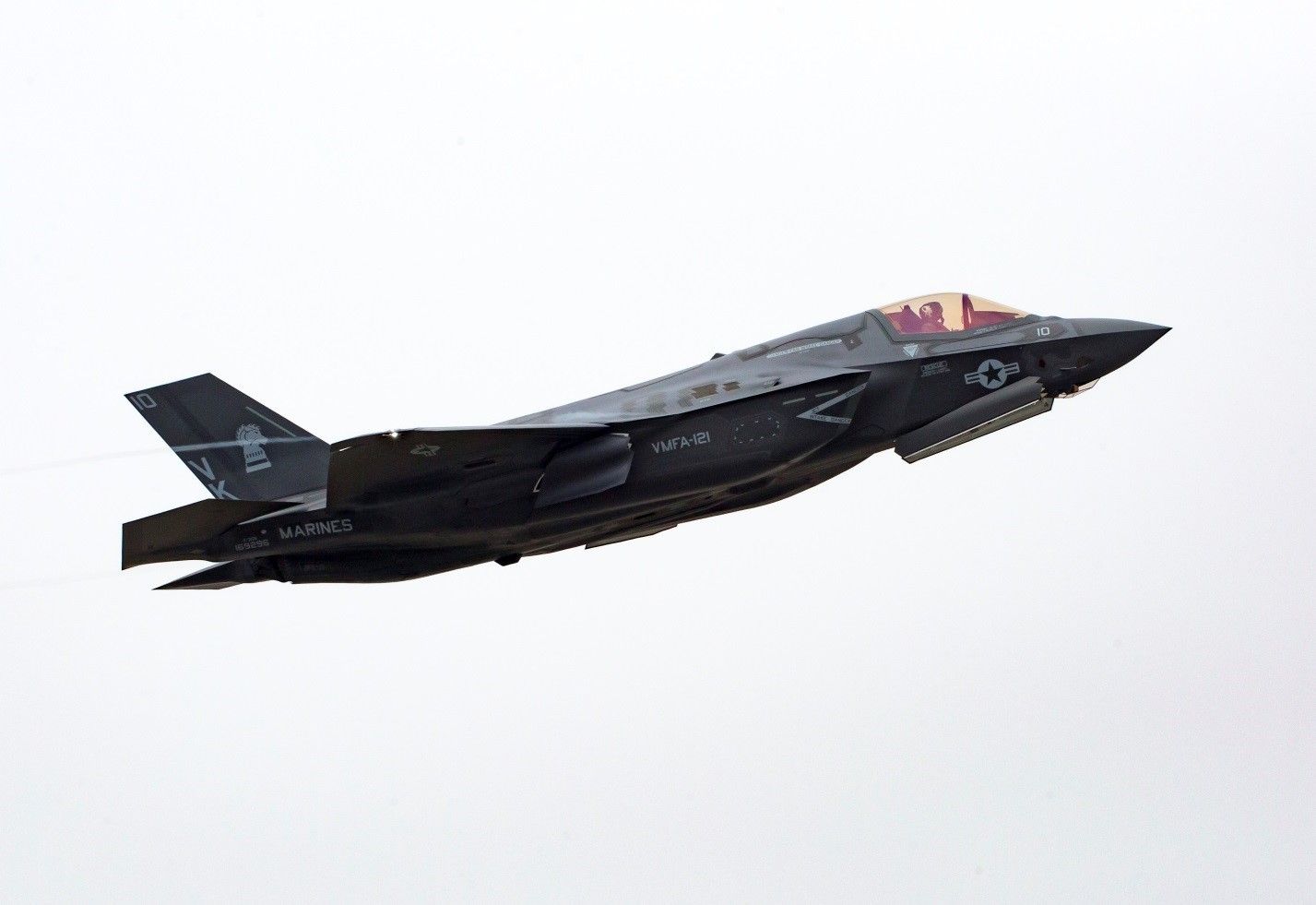
ARABIAN GULF (March 23, 2017) An F/A-18F Super Hornet attached to the "Blacklions" of Strike Fighter Squadron (VFA) 213 launches from the flight deck of the aircraft carrier USS George H.W. Bush (CVN 77). The ship is deployed in the U.S. 5th Fleet area of operations in support of maritime security operations designed to reassure allies and partners, and preserve the freedom of navigation and the free flow of commerce in the region. (U.S. Navy photo by Mass Communication Specialist 3rd Class Christopher Gaines/Released)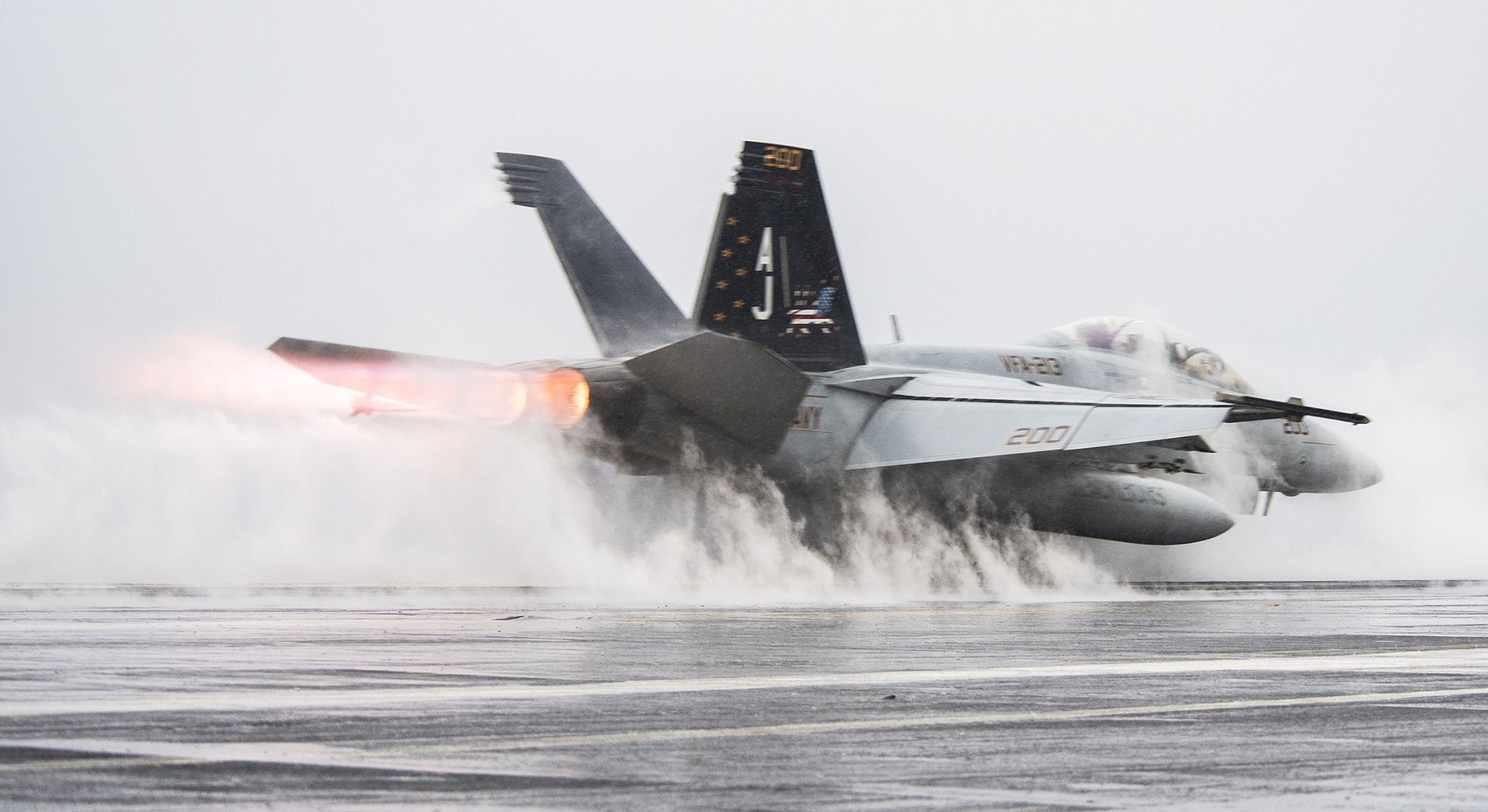
U.S. 7TH FLEET AREA OF OPERATIONS (March 24, 2017) An EA-18G Growler assigned to the ?Gauntlets? of Electronic Attack Squadron (VAQ) 136 makes an arrested landing aboard the aircraft carrier USS Carl Vinson (CVN 70). The ship and it's carrier strike group is on a western Pacific deployment as part of the U.S. Pacific Fleet-led initiative to extend the command and control functions of U.S. 3rd Fleet. (U.S. Navy photo by Mass Communication Specialist 3rd Class Matt Brown/Released)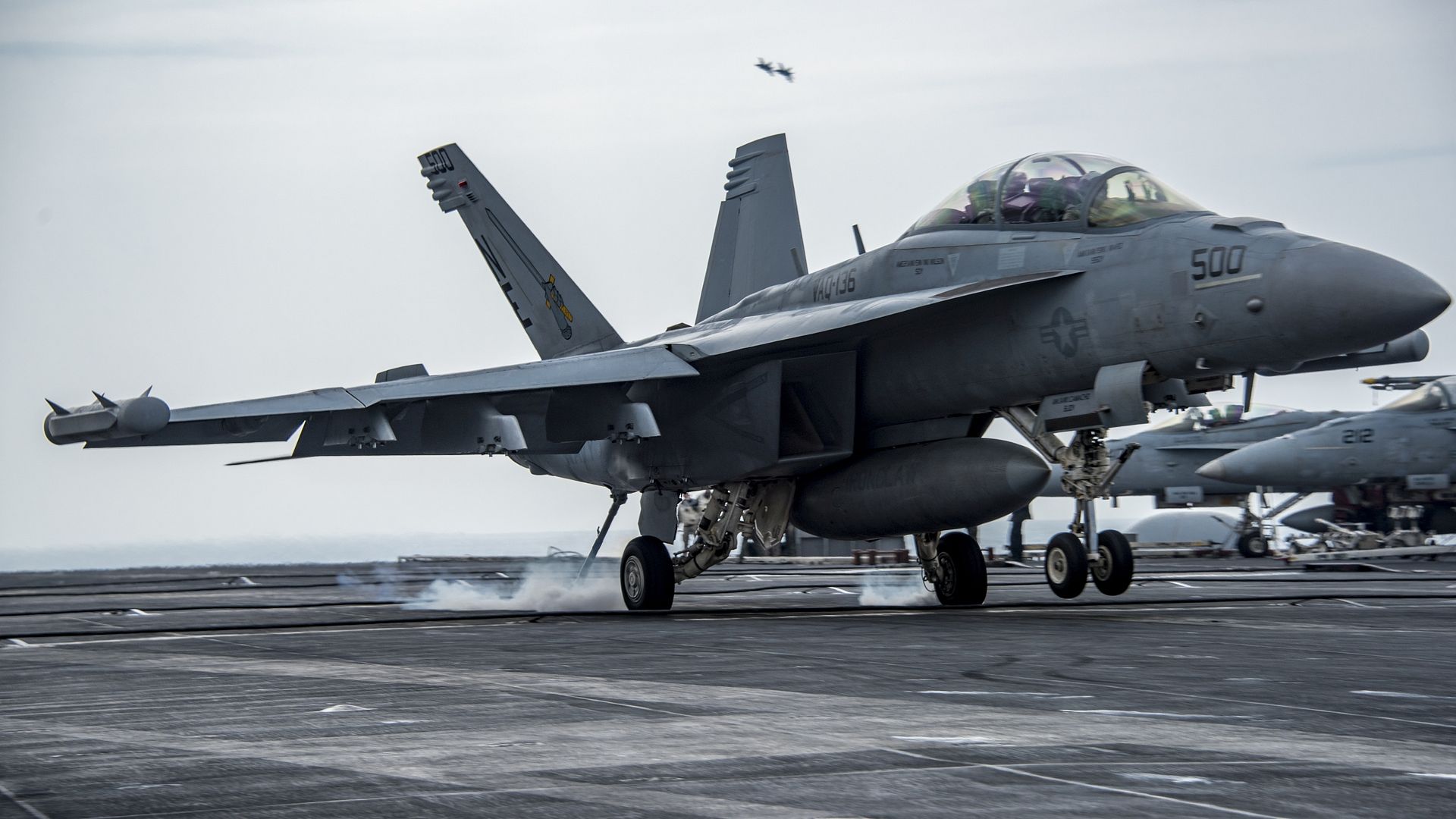
The static tail of an E-3G Airborne Warning and Control System aircraft in the foreground frames another E-3 as it taxis toward the runway for a mission with the 552nd Air Control Wing March 24, 2017, Tinker Air Force Base, Oklahoma. The E-3 AWACS celebrated its 40th anniversary at Tinker AFB on March 23, 2017.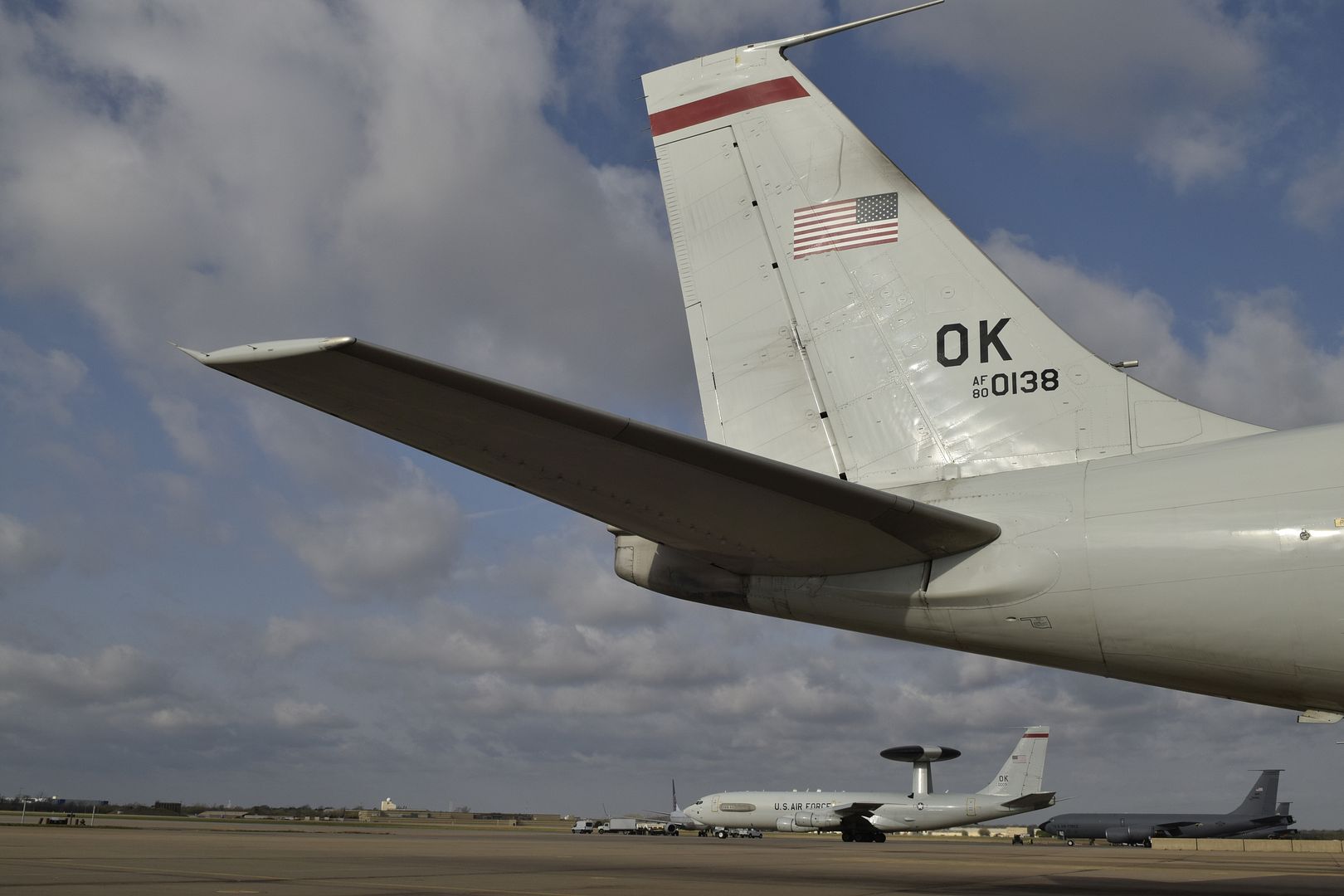
SAN DIEGO ?March 23, 2017 ? The Battlefield Airborne Communications Node (BACN), developed, operated, and maintained by Northrop Grumman Corporation (NYSE: NOC) for the U.S. Air Force, has completed 10,000 combat missions connecting warfighters in the air and on the ground.
BACN is a high-altitude, airborne gateway that translates and distributes voice communications, video, imagery and other battlespace information from numerous sources. Using a suite of computers and radio systems, BACN bridges and extends communications among disparate users and different datalink networks to provide situational awareness and enable better command and control coordination between warfighters and commanders.
The BACN fleet comprises four E-11A manned systems and three Northrop Grumman EQ-4B Block 20 Global Hawk unmanned aircraft systems. BACN supports missions executed in Southwest Asia and reached the 10,000 combat mission milestone, March 6, 2017.
?This is a significant milestone as the BACN system continues to demonstrate it is absolutely indispensable to our warfighters in the execution of their missions. Airborne Gateways greatly increase situational awareness and command and control, capabilities that are equally critical for joint and coalition operations,? said Jeannie Hilger, vice president, communications business, Northrop Grumman Mission Systems.
The persistent connectivity BACN provides is used to successfully execute a number of missions, including airdrops and overall air operations. The system's beyond-line-of-sight capability has been particularly useful overcoming the communications limitations posed by Afghanistan's rugged terrain.
Northrop Grumman is the prime contractor for developing, deploying, operating and sustaining BACN in support of U.S. Central Command. Northrop Grumman maintains the BACN E-11A aircraft platforms; the U.S. Air Force maintains the EQ-4B Global Hawk platforms.
Northrop Grumman was awarded the first BACN contract in April 2005 by the U.S. Air Force Life Cycle Management Center (previously the Air Force Electronics Systems Center), Hanscom Air Force Base, Massachusetts. Since the system was deployed in 2008, it has delivered near 24/7 coverage in theater and maintained a payload availability rate of greater than 98 percent.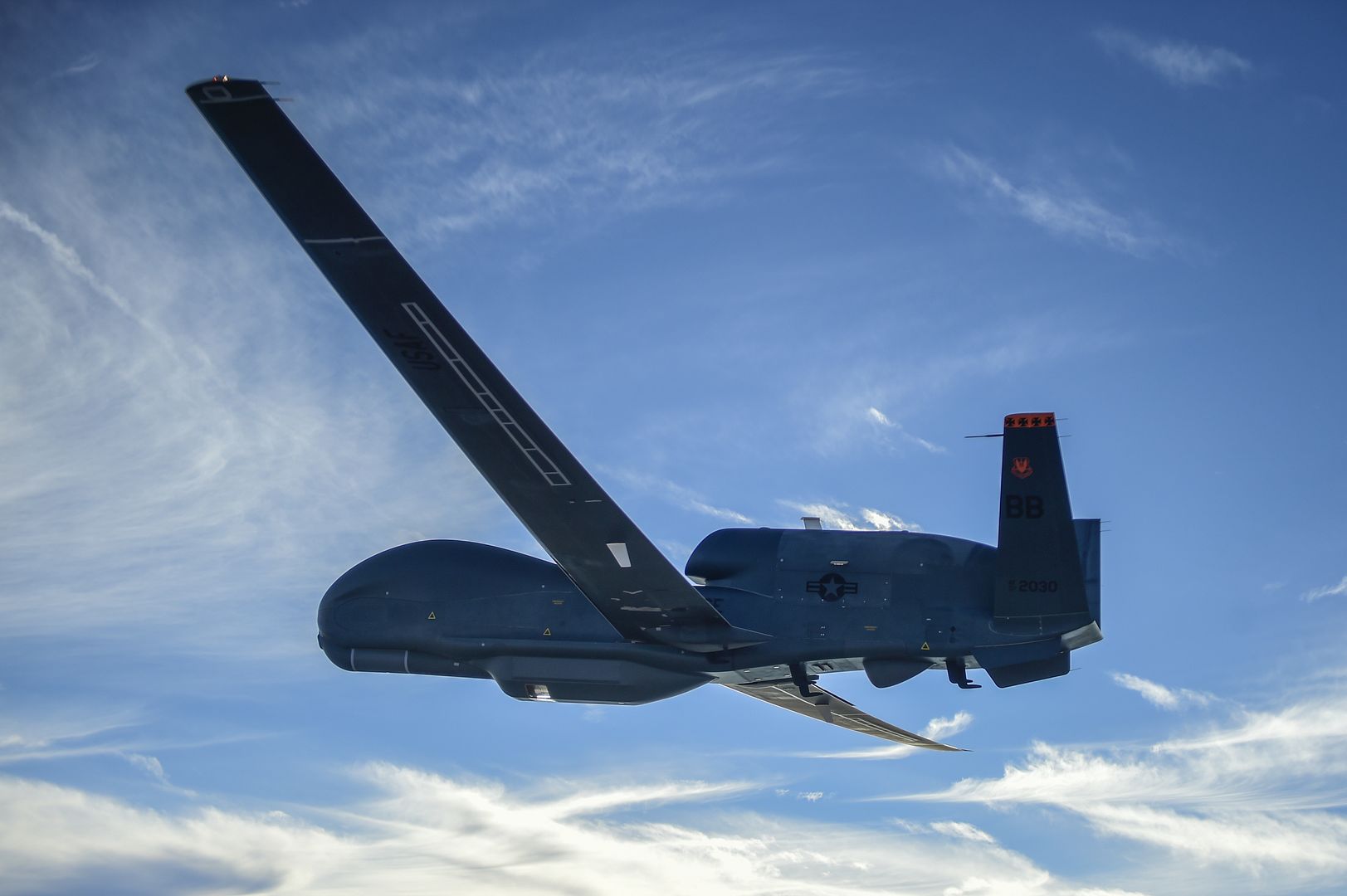
March 24.
A Squadron of RAF Tornados from RAF Marham, and engineering, support and logistic personnel from RAF Wittering and elsewhere, left the UK over the past couple of days headed for the north of the Netherlands. Exercise Frisian Flag will see the Tornados playing the role of "Red Force" for a multi-national NATO training fortnight featuring aircraft from America, Netherlands, France and many more. The RAF squadron will be acting as an aggressor nation, simulating an attack element that our NATO allies will have to protect against as part of their training.
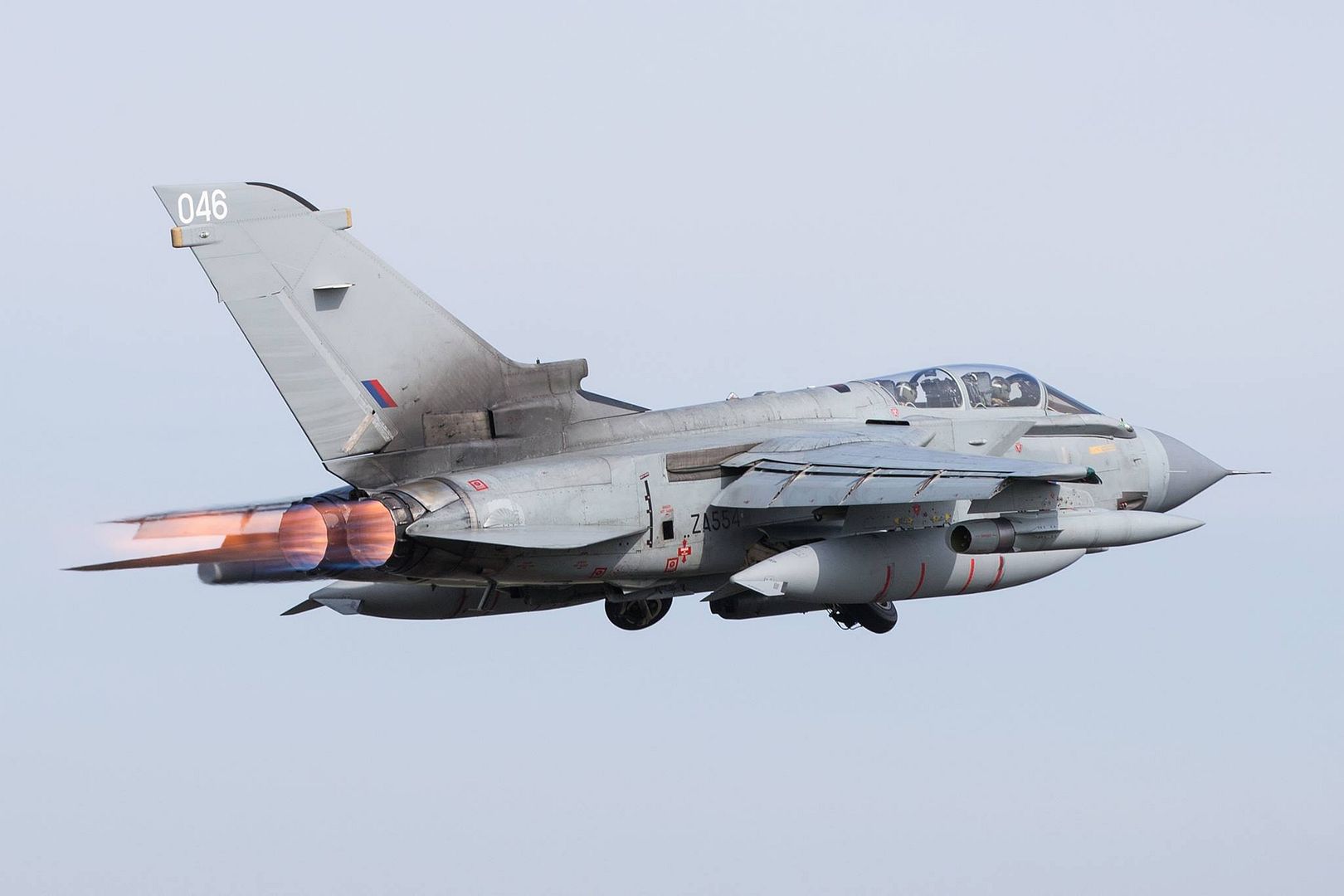
Photo's RAF.
-
 Main Admin23 March 2017 Press Release
Main Admin23 March 2017 Press Release
With the objective of conducting a ?High and Warm? flight test campaign to check aircraft and engine performance in high-altitude, warm and humid conditions, the A350-1000 MSN071 test aircraft flew first to Bolivia before completing its tour in Colombia and then returning to Toulouse, France, after 10 days of flight and ground tests.
The flight test campaign took place at three different airports:
? Cochabamba at an altitude of 8,300ft (2,350m)
? La Paz at 13,300ft (4,054m)
? Barranquilla at sea level, with temperatures ranging between 8?C and 32?C
The aircraft took-off and landed several times at each airport to collect data.
Early test results confirm the good performance and behavior of both the aircraft and its Trent XWB-97 engines. This is a major successful milestone in the aircraft certification flight test campaign.
The A350-1000 is ready for high altitude operations from Entry Into Service later this year.
All three A350-1000 flight test aircraft (MSN059, MSN071 and MSN065) are engaged in the ongoing Type Certification campaign, during which the aircraft is pushed to extreme limits well beyond what they should ever face during normal in-service operations.
With over 1,000 aircraft sold and a backlog of nearly 450, almost 650 Airbus aircraft are in operation throughout Latin America and the Caribbean, representing a dominant market share of 53 percent of the region?s in-service fleet. Since 1990, Airbus has secured more than 60 percent of net orders in the region and in the past 10 years, Airbus has tripled its in-service fleet.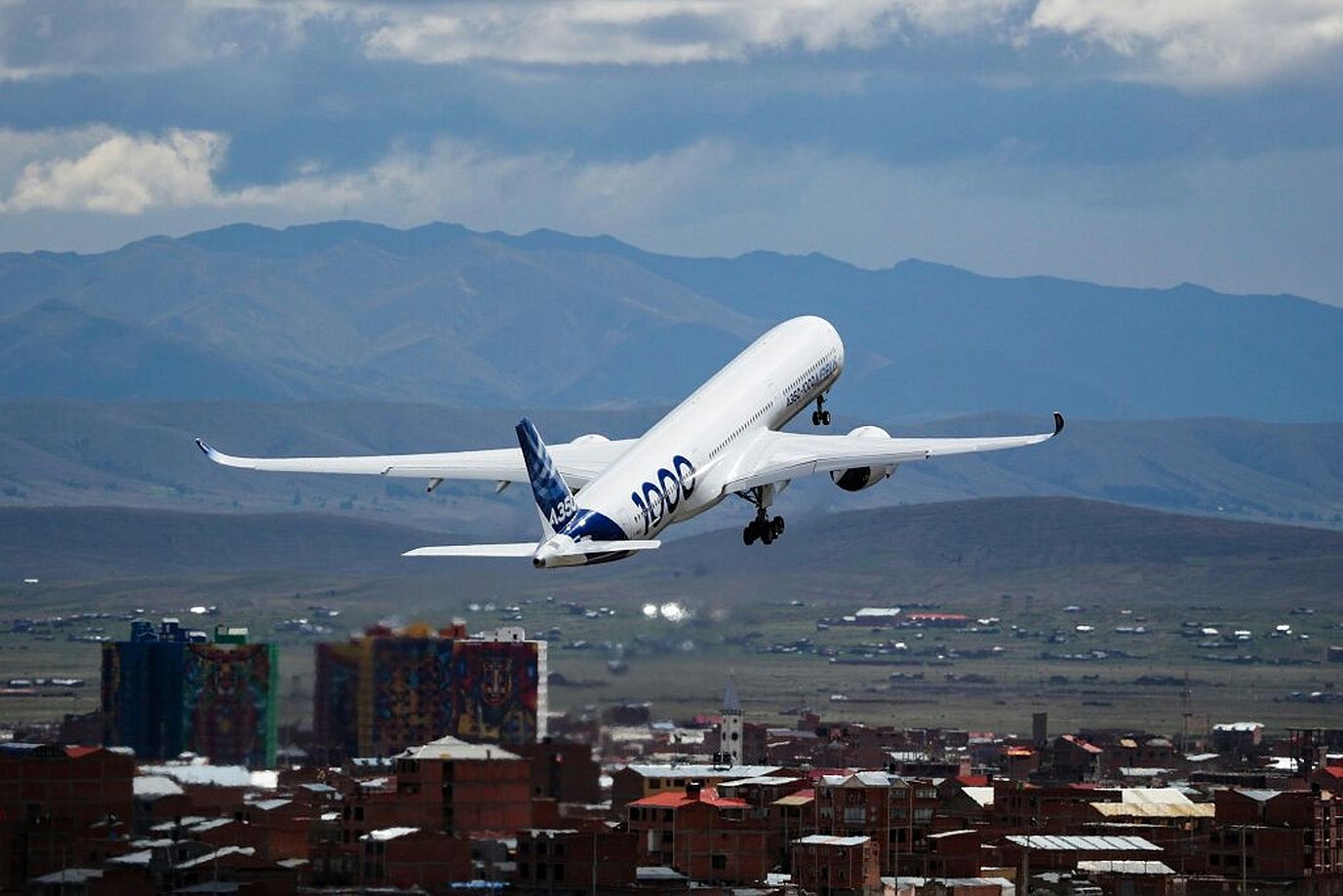
March 27, 2017 Montr?al Commercial Aircraft, Press Release
Bombardier Commercial Aircraft confirmed today that a C Series aircraft with a representative payload successfully flew non-stop from London City Airport (LCY) to John F. Kennedy (JFK) Airport in New York City. The direct intercontinental flight followed a series of successful flights to demonstrate the CS100 aircraft?s exceptional capabilities for operations to and from LCY, including steep approach landing and short runway performance.
?The C Series aircraft program achieved another significant milestone with the completion of the demonstration tests at LCY. The C Series is the only commercial aircraft that was specifically designed for operations at LCY and we are very proud of its performance. The aircraft smoothly performed all eight take-offs and landings during a two-day period, as planned. This confirms the C Series aircraft?s unparalleled capabilities,? said Rob Dewar, Vice President, C Series Aircraft Program, Bombardier Commercial Aircraft. ?The aircraft is meeting all performance expectations and clearly demonstrates that it is the best performing and most efficient aircraft in the 100- to 150-seat class.?
?It has been a pleasure to welcome the Bombardier CS100 aircraft and its team to London City Airport for the first time, as part of their testing and evaluation process. Following the landmark C Series non-stop flight to JFK, we look forward to the completion of its regulatory certification, followed by entry into commercial passenger operation with SWISS,? added Declean Collier, CEO of London City Airport.
Transport Canada and EASA certifications for steep approach operations with the CS100 aircraft is expected in the second quarter of 2017. Bombardier has extensive experience operating at LCY Airport with various aircraft types, including the Q400 turboprop aircraft, as well as the Challenger 650 aircraft and Global 5000 and Global 6000 business jets.
The CS100 aircraft is the most efficient and economical commercial aircraft allowing airlines to viably offer direct intercontinental flights from LCY Airport to both North America as well as the Middle-East on top of opening numerous new route opportunities within Europe, Russia and Northern Africa, which were not possible with old-generation aircraft.
SWISS is expected to be the first airline to offer service with the C Series to and from LCY later this year.
With the lowest noise and emissions levels of any commercial aircraft in its class, the C Series aircraft is ideal for urban operations and noise-sensitive airports. The CS100 aircraft has a much lower noise footprint compared to other commercial jets, and provides a better quality environment for London residents as it is the quietest commercial aircraft in production.
About C Series Aircraft
The C Series is the only aircraft optimized for the 100- to 150-seat market segment, which drives the aircraft?s phenomenal economic proposition and performance, opening up new opportunities for single-aisle aircraft operation. The C Series aircraft is manufactured by the C Series Aircraft Limited Partnership, an affiliate of the Bombardier Commercial Aircraft segment of Bombardier Inc.
Comprised of the CS100 and the larger CS300 aircraft, the C Series family represents the fusion of performance and technology. The result is aircraft that deliver unmatched performance and economics in the 100- to 150-seat market segment and an 18 per cent lower cost per passenger, making them the ideal candidates to complement larger single-aisle aircraft. Airlines can now operate routes that were previously not profitable or even possible. An improvement in range in excess of 20 per cent out of hot-and-high airports such as Denver, Mexico City or Lhasa has been confirmed.
Bombardier has created a new standard in cabin design and flexibility to ensure an unrivalled passenger experience. The aircraft?s larger seats, overhead bins and windows deliver a wide body feel that offers passengers unparalleled comfort in a single-aisle cabin.
The CS100 and the CS300 aircraft have over 99 per cent parts commonality as well as Same Type Rating. The groundbreaking Pratt & Whitney PurePower? PW1500G engine, combined with the aircraft?s advanced aerodynamics, delivers reduced fuel burn, noise, and emissions ? making the
C Series the most community-friendly aircraft.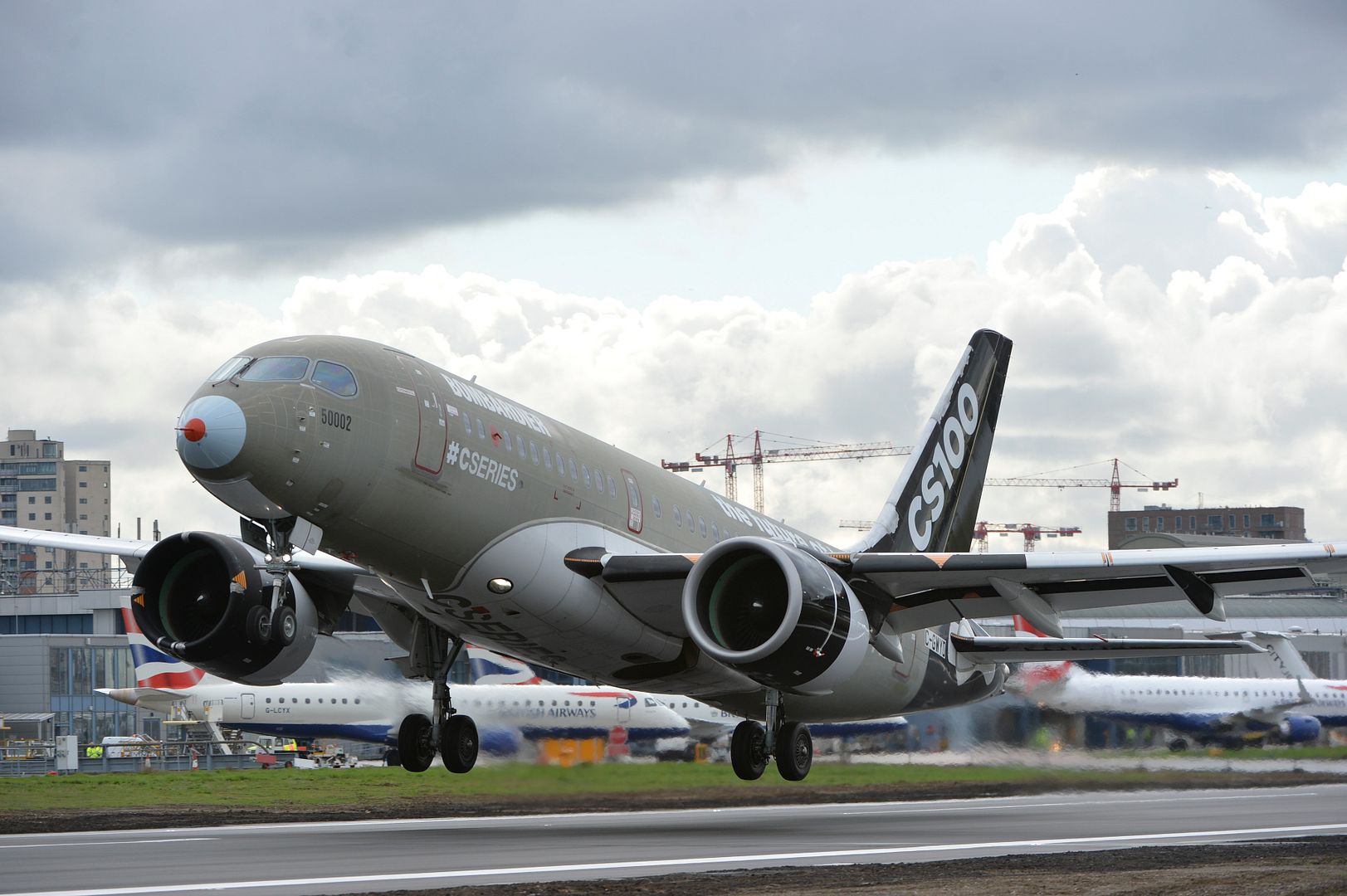
-
 Main AdminA French Air Force Dassault Rafale refuels from a U.S. Air Force KC-10 Extender from the 908th Expeditionary Air Refueling Squadron before aerial refueling during a Combined Joint Task Force - Operation Inherent Resolve mission Mar 20, 2017. The KC-10 provides aerial refueling capabilities for the CJTF as it supports the Iraqi Security Forces and the partnered forces as they work to liberate territory and people under the control of ISIS. (U.S. Air Force photo by Senior Airman Joshua A. Hoskins)
Main AdminA French Air Force Dassault Rafale refuels from a U.S. Air Force KC-10 Extender from the 908th Expeditionary Air Refueling Squadron before aerial refueling during a Combined Joint Task Force - Operation Inherent Resolve mission Mar 20, 2017. The KC-10 provides aerial refueling capabilities for the CJTF as it supports the Iraqi Security Forces and the partnered forces as they work to liberate territory and people under the control of ISIS. (U.S. Air Force photo by Senior Airman Joshua A. Hoskins)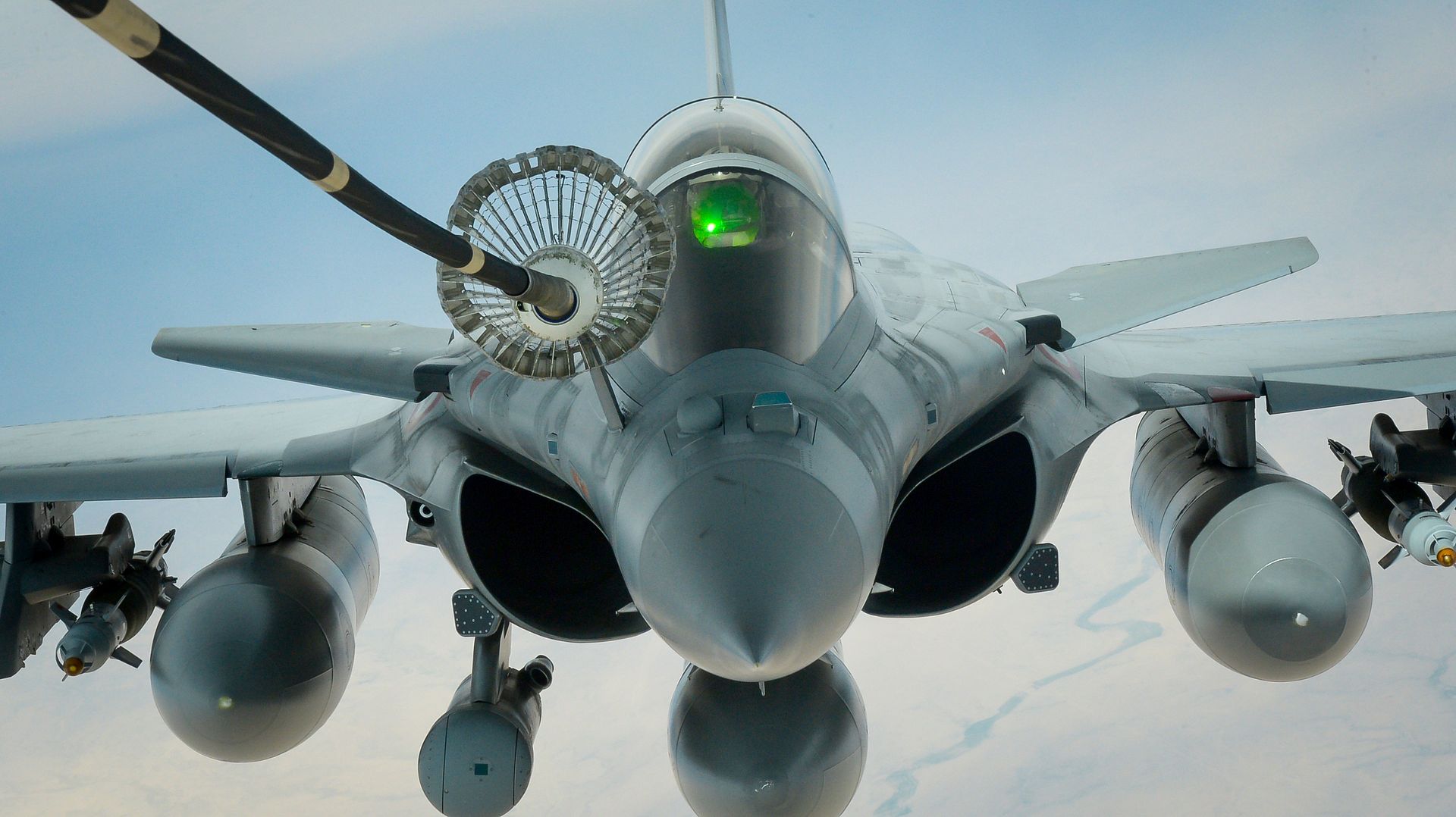
A U.S. Air Force B-52 Stratofortress refuels from a U.S. Air Force KC-10 Extender from the 908th Expeditionary Air Refueling Squadron before aerial refueling during a Combined Joint Task Force - Operation Inherent Resolve mission Mar 20, 2017. The B-52 is a long-range, heavy bomber capable of carrying precision guided conventional ordnance with worldwide precision navigation capabilities. (U.S. Air Force photo by Senior Airman Joshua A. Hoskins)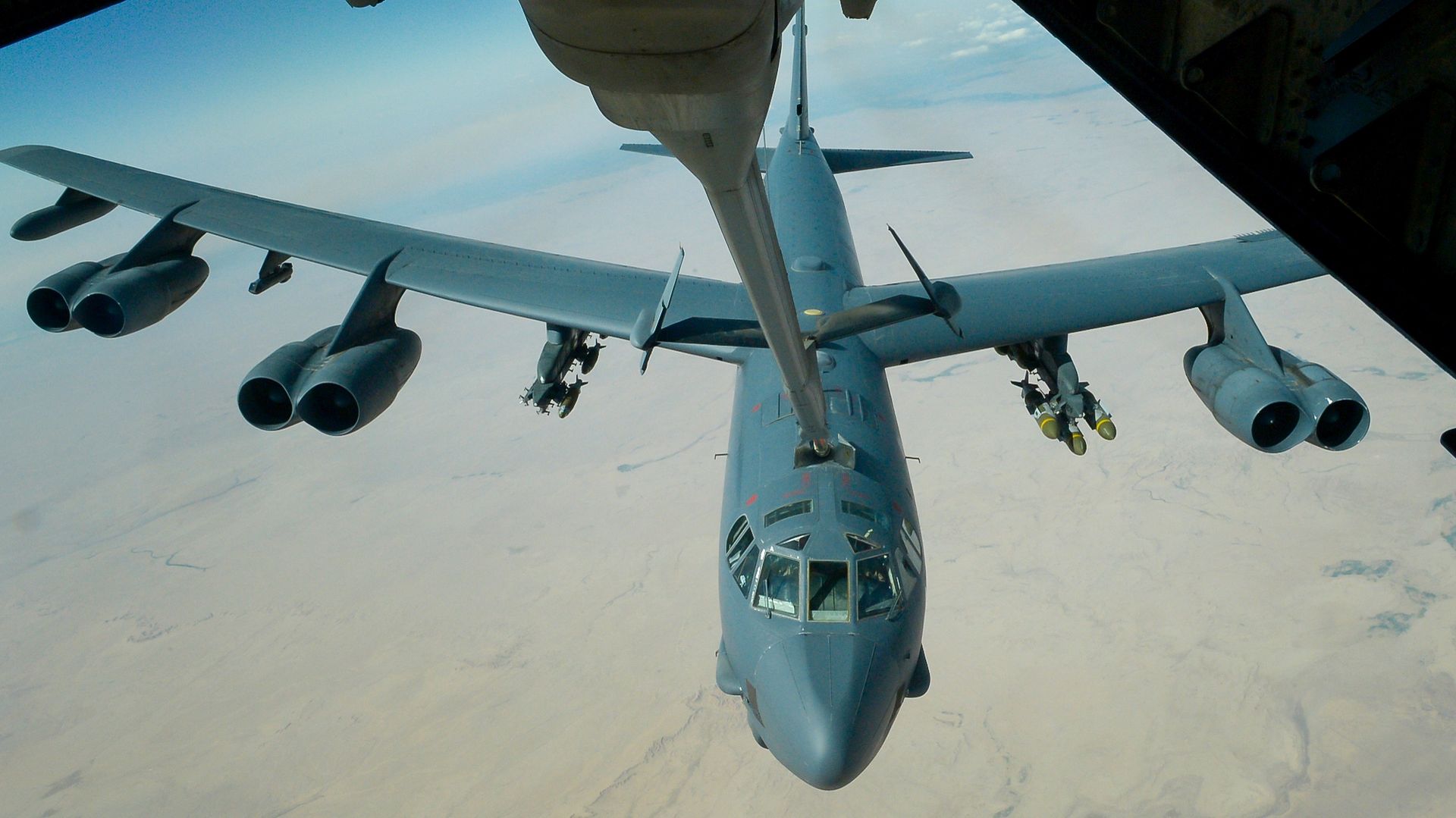
The Patrouille de France officially began its American tour flying over the Statue of Liberty in New York City on Saturday, March 25, 2017 at noon.
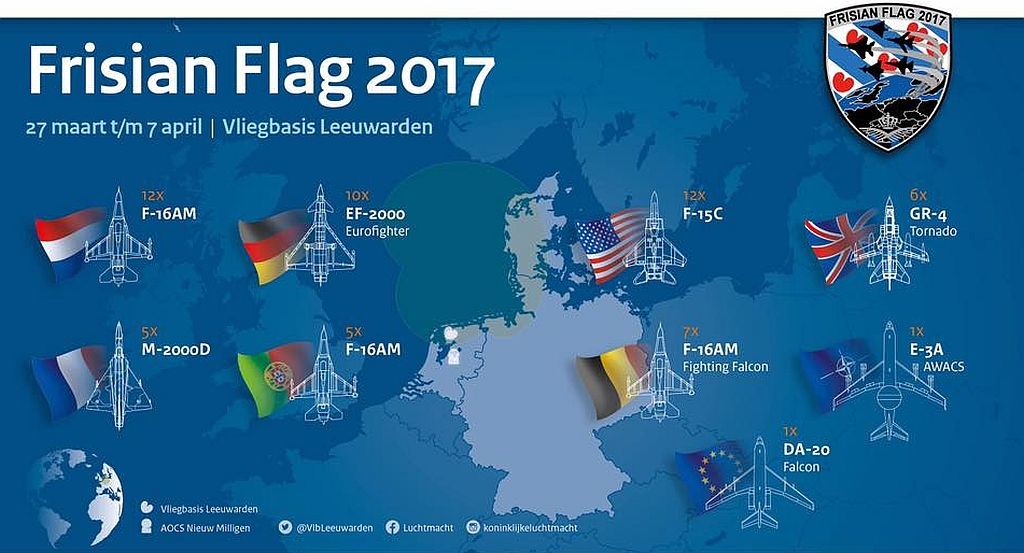
Post a reply
- Go to Next topic
- Go to Welcome
- Go to Introduce Yourself
- Go to General Discussion
- Go to Screenshots, Images and Videos
- Go to Off topic
- Go to Works in Progress
- Go to Skinning Tips / Tutorials
- Go to Skin Requests
- Go to IJAAF Library
- Go to Luftwaffe Library
- Go to RAF Library
- Go to USAAF / USN Library
- Go to Misc Library
- Go to The Ops Room
- Go to Made in Germany
- Go to Campaigns and Missions
- Go to Works in Progress
- Go to Juri's Air-Raid Shelter
- Go to Campaigns and Missions
- Go to Works in Progress
- Go to Skinpacks
- Go to External Projects Discussion
- Go to Books & Resources

